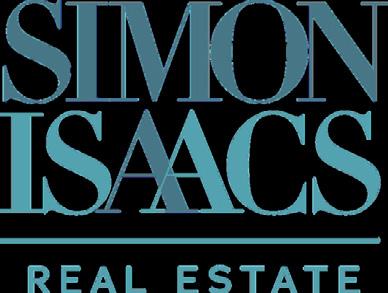

STEPHEN ROSS
The Billion-Dollar Developer Shaping America’s Next Great City







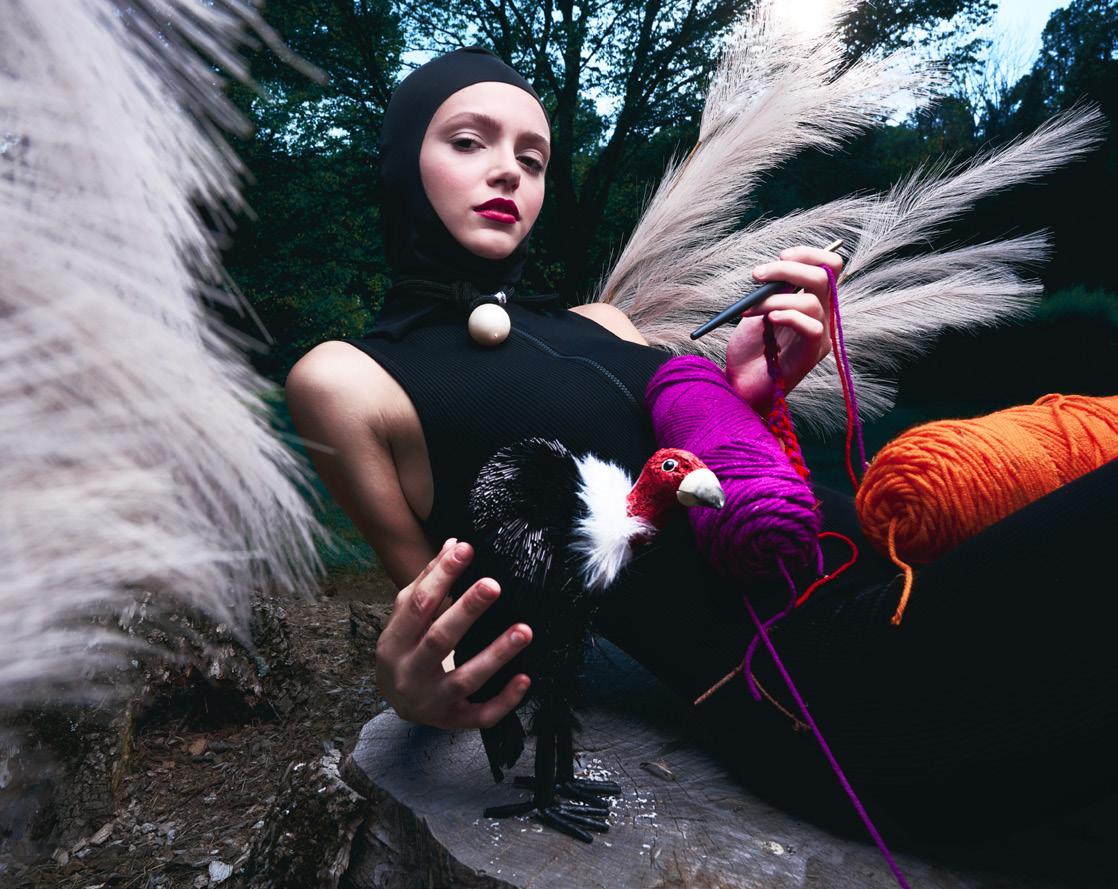

Candice Beaumont

Cristina I. Carbo



HONOREES

Founder, BREDS Foundation, Chairman, Jakes Hotel with the International Humanitarian Award
5 AVENUE CENTRAL PARK SOUTH TH Jason Henzell, O.D.
Joseph ‘Joe’ Bogdanovich Founder and CEO, DownSound Entertainment Limited (DSE) with the International Achievement Award THE PLAZA




t u r n s t o th e s t o ri e d P l a z a H o t e l i n Ne w Yo r k C i ty , o n c e aga i n a ffir m i n g AF J ’ s co mm i t m e n t t o t r a ns f o r m a t i v e l eade r sh i p a n d i m pac t f u l g i v i n g .
A t th e h ea r t o f th e e v e n i n g a r e t w o e x cep t i o n a l h o n o r ee s w h o s e i n fl u e n c e s pa n s i n d ust ri e s a n d ge n e r a t i o ns , J a s o n He nz e ll , O D , a n d J o s ep h “J oe ” Bogda n o v i c h , bo t h v i s i o n a ri e s w h o h a v e ded i ca t e d th e i r li v e s t o u p lif t i n g J a m a i ca ’ s peop l e , c u l tu r e , a n d e co n o m y
J aso n H en z e ll , O . D . – B u il d i n g R es ili enc e Th r oug h C o mm un i t y



A s C h a ir m a n o f J a k e s H o t e l , V ill a s a n d Sp a a n d Fo un de r o f BRE D S , th e Tr ea su r e Beac h F o un da ti o n , J a s o n H e nz e l l h a s r e i m ag i n e d t o u ri s m a s a t oo l f o r sust a i n ab l e de v e l op m e n t . I n Tr ea su r e Beac h , S t . E li z abe th , H e nz e ll’ s w o r k h a s c r ea t e d a t h ri v i n g ec osyst e m r oo t e d i n ed u ca t i o n , h ea l th ca r e , y o ut h e m po w e r m e n t , a n d e nv ir o n m e nt a l st e w a r d sh i p
Fo ll o w i n g th e r ece n t de v a st a t i o n o f H u rri ca n e Be r y l , He nz e l l h a s o n c e aga i n e m e r ge d a s a p ill a r o f s tr e n g th , l ead i n g u r ge n t r e li e f a n d r eb u il d i n g e ff o r t s o n J a m a i ca ’ s s o ut h coa st H e a l s o s e r v e s a s C h a ir m a n o f Ne w e l l H i g h Sc h oo l a n d t h e J H TA So ut h C oa s t
J o e B ogdanov i c h – C ha m p i on i n g J a m a i ca ’ s C u l t u r a l Econo m y

C h ap t e r , c h a m p i o n i n g th e be li e f t h a t co mm un i t i e s t h ri v e w h e n de v e l op m e n t i s l oca l , i n c l us i v e , a n d f o r w a r d -th i nk i n g .
J o s ep h “ J oe ” Bogda n o v i c h , e nt e r t a i n m e n t m og u l a n d p h il a nth r op i st , co nt i nu e s t o sh ap e J a m a i ca ’ s c u l tu r a l l egac y A s C E O o f
D o w n So un d E nt e r t a i n m e n t a n d th e v i s i o n a r y f o r c e b e h i n d Regga e S u m f e st , Bogda n o v i c h h a s e l e v a t e d J a m a i ca n m us i c t o th e g l oba l s t age , c r ea t i n g p l a t f o r m s f o r a rti st s w h il e d r a w i n g w o rl d w i d e i nv e st m e n t a n d a tt e nt i o n
Be y o n d th e st age , D o w n So un d E nt e r t a i n m e n t i nv e st s i n y o ut h de v e l op m e nt , ed u ca t i o n , a n d s oc i a l p r og r a m s , h e l p i n g t o un l oc k oppo r tun i t i e s f o r J a m a i ca ’ s n e x t g e n e r a t i o n o f c r ea t o r s a n d c h a n ge m a k e r s
A n Even i n g o f I m pac t
Se t f o r Fa l l 2025 , th e H u mm i n gb ir d G a l a p r o m i s e s m o r e t h a n a n i g h t o f g l a m o u r , i t i s a ga th e ri n g w i t h h ea r t G u e s t s w il l e n j o y a coc kt a i l r ecep t i o n cappe d b y a li v e pe rf o r m a n c e fr o m acc l a i m e d J a m a i ca n a r t i s t Age n t Sa s co Th e e v e n i n g co n c l u de s w it h a s p iri t e d a f t e r pa r ty , b ri n g i n g t oge th e r pa t r o n s a n d pa r tn e r s i n ce l eb r a t i o n o f p u r po s e . F un d s r a i s e d fr o m th e G a l a d ir ec tl y su ppo r t A FJ ’ s o n go i n g g r a nt m a k i n g e ff o r t s ac r o s s J a m a i c a i m pac ti n g ed u ca ti o n , p u b li c h ea l th , e co n o m i c e m po w e r m e nt , a n d d i s a st e r r eco v e r y th r o u g h pa r tn e r sh i p s w i t h tr ust e d g r a ss r oo t s o r ga n i z a ti o ns To l ea r n m o r e , v i s i t th ea fj. o r g o r co nt ac t e v e n t s @ th ea fj. o r g .




Bounty Uncharted Brings You From Tide to Table Inside Jeff Ragovin’s Elevated Ocean Adventure By Angela Gorman
CRANE CLUB IN NYC Where Culinary Precision Meets Sultry Sophistication By Angela Gorman

LEGACY, LOVE, AND LUXURY Nicky Hilton Talks Entrepreneurship and the Launch of Theo Grace Jewelry By Hillary Latos
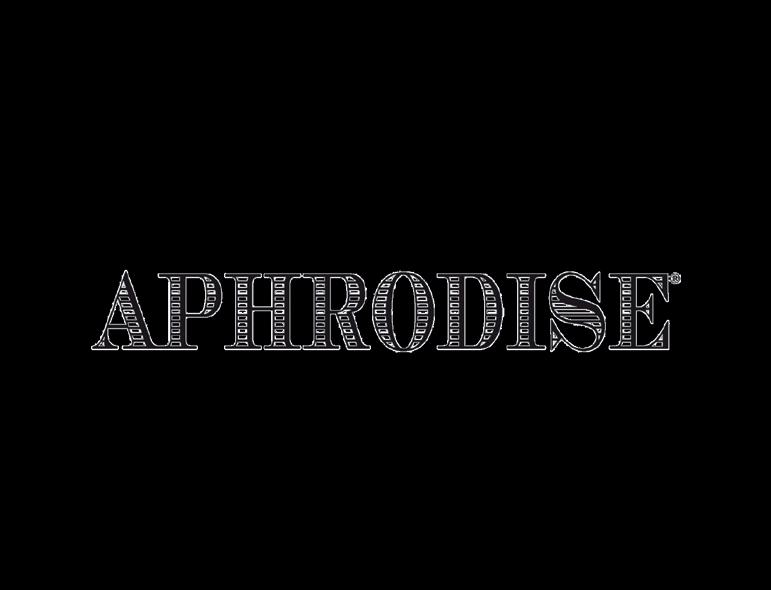




EDITOR’S NOTE Legacy in Motion: Where Vision, Vitality, and Cultural Impact Define a New Era of Influence
At the height of summer, we turn our lens toward the individuals who are not just participating in the moment but defining what the future will look like. This season, no figure looms larger than Stephen Ross. His vision for West Palm Beach is more than real estate. It is a living framework for how prosperity, beauty, and civic purpose can shape a model American city.
Within his work, we see the blueprint of modern influence. It is measured not only in buildings, but in community impact, access, and intention. This issue opens with Ross’s long view and the extraordinary sense of scale and stewardship that comes with it.
Also featured this season are stories of transformation in other arenas. Johnny Damon introduces a wellness product that reflects both elite performance and everyday balance. The Parrish Art Museum presents a cultural calendar filled with visual energy and creative curiosity. Precision Drive Club offers a new lens on luxury through the thrill of speed and design.
For those eyeing winter escapes, Ikonic Yachts offers curated charters and ownership services across the Caribbean, including Jamaica, Anguilla, and St. Lucia. Their bespoke approach makes yachting feel less like a transaction and more like a tailored lifestyle.
Among this season’s standout tastemakers, Nicky Hilton introduces Theo Grace, a jewelry collection inspired by her daughters that blends elegance with personal meaning. It’s a modern expression of legacy through design.
Each piece in this issue carries a through line of momentum. Some of it is bold, some of it quiet, but all of it is meaningful. Together, these stories reveal a shift in what it means to lead. Not just to influence, but to inspire.

Wherever this summer takes you, we hope this issue brings with it a sense of possibility and purpose. The kind of influence that endures. The kind that builds something that lasts.
Candice Beaumont Managing Editor





ORA WORLD PUERTO RICO
+2.5K +19M
Land Area (Acres)
Floor Area (SQ FT )

+1.5M +6.5K +200
Amenities
(SQ FT ) Apartments











Ora World is more than a destination it’s a movement We’re redefining the way people live by maximizing time, optimizing wealth, and elevating the human experience We exist to erase limitations and create a future where life is effortless, exhilarating, and endlessly rewarding even offering access to a shared private charter jet
W H Y P U E R T O R I C O :
Some call it a tax haven We call it freedom With 0% tax on short- and long-term capital gains and dividends, and just a 4% tax rate on qualified ordinary income, Ora World isn’t just a place to live it’s a financial advantage, a smarter investment, and a passport to a freer future
W H Y O R A W O R L D :
Ora World is a world of longer, better lives where every second counts, every detail is intentional, and every opportunity is within reach.
We deliver a life of intensity, purpose, and seamless luxury through:
A smarter way to live with financial freedom, tax advantages, and global connectivity.
A longer way to live with proactive wellness, longevity-focused healthcare, and low-stress living
A richer way to live where culture, adventure, and a community of visionaries create a world of constant discovery and reinvention
































Hillary Latos EDITOR IN CHIEF
Candice Beaumont MANAGING EDITOR
Emil Pavlov ART DIRECTOR
Jaime Pavon, Daniel Perry CONTRIBUTING PHOTOGRAPHERS
Neal Berger, Janelle Brown, Cristina Carbo, Maria Gutierrez, Dorian May, Amy Poliakoff, Hannah Rose, David Seidman CONTRIBUTORS
Angela Gorman, Adam Weiss PUBLISHERS
Colin Thompson DIRECTOR OF SPONSORSHIP
Impact Wealth Media LLC 222 Broadway, 18th Floor, New York, NY 212 542 3146 www.impactwealth.org info@impactwealth.org




A JOURNEY STARTING FROM THE HOME OF TEQUILA
Our intention was to create world class premium tequilas that we would be proud to put our name to.
All Naked Diablo Tequila’s are handcrafted using traditional methods of manufacturing.
Naked Diablo have partnered up with Mexico's most awarded distillery. They supply tequila for the likes of basketball legend Michael Jordan's (and his four other billionaire NBA team owner partners) company, Cincoro, 21 Seed (which has just had a nine-figure buy-in from Diageo because they only sell flavored tequila), Tesla Tequila, and many others.
Using only the best sustainably sourced quality blue weber agave taken from the highlands and lowlands of Jalisco. Adding these agaves with the natural volcanic spring water that flows through the distillery to enhance our unique and incredible taste.
Combining the baking processes of both traditional ovens covered in stone masonry and autoclaves to create ultra smooth premium tequila’s for our customers....
We currently have eight Sku's. Blanco, Reposado,Anejo, Extra Anejo, Vanilla, Cinnamon,Coffee, and Blanco 55% Extra Strength.
We also have several new tequila flavors ready in the pipeline.
Naked Diablo can be purchased on premise and off premise in hundreds of locations like; ABC Liquor Stores, Total Wines, and restaurants like El Diablo Tequila & Taco Bars.
Naked Diablo can also be purchased from US online retailer Reservebar.com, giving us access to over 200 million online consumers in 40 US states.
Through ReserveBar, people can place an order online, and Naked Diablo tequila can be delivered to the customer's door.
To know more, please visit www.nakeddiablo.co


AI AND INSURANCE
How Do We Protect Our Company?
A data breach caused by an AI vulnerability, a product liability claim stemming from AI bias, and many other scenarios could wipe out the gains created from using generative AI. Even worse, the company’s existence could be placed at risk. An obvious question must be asked: "Is the company truly insured for these risks?"
By David Seidman
Obvious risks from using generative AI include:
• Data Poisoning: Malicious actors
• corrupting the training data.
• Bias and Discrimination: The risk of AI systems perpetuating or amplifying societal biases.
• Copyright Infringement: The risk that the AI output will violate another’s copyright or intellectual property rights.
• Privacy Violations: The risks related to the collection and use of personal data.
• “Hallucinations” and Inaccurate Outputs: The risk of AI generating false or misleading information.
• Security Vulnerabilities: The risks related to AI systems being exploited by hackers.
The Illusion of Coverage: Why Existing Policies May Fall Short
Don’t fall into the trap of thinking, “We have insurance, we’re covered.” Many business leaders assume their existing policies will protect them from AI-related mishaps. However, standard policies often have exclusions or limitations that can leave companies exposed. The excitement around new generative AI initiatives can overshadow the critical need to assess and insure against potential downsides, including accidental misuse, malicious attacks, or even unintended biases in the AI’s output.
The AI Insurance Boom: Lessons from the Cyber Insurance Rollercoaster
The market for AI risk insurance is poised for explosive growth, mirroring the rise of cyber insurance. But remember the lessons learned from cyber: (1) insurers excluded, or tried their best to exclude, cyber risks from standard policies to drive customers to buy their new cyber policies; (2) many of the insurers created complex cyber policies, with convoluted terms and conditions and limited buckets of coverage to protect themselves from large losses; and (3) the insurers aggressively contested claims. A similar pattern can be expected with AI.
A Cautionary Tale: How a Cyber Insurance Claim Was Rescinded After a Loss
Consider the cautionary tale of cyber insurance: One company answered questions truthfully on its insurance
application but did not fully disclose the scope of its implementation of multi-factor authentication (MFA). Following a large loss after a breach occurred in an area without MFA, the insurer sued to rescind the entire policy, claiming misrepresentation. This highlights a critical point: after a loss, expect the insurer to scrutinize the application for even minor discrepancies to deny coverage. Be prepared for the same level of scrutiny with AI insurance.
Boardroom Responsibility: Understanding and Mitigating AI Risks
The board of directors has a fiduciary duty to understand and mitigate risks. With AI, that means proactively identifying potential failure points and ensuring adequate insurance coverage. Treat this like any other major strategic risk – conduct scenario planning, assess potential liabilities, and demand a clear insurance strategy.
Anticipate the Unthinkable
Use creative thinking when assessing risk. Generative AI is so new and rapidly evolving,
there is not much history to rely on. Gather a team together and brainstorm the different ways an AI product can be misused or exploited by criminals with bad intentions. For instance, MITRE Adversarial Threat Landscape for AI Systems (ATLAS) maintains a knowledge base of adversary tactics and techniques based on real-world attack observations and realistic demonstrations from AI red teams and security groups. This would be a great place to start an analysis to learn how other AI-enabled products and services have been misused and exploited.
Beyond Crosswalks: Real-World AI Disasters and Insurance Blind Spots
Look at other AI-enabled product and service mishaps in the news. For instance, companies developing self-driving cars initially anticipated pedestrians crossing in front of the cars only near crosswalks. Jaywalkers who crossed in front of the cars mid-street were sometimes killed, were not even considered as a possibility.
Consider the implications for a health care company using AI for diagnostics:


what if a malicious actor poisons the training data, leading to misdiagnosis and patient harm? Or what if the AI product diagnoses cancer incorrectly, leading to delayed treatment and patient death?
For a financial services firm: what if an AIpowered trading algorithm makes biased decisions that violate fair lending laws to unfairly deny loans to minority applicants? This could lead to regulatory investigations and class action lawsuits under fair lending laws.
A standard Commercial General Liability (CGL) policy provides product liability coverage. However, many of these policies also include a computer software exclusion by way of an endorsement. The exclusion states that insurance coverage “does not apply to ‘bodily injury’, ‘property damage’, or ‘personal and advertising injury’ arising out of the rendering of or failure to render any service in connection with the selling,
licensing, franchising or furnishing of computer software, including electronic data processing programs, designs, specifications, manuals and instructions.” Bottom line: in these circumstances, the product liability coverage in a CGL policy likely will not pay the cost to defend a company from a lawsuit, let alone for any settlement or judgment entered against an individual.
Copyright Catastrophe: Will Insurance Cover AI-Generated Infringement?
Imagine a more innocuous use of generative AI: A marketing team uses generative AI to generate a catchy ad campaign. However, the AI pulls content that infringes on a competitor’s copyright. A lawsuit follows, alleging copyright infringement and unfair trade practices. Legal bills skyrocket and the brand reputation takes a hit. Is insurance going to cover it? Dig deeper because the answer may not be what is expected …
Decoding a CGL Policy: What’s Covered, What’s Not
A CGL policy might seem like a safety net, but it has limitations. It might cover copyright infringement in advertisements, but what about AI-generated content used in oneon-one sales pitches, product descriptions, or investor reports? The definition of “advertisement” matters and courts often interpret it narrowly. This means there would likely be no insurance coverage to provide a defense for a company for the sales pitch, product description, or investor report that violates a competitor’s copyright. Moreover, CGL policies have additional exclusions if a company is in the business of advertising or web design. Review standard policies carefully to see if they adequately cover AI-related risks.
Beyond CGL: Exploring Other Potential Coverage Options — and Their Limits
Next, look to the company’s other insurance policies:
• Cyber policies may offer some coverage for “media incidents,” but the definitions are narrow and may not cover all AI-related risks.
• Professional liability (E&O) policies and IP insurance are worth exploring, but they may not be a perfect fit.
• Many D&O policies exclude cyber risks, so be sure to check the fine print.
• Specific AI insurance policies may offer coverage, but it is important to critically analyze the policy’s terms and conditions to see how the coverage is whittled away through definitions, limitations, and narrow buckets of coverage. It is also important to vet the insurer – do they have a history of paying claims or a reputation for denying claims and suing their policyholders to disclaim coverage?
Do Not Wait for the Crisis: Proactive Steps to Protect the Company
Do not wait for a crisis to discover a company is underinsured. As an owner, officer, or director, there is a responsibility to act now. Conduct a thorough insurance review with someone who understands both AI and insurance. And demand a clear, comprehensive insurance strategy that protects the company from the unique risks of generative AI.

THE TOP 10 PHILANTHROPISTS Reshaping the World
How today’s boldest givers are using their fortunes to fight inequality, advance health, save the environment, and redefine impact.
By Candice Beaumont
In a world increasingly shaped by inequality, environmental crises, and health challenges, a select group of billionaires are channeling their fortunes into something for maximum lasting impact for the good of society. A new era of global giving is being shaped by visionaries who view wealth not as an end, but as a means to uplift others. These billionaires are not merely donating money. They are deploying capital strategically to reshape broken systems, empower underserved communities, and fund groundbreaking innovation that can outlast lifetimes.
As Warren Buffett once said, “If you're in the luckiest 1% of humanity, you owe it to the rest of humanity to think about the other 99%.” This ethos is echoed by peers like Chuck Feeney, who pioneered the “giving while living” movement and gave away nearly his entire fortune in silence. Major philanthropists often emphasize that their role is to take bold risks and tackle the

toughest problems, including those too complex or uncertain for government or business, and using their capital as a catalyst for innovation, equity, and long-term change. The philanthropists on this list are taking those bold risks, and in doing so, redefining what it means to build a legacy that serves not self, but society. American billionaires dominated the list, underscoring a strong culture of generosity and a deep commitment to giving back in the United States. Their philanthropic efforts reflect a uniquely American tradition of using personal wealth to drive social change, fund innovation, and invest in the future of communities both at home and around the world. Everyone on the list is American unless otherwise indicated below.
Here's the Top 10 list, based on lifetime giving, impact, and global influence.

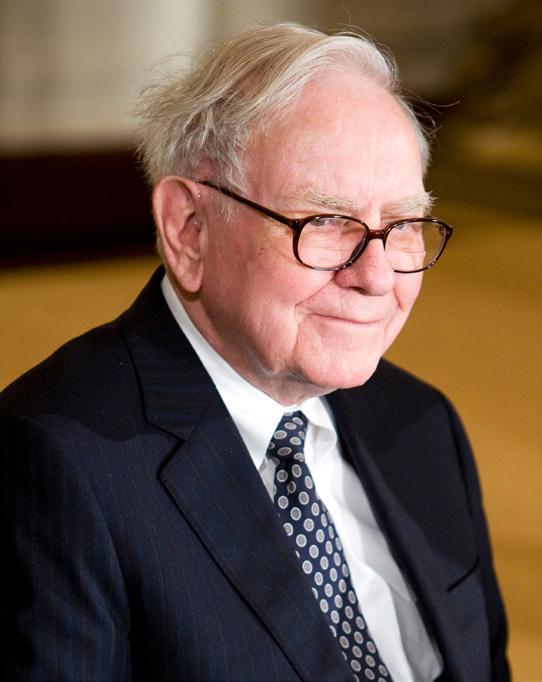
1. WARREN BUFFETT
Lifetime Giving: $51+ billion
Focus Areas: Global health, education, poverty alleviation
Impact: The Oracle of Omaha, with a net worth over $144 billion remains the North Star of modern philanthropy. With more than 99% of his wealth pledged to charitable causes, Buffett has turbocharged initiatives like global vaccine distribution, health infrastructure in the Global South, and educational equity across continents. His practical wisdom has inspired a new generation of “giving billionaires.” In 2010, Buffett co-founded the Giving Pledge, committing billionaires to donate the majority of their wealth during their lifetimes.
“Giving money away is easy. Doing it well is fiendishly difficult.” — Warren Buffett
The Oracle of Omaha has pledged more than 85% of his fortune to charitable causes, with a large portion going to the Gates Foundation and other family initiatives
2. BILL GATES & MELINDA FRENCH GATES
Combined Lifetime Giving: $45+ billion Focus Areas: Global health, gender equity, education, family planning
Microsoft founder Bill Gates with a net worth over $117 billion has been a global leader in giving. Whether together or separately, Bill & Melinda Gates continue to influence global systems. Their efforts


have nearly eradicated polio, boosted maternal health, and supported climateresilient agriculture, and education. The foundation has supported international organizations including the GAVI Alliance, WHO, UNICEF, and The Global Fund to Fight AIDS, Tuberculosis, and Malaria. Melinda’s focus on empowering women and girls, particularly in the Global South, has made her one of the most important voices in gender-focused philanthropy.
3. AZIM PREMJI
Nationality: Indian
Lifetime Giving: $21+ billion
Focus: Public education and rural development
Widely hailed as the most generous man in India, Azim Premji built his fortune transforming a small family vegetable oil business into Wipro, one of India’s largest and most respected IT and consulting firms. With an estimated net worth of $25 billion at his peak, Premji has pledged more than half of it to philanthropy, becoming a global leader in charitable giving. Through the Azim Premji Foundation, he has supported over 350,000 schools across underserved regions of India, focusing on systemic, long-term reform in public education. His initiatives prioritize teacher training, equitable access, and curriculum development— foundations for lasting change. In 2010, he launched Azim Premji University, a nonprofit institution dedicated to developing leaders in education and public service. Premji’s approach to giving is deeply intentional— building institutions and empowering communities with the goal of creating a more just, educated, and inclusive society.
Photo: Kristoffer Tripplaar/Alamy
Photo: batmoo / Flickr / Wikimedia Commons, licensed under CC BY-SA 2.0
Photo: Dana Smillie / World Economic Forum / Wikimedia Commons, licensed under CC BY-SA 4.0

4.
Lifetime Giving: $17+ billion
Focus: Climate change, public health, education, gun safety
With a net worth over $104 billion, Michael Bloomberg is the founder of financial data analytics leader Bloomberg LP and former mayor of New York City. He has leveraged both his platform and assets to champion a wide range of causes, from environment, the arts, government innovation, and education to public health. Through Bloomberg Philanthropies, he has funded anti-smoking initiatives, global road safety programs, arts and cultural institutions, and renewable energy projects, while also supporting the World Health Organization, Johns Hopkins University, and pandemic preparedness efforts. His foundation has invested heavily in ocean conservation, gun safety reforms, and initiatives like the “What Works Cities” program, which helps over 100 U.S. cities adopt datadriven governance and improve quality of life for their residents. In 2024 alone, Bloomberg Philanthropies invested $3.7 billion around the world, according to Bloomberg Philanthropies.
Bloomberg Philanthropies leads one of the most data-driven approaches in the giving world. His funding has powered clean energy transitions in more than 500 cities, backed global anti-smoking campaigns, and supported science-based gun reform in the U.S. His work is proof that data and dollars can reshape policy.
5. MACKENZIE SCOTT
Lifetime Giving: $19+ billion
Focus: Unrestricted, trust-based giving
After securing billions in her divorce settlement from Jeff Bezos, MacKenzie Scott is quietly rewriting the rules of philanthropy. Rejecting traditional bureaucracy, she gives large, no-strings-attached gifts to grassroots and community-led organizations—often within weeks of first contact. Her funding has empowered thousands of nonprofits, with a strong focus on racial justice, gender equality, and local impact.
She has given away over $19.25 billion to more than 2,400 organizations since 2019 through her Yield Giving initiative. Her approach is radically different—no applications, no reports, no restrictions. Instead, her team identifies organizations doing impactful, often overlooked work and awards them grants ranging from $1 million to $50 million. In 2025, she expanded her strategy to include investments in socially driven for-profit companies. A writer by background, Scott’s giving philosophy is rooted in generosity and humility, inspired by author Annie Dillard’s idea that “anything you do not give freely and abundantly becomes lost to you.”


Nationality: Saudi Arabia
Lifetime Donations: $16 billion
Focus: education, healthcare, religion, and social development.
Sulaiman bin Abdul Aziz Al Rajhi, one of Saudi Arabia’s most influential businessmen, is also celebrated as one of the world's most generous philanthropists. Co-founder of Al Rajhi Bank, the largest Islamic banking institution, Al Rajhi amassed a multibilliondollar fortune through banking, agriculture, and real estate. In 2011, he made global headlines by transferring the majority of his wealth, estimated at over $16 billion into an endowment for charitable causes, making it one of the largest single acts of philanthropy in the Arab world. This act of philanthropy removed him from the list of billionaires.
His philanthropic work focuses heavily on education, health care, poverty alleviation, and Islamic scholarship. He established the Sulaiman Bin Abdul Aziz Al Rajhi Charitable Foundation to manage these donations. He established Al Rajhi University, which offers programs in medicine, engineering, and Islamic finance, and has funded hundreds of mosques, schools, and hospitals across Saudi Arabia and beyond. He also supports programs that promote food security and sustainable agriculture. Al Rajhi's approach is deeply rooted in Islamic principles of Zakat (charitable giving) and Waqf (endowment), and he has become a role model for modern Islamic philanthropy—demonstrating how wealth can be used to empower communities and advance social development on a national scale.
MICHAEL BLOOMBERG
6. SULAIMAN BIN ABDUL AZIZ AL RAJHI
Photo: Image Press Agency/Alamy
Photo: Courtesy of Bloomberg Philanthropies
Photo: Unknown photographer / Wikimedia Commons, licensed under CC BY
7.
CHARLES FRANCIS FEENEY
Lifetime Donations: $8+ billion
Focus: Education, health, human rights, world peace
Charles "Chuck" Feeney was a pioneering philanthropist best known for giving away nearly his entire fortune, over $8 billion during his lifetime. A co-founder of Duty Free Shoppers, Feeney quietly amassed wealth and then chose to live modestly, often flying coach and renting apartments, while channeling his riches into causes he believed in through his foundation, The Atlantic Philanthropies.
His donations focused on education, health, human rights, and peacebuilding, supporting universities like Cornell, public health initiatives in Vietnam and South Africa, and efforts to advance aging and dementia research. Feeney’s “Giving While Living” philosophy inspired the Giving Pledge movement, which encourages billionaires to give away their wealth in their lifetimes. By the time he shuttered his foundation in 2020, Feeney had retained just a small amount to support himself and his wife. He died in 2023 at age 92 and fulfilled his goal of “dying broke” and redefining what it means to give with purpose.
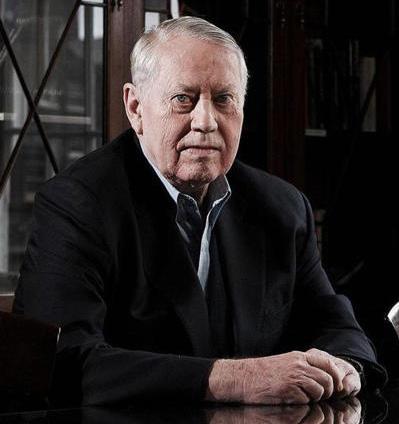
8. GORDON MOORE
Lifetime Donations: $5 billion
Focus: health, environmental conservation scientific advancements
Tech entrepreneur Gordon Moore made his fortune as co-founder of semiconductor and computer chip component company Intel. Gordon Moore and his wife, Betty, donated over $5.1 billion to charitable causes through the Gordon and Betty Moore Foundation and personal philanthropy. This substantial giving focused on environmental conservation, scientific advancements,
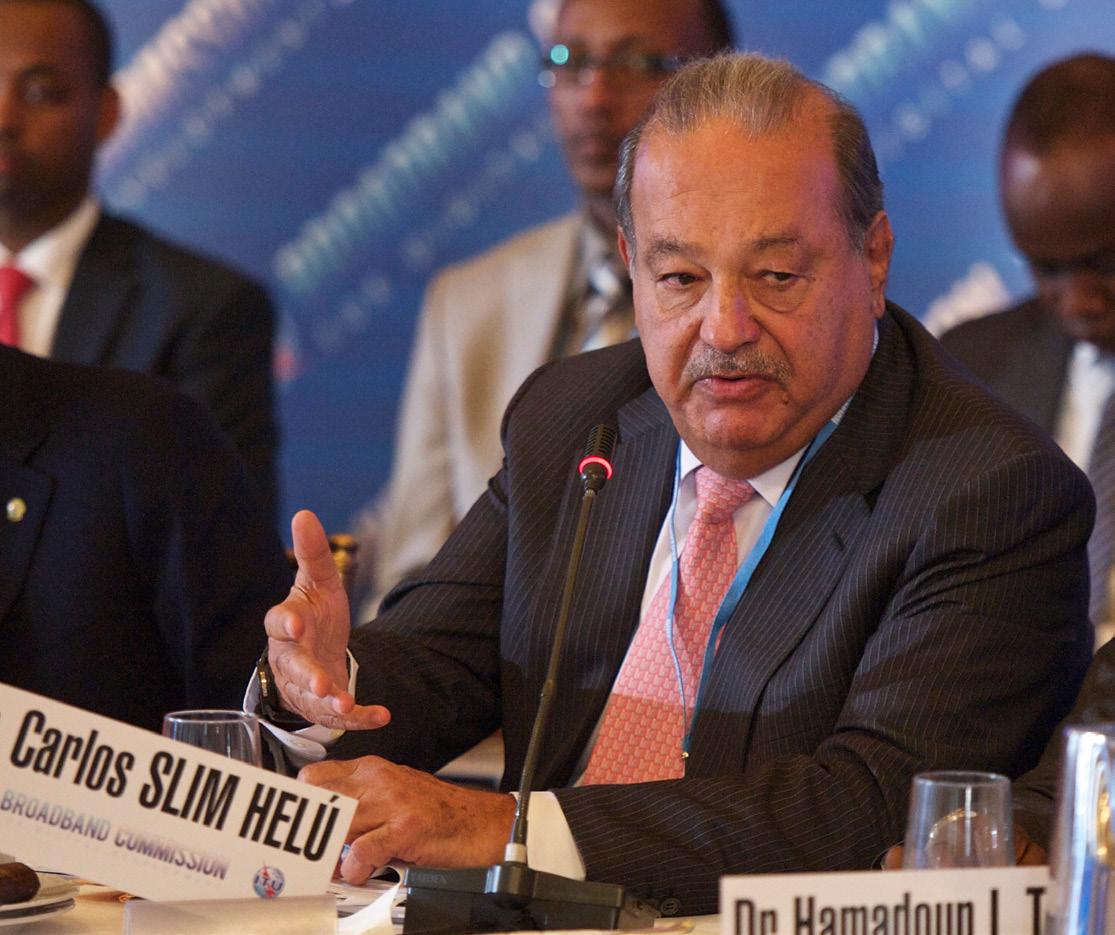
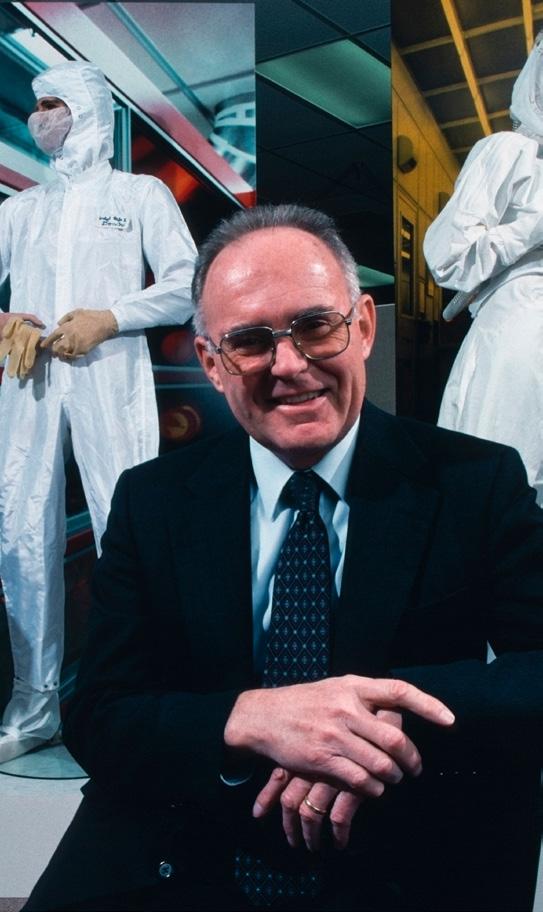
astronomical research and improvements in patient care. The foundation itself, established in 2000, has a significant endowment and budget, and has funded numerous projects and initiatives in its focus areas.
9. CARLOS SLIM HELÚ Nationality: Mexico
Lifetime Donations: $4 billion
Focus: health, education, disaster relief, job creation
Carlos Slim Helú, Mexico’s richest man with an estimated net worth of over $90 billion, has quietly become one of Latin America’s most impactful philanthropists. Since founding Fundación Carlos Slim in 1986, he has donated over $4 billion to programs focused on health, education, disaster relief, and job creation. Signature efforts include the Mesoamerica Health Initiative, which has improved care for millions of women and children, and a free online job-training platform covering 200+ occupations. His Telmex Foundation also supports infrastructure development across Mexico. Though he rejects the Giving Pledge, Slim believes in solving poverty through employment and sustained effort, not passive giving. This is an ethos that defines both his business and philanthropic approach.
Photo: Chuck Nacke/Alamy
Photo: Charles F. Feeney ’56, Atlantic Philanthropies Archives – Rare and Manuscript Collections, Cornell University
Photo: I. Wood / ITU Pictures / Wikimedia Commons, licensed under CC BY 2.0
Photo: Ringo Chiu/ZUMAPRESS.com/Alamy Live News

10. ELI BROAD
Lifetime Donations: $4 billion
Focus: arts, education, science, healthcare research
Eli Broad was a self-made billionaire whose career spanned real estate, insurance, and finance. He first made his fortune by co-founding Kaufman and Broad Home Corporation (now KB Home) in the 1950s, pioneering affordable, mass-produced suburban housing in post-war America. Later, he expanded into the financial services industry by acquiring Sun Life Insurance, which became Sun America, a retirement savings giant eventually sold to AIG for $18 billion in 1999. These ventures established Broad as one of the few people to build two Fortune 500 companies in entirely different industries.
A devoted philanthropist, Broad gave away more than $4 billion during his lifetime, focusing on education reform, scientific research, and the arts. He and his wife, Edythe, founded The Broad Foundation, which supported public school innovation and charter school expansion across the U.S. They also created the Broad Institute in partnership with MIT and Harvard, now a world-leading biomedical research center. In Los Angeles, the Broads were transformative figures in the arts, funding institutions like The Broad museum, MOCA, and LACMA, and helping to revitalize downtown LA’s cultural landscape. Broad believed in "venture philanthropy” by bringing the strategic, results-driven mindset of business into the nonprofit world to drive lasting change.
Other notable philanthropists include
Hong Kong’s richest man Li Ka-shing, who initially made his wealth in plastics before diversifying into ports & technology. He has donated almost $4 billion with a focus on health and education.
George Kaiser, the Oklahoma based oil magnate whose lifetime donations exceed $3 billion and focuses on early childhood education, healthcare access and community revitalization.
Phil Knight who founded the sports brand Nike whose Knight Foundation, which he controls with his wife, Penelope, and son, Travis. The foundation has grown to over $5 billion in assets and has donated over $3 billion to charity. Major donations include a $1 billion gift to the University of Oregon for the Campus for Accelerating Scientific Impact, and a $400 million pledge to Stanford’s Knight-Hennessy Scholars program. Donations focus on higher education, university infrastructure (Oregon, Stanford).
Mark Zuckerberg & Priscilla Chan whose lifetime giving is over $3 billion. Mark Zuckerberg, through the Chan Zuckerberg Initiative, has committed billions to education, science, and criminal justice reform, aiming to "cure, prevent, or manage all disease" by the end of this century.
Yvon Chouinard (Founder of Patagonia) whose lifetime giving is over $1.5 billion He donated approximately 98% of his company (valued at around $3 billion) to environmental causes, ensuring that Patagonia’s post-reinvestment profits—estimated at $100 million per year—are directed to combat climate change and preserve biodiversity via the Holdfast Collective and Patagonia Purpose Trust.
Oprah Winfrey, who has donated $1.8 billion committed to women’s education and empowerment through her leadership academy and global initiatives.
Reed Hastings, the Netflix co-founder who donated $1.1 billion in 2024 to higher education and medical scholarships.
Redefining Legacy
This list proves that giving isn’t just about wealth. It is about will. Whether motivated by justice, science, education, or equity, these philanthropists are demonstrating that capital when coupled with vision can catalyze extraordinary change. Their generosity is not just measured in dollars, but in lives improved and systems transformed.
GIVING WITH VISION
Why Today’s Wealth Requires Purpose, Privacy, and Stewardship
By Ken Harrison

When families build great wealth, they quickly learn something that few people talk about— giving is more complicated than it looks.
How do you give generously without drawing unwanted attention?
How do you support causes you care about without turning your name into a headline? How do you involve your family without fracturing relationships?
These are the conversations I’ve been having for the past decade with some of the most influential leaders in America. And time and again, the solution that gives them peace of mind is the same: a donor-advised fund.
Why Donor-Advised Funds Are the Quiet Superpower of Smart Philanthropy
A donor-advised fund (DAF) allows you to make a charitable contribution, receive immediate tax benefits, and then recommend grants to charities over time. But for the families I serve, DAFs provide something even more valuable than tax advantages—they provide freedom, flexibility, and privacy.
With a well-structured DAF:
• You can give anonymously, avoiding public exposure and solicitation
• You can involve your children in charitable decision-making without gifting them money directly
• You can donate complex assets like business interests or real estate, converting them into charitable capital while avoiding capital gains and receiving a tax deduction
• And most importantly, you can align your giving with your family’s values in a way that is simple, secure, and discreet
Compared to private foundations, DAFs are often the smarter choice for today’s highcapacity families. The DAF structure comes with less overhead, no public 990 disclosure requirements, greater flexibility, bigger charitable tax deductions and significantly more privacy. They also avoid the payout rule and the excise tax on investment income. Consider these specific advantages of a DAF:
• Tax deduction of up to 60% of AGI for cash contributions to a DAF, compared to 30% for a private foundation

• No 1.39% excise tax on investment income
• No 5% minimum distribution requirement based on assets
• Significantly lower administrative burden and compliance requirements
For families already managing a private foundation, a DAF can complement your existing strategy—or even replace it with less overhead and greater flexibility.
At its core, a donor-advised fund is not just a financial instrument- it’s a tool for stewardship. It allows families to manage resources faithfully, directing capital with wisdom, not just generosity.
Beyond DAFs: The Benefits of CRTs and CLTs
Families who want to amplify both the tax benefits and the strategic impact of their giving often combine DAFs with Charitable Remainder Trusts (CRTs) or Charitable Lead
Trusts (CLTs). These vehicles are powerful tools for reducing tax burdens while building a long-term philanthropic strategy.
Charitable Remainder Trusts (CRTs) allow you to contribute appreciated assets— like stock or real estate—receive a partial tax deduction, and generate an income stream for yourself or your heirs. After the trust term ends, the remaining assets go to a charitable cause, often your DAF.
Charitable Lead Trusts (CLTs) work in reverse. They provide income to a charity for a fixed period, then return the remaining assets to your heirs—often with reduced or eliminated estate and gift taxes.
For families with highly appreciated assets or those navigating estate planning decisions, these tools unlock creative and customized ways to give with both generosity and financial intelligence.
Giving Should Reflect What Matters Most
At WaterStone, we exist to help families turn wealth into impact without compromising their privacy, legacy, or values. For more than 40 years, we’ve helped steward over $3 billion in giving from families across every major industry. From generational family offices to first-generation entrepreneurs, we work behind the scenes to ensure their giving is done with excellence, integrity, and vision.
We are not a bank. We are a partner for families who believe that wealth is a trust, not a trophy—and who want to give in a way that reflects who they are, not what they’re worth.
Stewardship is the heartbeat of that philosophy. Great wealth is not just accumulated—it is managed with care, leveraged with wisdom, and ultimately entrusted to a greater purpose..
The Most Powerful Giving Happens Off the Radar
If you’re reading this in a private lounge between meetings or flights, you already know what discretion looks like. The best deals are made in quiet rooms. The best relationships are built in trust. The best giving happens when the spotlight is off.
That’s the kind of giving we help facilitate at WaterStone. Whether it’s supporting human rights causes, strengthening local communities, or creating multi-generational giving plans, our tools—from DAFs to CRTs to CLTs—empower families to move capital with both wisdom and purpose.
The Bottom Line
If you’ve reached a point in life where your giving matters just as much as your earning, it’s time to think about how your influence will outlast you. A well-designed giving strategy—centered on privacy, values, and impact—can help you do just that.
To learn more about donor-advised funds and whether they’re the right fit for your family, visit www.waterstone.org.
Because giving well is more than a transaction. It’s an act of legacy.
Navigating a Radically Changing World Order WHY VOLATILITY IS THE NEW OPPORTUNITY
By Neal Berger Founder, Eagle's View Capital Management


We may be witnessing the most radical transformation in the global order—and financial markets—in our lifetimes. While it’s tempting to anchor expectations to past bull market behavior, I believe doing so in 2025 could prove costly. As a Global Macro trader for the past 30 years, I've experienced several market cycles, systemic shocks, and geopolitical upheavals. But the current backdrop feels unprecedented in both scale and speed. While bold predictions are always risky, I believe the equity markets will end this year materially lower.
An Era of Structural Disruption
The magnitude of change initiated by the current U.S. Administration is historic. From domestic policy restructuring to rapid redefinitions of long-standing global alliances, we are experiencing a tectonic shift in the way the world operates. These geopolitical reverberations are already challenging traditional economic assumptions, risk frameworks, and currency dynamics.
With government agencies undergoing significant transformation and international relationships evolving—sometimes
overnight—the probability of a major policy misstep has increased significantly. Markets have not fully digested this reality.
The Dollar's Dominance in Question
One of the more alarming developments is the growing skepticism around the U.S. dollar’s role as the world’s reserve currency. Foreign holders and dollar-based buyers are beginning to question the “full faith and credit” of the United States, not just rhetorically but through their asset allocation decisions.
We have alienated key buyers of U.S. Treasuries, which raises red flags around our ability to finance growing deficits. This has pushed global investors and central banks toward alternative stores of value. Gold demand is surging, not only among retail investors but among central banks aggressively acquiring physical reserves. At the same time, the resilience and increasing mainstream interest in cryptocurrencies hint at a global search for a new monetary anchor.
Should the U.S. dollar’s reserve status be materially weakened—even at the margins—it would restrict our ability to
finance debt cheaply, curtail emergency monetary interventions, and raise systemic borrowing costs. While these shifts won’t happen overnight, their trajectory matters— and markets appear far too complacent.
Positioning for Volatility, Not Prediction
At my firm, we do not rely on macro predictions to guide portfolio construction. We are not long gold. We are not short equities. We are not positioned against the U.S. dollar. Instead, our investment thesis is built on one core conviction: volatility is opportunity. Our strategies thrive in markets where pricing inefficiencies and dislocations abound. The more volatility, the greater the opportunity to generate alpha through non-correlated, event-driven, and arbitrage-based approaches. The turbulence we observed in March is a case in point. While many high-profile funds experienced significant swings, Eagle's View Funds remained solidly in the black.
A Hedge Against Uncertainty
Looking ahead, we are confident that sustained volatility—not a smooth 20%+ rally in the S&P 500—is the more likely scenario. Our convertible bond arbitrage strategy, especially focused on Japanese convertibles, is well-positioned for an environment where realized volatility continues to outpace implied volatility. The embedded optionality within these instruments becomes more attractive as uncertainty mounts.
As traditional asset classes struggle with synchronized macro headwinds, differentiated strategies that are noncorrelated can outperform.
Final Thoughts
Some may label these views alarmist. I see them as grounded realism. These are not partisan perspectives, but rather macro observations rooted in empirical evidence. The reshaping of global alliances, currency dynamics, and domestic policy should not be underestimated. These changes are material and require a clear-eyed investment response.
At Eagle’s View, we don’t predict— we prepare. And we believe we are prepared for what’s to come
FROM WORLD SERIES TO WELLNESS
Johnny Damon on Fatherhood, Philanthropy, and Bringing His A-Game to Every Chapter
From MLB legend to clean hydration advocate, Johnny Damon is building a wellness brand with heart, hustle, and a championship mindset.
By Candice Beaumont
He may have retired from professional baseball more than a decade ago, but Johnny Damon has never stopped showing up. After an 18-year MLB career that earned him two World Series rings and a reputation as one of the game’s most dependable players, Damon has turned his focus to a new arena: wellness entrepreneurship. His latest venture, A-Game, is a hydration drink designed to fuel everyday performance—without the artificial additives that plague so many mainstream beverages.
In this exclusive conversation, Damon opens up about his inspiration for launching A-Game, the science behind the formula, his team’s fast-growing momentum, and what “bringing your A-Game” means off the field—in business, in family, and in life.
FROM MILITARY ROOTS TO MAJOR LEAGUE GREATNESS
Johnny, your baseball story is legendary. But take us back—what shaped you before the big leagues?’
Well, I was born in Fort Riley, Kansas, and we moved a lot early on because my dad was in the U.S. Army. I was a true Army brat—we lived in Okinawa, then Kentucky, and eventually landed in Orlando when I was about six. That’s where it really started to feel like home. My mom is from Thailand, and there was a strong Thai community in Orlando—lots of families who followed their husbands in the service. It gave me this big, multicultural sense of family and community.
I was always outside, always playing sports. Soccer was my first love. But then baseball hit, and it just clicked. I was always a big kid—by 13, I was already 6'2", 185 pounds— and suddenly I was competing against kids three or four years older and outperforming them. That’s when people started saying, “You’re going to the majors.” For me, I just wanted a scholarship. My parents worked multiple jobs—two, sometimes three— to give us a good life. I wanted to help them. And when I got drafted, I did.
LIVING THE DREAM—AND THE DISCIPLINE BEHIND IT
You played 18 seasons in the MLB, won two World Series championships—what was the mindset that carried you through it?
Consistency. Grit. Bringing my A-Game every single day, no matter what. Whether I was hurt, tired, or having a tough day, I showed up. I only went on the disabled list once in 18 years. And I never played another game in the minors after getting called up from Double-A at 21. I knew every game mattered—not just for me, but for my teammates, the fans, and my family. That mindset carried me through baseball, and it’s what I carry into everything I do today.
INSPIRATION TO CREATE
What inspired you to step into the wellness world and create A-Game?
It started with tragedy, honestly. In 2012, during a scorching summer in the South, a couple of high school football players died during practice. That hit me hard. I thought, “How can this happen in this day and age?” These were kids—athletes—who just needed proper hydration, the right nutrients. That’s when we realized the drinks out there weren’t cutting it. Some even had ingredients that actively harmed recovery.
So we built something better. A-Game was never just a product—it was a mission. We said: let’s create a hydration drink that’s clean, that actually helps your body, that doesn’t taste like a science experiment. And we did. We built a formula that works with the body—not against it.

A-Game was never just a product—it was a mission. We said: let’s create a hydration drink that’s clean, that actually helps your body, that doesn’t taste like a science experiment. And we did.
THE FORMULA: WHAT MAKES A-GAME DIFFERENT
What makes A-Game so different from other hydration drinks on the market?
First of all, we don’t use artificial anything. No artificial flavors, colors, or sweeteners. No high-fructose corn syrup. No red dye 40. None of that junk. What we do use is real stuff your body actually wants. We hydrate with sea salt—nature’s original electrolyte. We sweeten with organic honey, which not only gives you clean energy but also helps your body absorb the nutrients.
Most importantly, we include eight essential vitamins your body needs daily, all in proper balance so they don’t counteract each other. That’s the thing—some drinks throw in a cocktail of nutrients that end up working against one another. We did our homework. And we made sure it tastes good, because let’s be real, if it doesn’t taste good, people won’t drink it.
CLEAN,
FUNCTIONAL, AND ALREADY AHEAD OF THE CURVE
How does A-Game stack up against those big-name legacy brands?
Let’s just say we’re ahead of the curve. Other brands are scrambling right now because the

FDA is cracking down on artificial ingredients. By 2027, a lot of them will be forced to reformulate. But not us. Our formula’s already clean. We don’t need to change anything. A-Game is already where those other drinks are trying to go. That’s the difference.
And I’ll be honest—a lot of those legacy drinks? They’re packed with synthetic sugars, preservatives, and even petroleum-based ingredients. They’re built for profit and shelf life, not performance or health. A-Game is built to help people feel better, recover faster, and stay hydrated the right way.
A TEAM THAT REFLECTS
THE MISSION
Who else is part of the A-Game movement?
We’ve built an incredible team. Gary Brekka, who’s one of the top human performance scientists in the country, is a partner. He’s
helped Dana White extend his life expectancy. He’s close with RFK Jr. and is part of the President’s Council on Sports, Fitness, and Nutrition. When he talks, people listen. In fact, one time Gary posted about A-Game and our sales jumped 2,500%—in a single day.
Then there’s Bo Jackson—an icon and a guy who still trains hard. We’ve got rising stars like Caleb Downs, who just won a national championship, and Tyler Adams, a leader on Team USA soccer. These aren’t just endorsements. These are people who live the A-Game lifestyle every day.
BUILDING MOMENTUM AND MARKET REACH
Where can people find A-Game now?
We’re in over 5,000 stores across the country. That includes 7-Eleven, Walmart
Marketplace, Piggly Wiggly, Winn-Dixie, ShopRite, and more. And you can buy online through Amazon and Shopify too. Louisiana’s been a breakout market for us— people there love it. We’re locking in more distribution deals every day. But we’re not rushing. We want the right partners. Our focus is quality and long-term growth.
GRASSROOTS GROWTH IN SPORTS AND WELLNESS
Has A-Game made it into sports teams and fitness communities yet?
Oh yeah. We’re already sponsoring USL soccer teams in Miami and DC. We’re involved in youth football camps. We’re in talks with wrestling leagues like TNA. This
thing’s expanding quickly, but we’re being smart with it. Our CFO is on top of every dollar—we’re running a real business. We’re not just throwing money around for hype. We’re building something sustainable.
THE ENTREPRENEURIAL MINDSET
How did you transition from athlete to CEO and entrepreneur?
Retirement is a long time. When I stepped away from baseball, I had to figure out: what’s next? I was 38 years old, and had 6 kids. I had the drive, and I had the discipline—I just needed the right mission. And when my childhood friend came to me with the concept for A-Game, I knew it was worth betting on. I didn’t just invest money. I
stepped in as a leader. I built the team, I do the calls, the meetings, the interviews. I’m handson. It’s just like managing a clubhouse— you’ve got to know when to push, when to support, and how to build trust.
WHAT’S NEXT FOR JOHNNY
Looking ahead, what would you like to be remembered for beyond baseball?
Being a great dad. Being a good person. Someone who helped others feel better and live better. We’re expanding, working on products around gut health, NAD, Baja salt hydration, and more. And I’ll keep bringing my A-Game every single day. Whether I’m on a Zoom call or helping my kids with homework, that mindset never stops.


by
Photography
Daniel Perry
STEPHEN ROSS
The Billion-Dollar Developer Shaping America’s Next Great City
Stephen Ross is not just building developments. He’s building community.
There are leaders who build empires, and then there are visionaries who build legacies. Stephen Ross is both. And so much more. From humble beginnings in Detroit to transforming skylines in New York and civic life in Florida, Stephen Ross has never chased headlines. He has pursued purpose. With the heart of a builder, the mind of a strategist, and the soul of a servant-leader, he has redefined what it means to lead with vision and impact. Whether founding Related Companies with a $10,000 loan from his mother, reshaping Manhattan with Hudson Yards, or spearheading West Palm Beach’s transformation into a global model for intelligent growth, Ross has remained grounded in humility, integrity, and a deep sense of responsibility. He doesn’t just develop cities. He elevates them. And in doing so, he’s quietly become not just one of the most influential developers of our time, but arguably one of the greatest people in the world.
Stephen Ross isn’t just building. He’s reimagining what cities can be. To trace his legacy is to follow the shape of modern ambition: clean lines, long views, and bold moves that push not only concrete but culture forward. From
By Candice Beaumont
the towers of Manhattan to the fast-rising corridors of West Palm Beach, Ross has never simply developed land. He has developed ideas. Big ones. Lasting ones.
“He’s someone who’s always looking forward, not backward,” says Tom Garfinkel, his long-time partner and CEO of the Miami Dolphins. “He’s always learning. He’s always building. He has a big heart—and really cares about people.”
That mind-set has made Ross a defining figure in modern American real estate. As founder and chairman of Related Companies, he has led the development of more than $60 billion in real estate, including over 100 million square feet of office, residential, retail, and mixed-use space across major cities. He led the creation of Hudson Yards which is the largest private real estate development in U.S. history, and transformed Hard Rock Stadium into a global venue that now hosts everything from the Miami Open to Formula One and the 2026 FIFA World Cup. He also owns a 95% stake in the Miami Dolphins, a franchise now valued at approximately $10 billion. His ventures extend into sports, tech, philanthropy, and hospitality, with each initiative reinforcing his broader
thesis: that cities thrive when infrastructure, culture, and capital move in sync.
Now in his 80s, Ross is channeling his efforts into what may be his most far-reaching project yet: transforming West Palm Beach into a next-generation business and civic hub, and one of the most desirable places to live, work and play. With $10 billion committed to the region, including major investments in education, healthcare, and workforce housing and alongside high-end developments like South Flagler House, a landmark luxury residential tower on the Intracoastal, and Apogee, a world-class private golf and lifestyle club, he’s helping shape not just a region, but a model for growth across the country. He owns over 90% of the Class A commercial real estate in West Palm Beach, where he’s spearheading a bold transformation of the city into a next-generation hub for finance and technology. He is drawing top firms not just from Miami, but from California and New York, as they choose West Palm as the new headquarters for Wall Street South.
In this exclusive conversation, Ross reflects on what he’s built, what’s next, and why he still believes the most interesting opportunities lie ahead.

THE DRIVE TO BUILD: FROM DETROIT TO RELATED
The Early Years and Starting Related
You grew up in Detroit and later moved to Miami Beach for high school. What shaped your outlook early on, and who inspired you?
I didn’t grow up thinking I’d be a developer. I was just a regular kid from Detroit in a middleclass family. When we moved to Miami Beach, I struggled in school. At one point, a guidance counselor told me I’d be wasting my time going to college. That sticks with you.
But I pushed through. I got into the University of Florida, studied hard, and eventually transferred to the University of Michigan, where everything changed for me. Michigan gave me the structure, the drive, the direction. It’s why I’ve stayed so connected to the university all these years. It really shaped who I became.
There was also my uncle, Max Fisher. He was a huge figure in my life, and one of the most respected businessmen and philanthropists
in the country. I’d go to events where he was being honored and see the way people responded to him. It was inspiring. If he could do it, I thought, maybe I could too.
After college, my uncle Max offered me a chance to join the family business. He was someone I looked up to deeply. I saw first-hand how much he accomplished and the impact he had on people.
Being around him gave me a real sense of what was possible. He wasn’t just successful. He stood for something. But as much as I admired him, I felt a pull to build something of my own. I didn’t want to step into a structure that was already there. I wanted to see what I could create from the ground up. That choice wasn’t about rejecting his path. It was about defining mine. I wasn’t looking for the easy way or the guaranteed outcome. I was looking for ownership, not just in business, but in the journey.
You founded Related in 1972 with a $10,000 loan from your mother. What gave you the conviction to launch your own company, and how
did you go from affordable housing to becoming the country's leading force in urban transformation?
The conviction came because I didn’t really have a choice. I had been let go from Bear Stearns just before Thanksgiving, not due to performance, but internal politics. It was a setback, but one that forced me to think clearly about what I wanted next. That weekend, I sat down and started writing a business plan. I didn’t dwell on what happened. I focused on what I could build. That was the start of Related.
I asked my mother for $10,000—not to invest in a deal, but just to stay in New York long enough to try something. That was the moment I bet on myself. I didn’t have investors. I didn’t have connections. What I had was plan, and a lot of determination.
I started in affordable housing because it was one of the few areas where you could do well and do good at the same time. I knew I had to build a track record, and that space gave me an opening. I got some early deals done and made about $150,000 in the first year.

Instead of raising equity or giving up control, I reinvested everything. I bootstrapped the company from the ground up.
People offered to back me, but the terms didn’t make sense. One offer would have left me with ten percent. I turned it down. I said, “I’m not going to give this away before I’ve even started.” And that decision, to grow slowly, keep control, and build sustainably defined everything that came after.
As we grew, we expanded into every asset class: market-rate housing, condos, office, retail, hotels. Each phase prepared us for the next. By the time Hudson Yards came around, we had the capabilities, the people, and the structure to take on a project at that scale.
I never raised equity for the parent company. Related was built deal by deal. No outside capital. Just belief in the work—and a willingness to take the long view.
HUDSON YARDS AND THE ART OF URBAN INTEGRATION
Transforming Cities at Scale
Hudson Yards is the largest private real estate development in U.S. history, spanning 28 acres and more than 18 million square feet. It is also one of the most expensive, with an estimated cost of over $25 billion. When you reflect on the magnitude of that project, what made Hudson Yards possible, and how did it reflect your evolution as a developer?
By the time Hudson Yards came along in 2008, I had been in the business for about 35 years. We had just completed Time Warner Center, which was the most complex project I’d ever done up to that point—and really the first major live-work-play development in New York. That was the turning point. We proved that you could bring residential, hotel, office, retail, restaurants, and culture together in one vertical project and make it work.
But that evolution didn’t happen all at once. I started out doing affordable housing, then moved into market-rate apartments, condos, office buildings, retail, and hotels. We learned each asset class from the inside out, and with every step, we built a stronger platform. So when the Hudson Yards opportunity came up, we weren’t starting from theory. We had the experience and the internal capabilities to execute something at that scale.
Hudson Yards was different. Building over active rail yards in the middle of Manhattan isn’t something you just take on because it looks good on paper. It took conviction. It took long-term thinking. And it took precision planning. Every use—residential, office, retail—needed its own entrance, its own systems, its own engineering. And yet, it all had to work together perfectly. Honestly, it was like building a Swiss watch. Everything had to sync—every gear, every layer.
What made it viable was that we knew how to put the pieces together. It wasn’t just a collection of buildings. It was a coordinated ecosystem. Infrastructure, transit, open space, commerce, lifestyle. It all had to align. And that’s what I think made Hudson Yards possible. We weren’t trying to chase a trend. We were trying to build something that would define the next era of urban life.
FROM THE DOLPHINS TO THE GRAND PRIX
Sports as Strategy, Stadium as City
You’ve made a major impact in the world of sports, from acquiring the Miami Dolphins to bringing Formula One and the Miami Open to South Florida. What inspired that crossover from real estate into sports, and how do you see global entertainment, civic infrastructure, and real estate converging today?
Owning a football team was always a dream of mine. I played sports growing up, and while I was never quite good enough to go anywhere with it, I always had that love for the game. The idea of owning an NFL team; of being part of something that brings people together at that scale, was something I carried with me for a long time.
But it wasn’t just about sports. I saw it as a strategic opportunity. When I bought the Dolphins, I knew it could open doors—not just in business, but in the community. Sports has a unique ability to bring people together. When a city rallies around a team, it creates energy, identity, and connection. And I wanted to build on that.
We didn’t stop with football. I looked at the stadium’s 275-acre campus and saw a blank canvas. We brought the Miami Open there when it was on the verge of leaving the city. We created an environment where world-class tennis could thrive. Then Formula One came to us. Originally, they wanted to race on the streets of downtown Miami. I didn’t think that was feasible, but I knew we could build something special at the stadium. And we did. We designed a track that winds around the campus, and the Miami Grand Prix has become one of the most prestigious races on the F1 calendar, some say second only to Monaco.
What we’ve built isn’t just a stadium. It is a global entertainment district. We host concerts, international soccer matches, F1, tennis, and of course, the Dolphins. And we’ve done it in a way that integrates hospitality, food, culture, and technology. It’s more than programming. It is infrastructure. The stadium is now a platform for civic identity and economic growth.
That convergence of sports, entertainment, and real estate—that’s the future. It’s not about one building. It’s about creating places that connect people, fuel local economies, and give cities something to rally around. That’s what we’ve done in Miami, and I think it’s a model that can work in other parts of the country—and the world.
At the same time, Miami and Broward were getting more and more congested. Florida is the best business state in the country—but Palm Beach County hadn’t been positioned to absorb the next wave of growth.
That’s when I asked the question that’s guided everything since: “Why isn’t this a great place to grow?”
What made it viable was that we knew how to put the pieces together. It wasn’t just a collection of buildings. It was a coordinated ecosystem. Infrastructure, transit, open space, commerce, lifestyle. It all had to align.
WEST PALM BEACH: VISION, INVESTMENT & COMMUNITY
Strategic Growth, Institutional Development, and Civic Impact
You’ve described West Palm Beach as one of the greatest untapped growth markets in America; but you recognized it long before the migration trend. What first revealed its potential to you, and how has your vision evolved from those early days to today’s civic-scale developments?
I’ve lived in Palm Beach for over 25 years. I’ve watched it evolve. And even back then, I knew it had all the ingredients: it’s the largest county on the East Coast, one of the wealthiest in the country. But it didn’t have the infrastructure. No strong hospitals, no top schools, no cohesive commercial core.
Our strategy was simple: identify the friction points, and remove them. That meant bringing in institutions, investing in planning, and making it easier for families and businesses to say yes. Today, that vision is becoming real. And I think we’re just getting started.
You’ve said this is just the beginning for West Palm Beach. What do you see in the next chapter, and are we already seeing it unfold?
The next chapter is incredibly exciting. We’re just scratching the surface.
We’ve already seen major firms from Boston, New York, Chicago, Philadelphia, and California move down here. Hedge funds, investment banks, tech start-ups, family offices. They are not just opening satellite offices. They’re putting roots down. West Palm Beach is undergoing explosive growth, fueled by a powerful influx of capital and top-tier talent, as leading tech firms from Silicon Valley and San Francisco flee California’s high taxes, rising crime, and increasingly burdensome regulatory environment.
Major companies are already making the move, and relocating their second headquarters to West Palm Beach. These are household names, and their decisions confirm what we’ve known all along: this is no longer just a vision on paper. West Palm Beach is becoming the real thing.
You’ve drawn comparisons between West Palm Beach and global tech and wealth hubs. Can you explain the analogies to Silicon Valley and Abu Dhabi, and why they apply here?
I always say: look at where great ecosystems were built. Silicon Valley didn’t grow inside San Francisco—it grew just outside of it,

where there was space, talent, and capital to build something new. West Palm Beach is in that same position today.
Miami is like Dubai: vibrant, flashy, highenergy. But West Palm is more like Abu Dhabi: strategic, long-term, and grounded in substance. We’re not trying to be louder. We're trying to be smarter.
We have the room to grow, the quality of life, and now we’re putting the infrastructure in place. If we do this right, West Palm Beach becomes not just a great city, but a model city—for the U.S. and beyond.
A lot of developers focus on bringing wealth into a region. However you’ve talked about growing the community from within. What does that look like in practice?
For me, it’s never been just about attracting outside capital. That’s the easy part. What matters more is building a community that’s designed to last. A place where people
don’t just invest, but actually choose to live, raise families, and contribute. That’s what I mean when I say we’re working to build a model community for the United States.
Growing the community internally starts with asking: What does it take for a family to plant roots here? What does a business need to commit for the long haul? You need more than buildings. You need the systems that make a city resilient and liveable.
That’s why we’re bringing in Vanderbilt University. I gave a $50 million lead gift to help launch a $300 million graduate campus here. It’s not just about prestige. It's about anchoring a brain trust in Palm Beach County, creating intellectual capital that supports innovation and leadership.
We’re also developing a top-tier K–12 school that rivals the best in the country. If you're a CEO or fund manager moving from New York or California, you want to know your kids are getting the same level of education they’d get back home. That’s a critical factor in relocation.
And we’re tackling healthcare head-on. We’ve partnered with Cleveland Clinic to build a state-of-the-art cancer and specialty center, designed by Norman Foster, one of the world’s most celebrated architects. That kind of institutional commitment gives people confidence to truly make this home.
When I say we’re growing the community from within, I mean we’re building the full infrastructure of a modern city — education, healthcare, talent, culture — and doing it with excellence. That’s what makes a place enduring. That’s what makes Palm Beach not just a market, but a model.
You’ve welcomed co-investors on many of these developments, but you’ve also said you’re not dependent on outside capital. What does that mean for you and for others joining this growth story?
We’re not fundraising. We're building. I provide the majority of the equity myself, because I believe in what we’re doing. This isn’t speculative. This is foundational.
Our strategy was simple: identify the friction points, and remove them. That meant bringing in institutions, investing in planning, and making it easier for families and businesses to say yes.
That said, we’re always open to aligned capital. If someone wants to co-invest, great—same terms, same risk, same upside. But whether they join or not, we’re moving forward. The growth isn’t dependent on outside money. I honestly think some of the best deals being offered today are in West Palm Beach. We’re early in the cycle. The infrastructure is coming together. And we’re committed for the long haul.
One of the most unique aspects of your Palm Beach vision is Apogee, a golf development that’s already become legendary. What was the inspiration behind it, and how does it fit into the broader picture?
It started with a simple idea: build something that had never been done before. I’ve always loved golf, not just the sport, but the experience of being in a world-class environment. With Apogee, I didn’t set out to create another club. I wanted to create something unmatched.
We brought together three 18-hole courses, each designed by champion golfer and golf course architect—Ernie Els. Over 750 members have already joined. The feedback has been incredible. Ernie said to me, “If you ever wanted to go to golf heaven, this is it.”


And it’s more than golf. There are villas, wellness programs, and curated experiences. It fits into the bigger vision: we’re not just building buildings—we’re building community. Apogee is another anchor in that lifestyle ecosystem.
SUSTAINABLE CITIES & PUBLIC VISION Global Insights, Local Impact
As founding benefactor of the WRI Ross Center, how do those insights shape your approach to building in Palm Beach County?
The WRI Ross Center is part of the World Resources Institute, a global organization that works with cities around the world to improve how they grow—focusing on sustainability, transportation, infrastructure, and urban resilience. When we launched the Center, the goal was simple: help cities become more liveable, more efficient, and more prepared for the future.
That work gives us access to the best practices in urban planning—things like
walkability, green infrastructure, water management, and long-term environmental performance. And we’re bringing that thinking directly to West Palm Beach.
This region has an incredible opportunity to grow intelligently. We're not just putting up buildings. We are asking how to create communities that function well 10, 20, 30 years from now. That means integrating mobility, public space, and environmental design in a way that makes everyday life better for the people who live here.
In everything we’re doing—from new residential developments to public-private projects, we are applying those WRI insights to make Palm Beach County a model for sustainable urban growth in the U.S.
BUILDING WITH CITIES, NOT JUST IN THEM
How listening, alignment, and quality define Ross’s public-private approach
Many of your projects involve public-private partnerships. What’s
your approach when working with cities and civic leaders?
It starts with listening. Too many developers show up with a plan and try to push it through without understanding what the community actually needs. We take the opposite approach. We ask: What’s your vision for this place? What’s missing? What would make life better for the people who live here?
If you frame the development around that civic vision—not just return on investment— you end up with a stronger project and a better relationship with the city. We’ve won major RFPs not because we were the highest bidder, but because we built the best solution. When municipalities know you’re committed to quality, execution, and longterm value, that makes all the difference.
Public-private partnerships only work if you see the city as a real partner, and not an obstacle. That’s how we’ve approached everything from platforms over rail yards to educational and healthcare projects here in Florida. It’s about alignment, trust, and delivering something people can be proud of.
WHAT LEGACY LOOKS LIKE Vision, Values, and What’s Left Behind
With your reach from New York to Miami to West Palm Beach, what do you want your legacy to be?
At the end of the day, I want people to say I cared about the community. That I didn’t just build for the sake of building, but that I created places where people could live better lives.
Of course, I’m proud of the scale and the success of our developments: Hudson Yards, Time Warner Center, everything we’ve done in Florida. But legacy isn’t just about skylines. It’s about what those buildings enable. Jobs. Schools. Healthcare. Culture. Movement. Belonging.
If I’m remembered for building the best, most successful developments in America, that’s great. But even more than that, I hope people look at West Palm Beach one day and say: That city was built the right way. And it changed what we thought was possible.

Model: Ava @avadmanning × Fenton Models @fentonmodels
Photography: Jaime Pavon @pavonphoto / www.pavonstudio.com
Digitech: Diego Narvaez @diegolx10
Lighting Assistant: Franklin Pitarqui @franklin_2407
Makeup & Hair: Sage & Soul Salon Team @sageandsoulmorristown – Jacqueline Cicala @jacquelinecreates
M&H Assistant: Jaden Cicala @jadxncicala
Fashion Stylist: Sophie Davila @sophiesclosetst
Stylist Assistant: Camila Davila @davilacamila_
Retouching: Karla Cevallos @lolaretouch
Location: Ashton Farm @ashtonfarm Wedding and Events – (908) 566-5931
Designers: Casa Kiki @casa__kiki, Keia @keiaecuador, Nathy Jarrin @nathyjarrin, Ecuadorian Hats
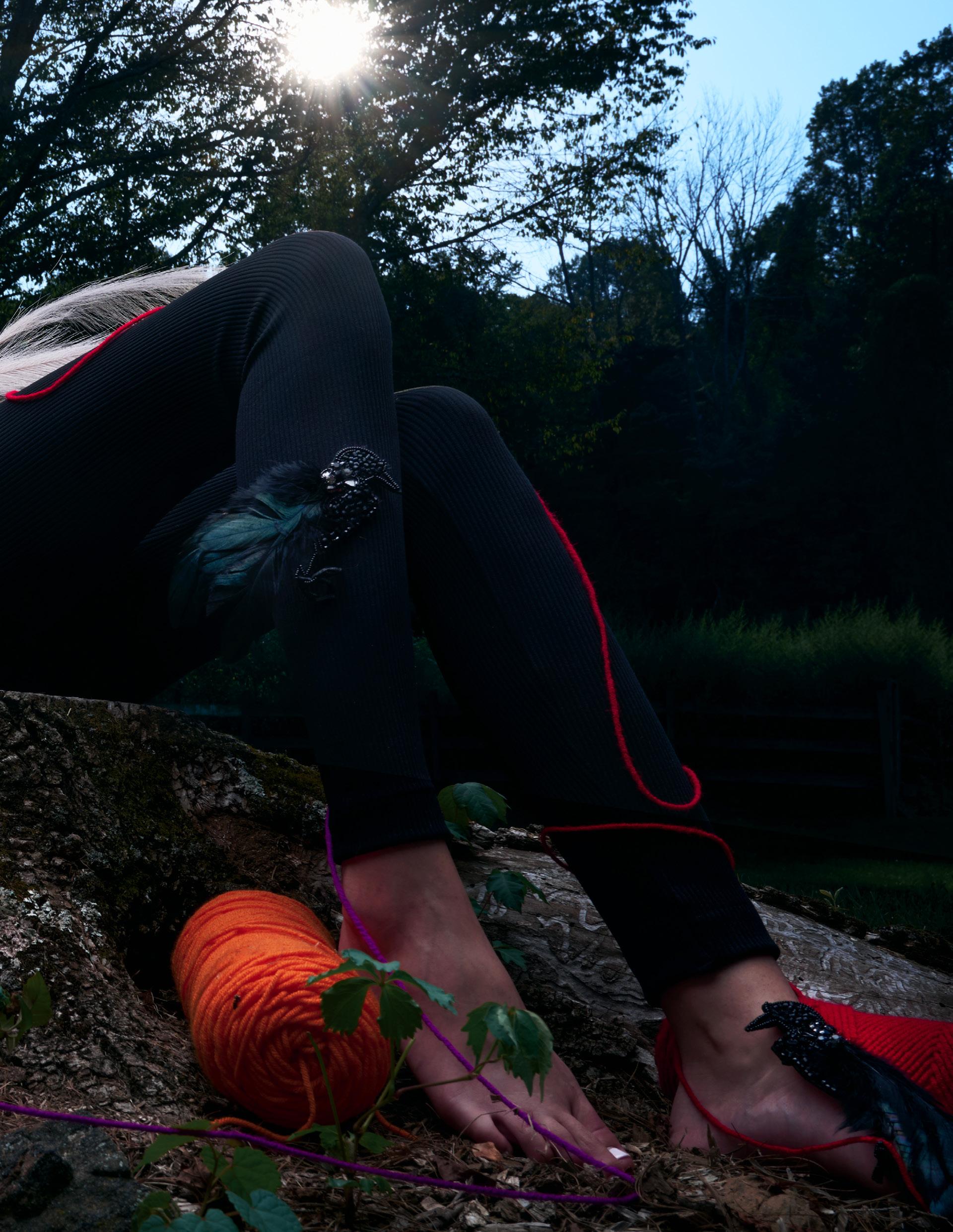

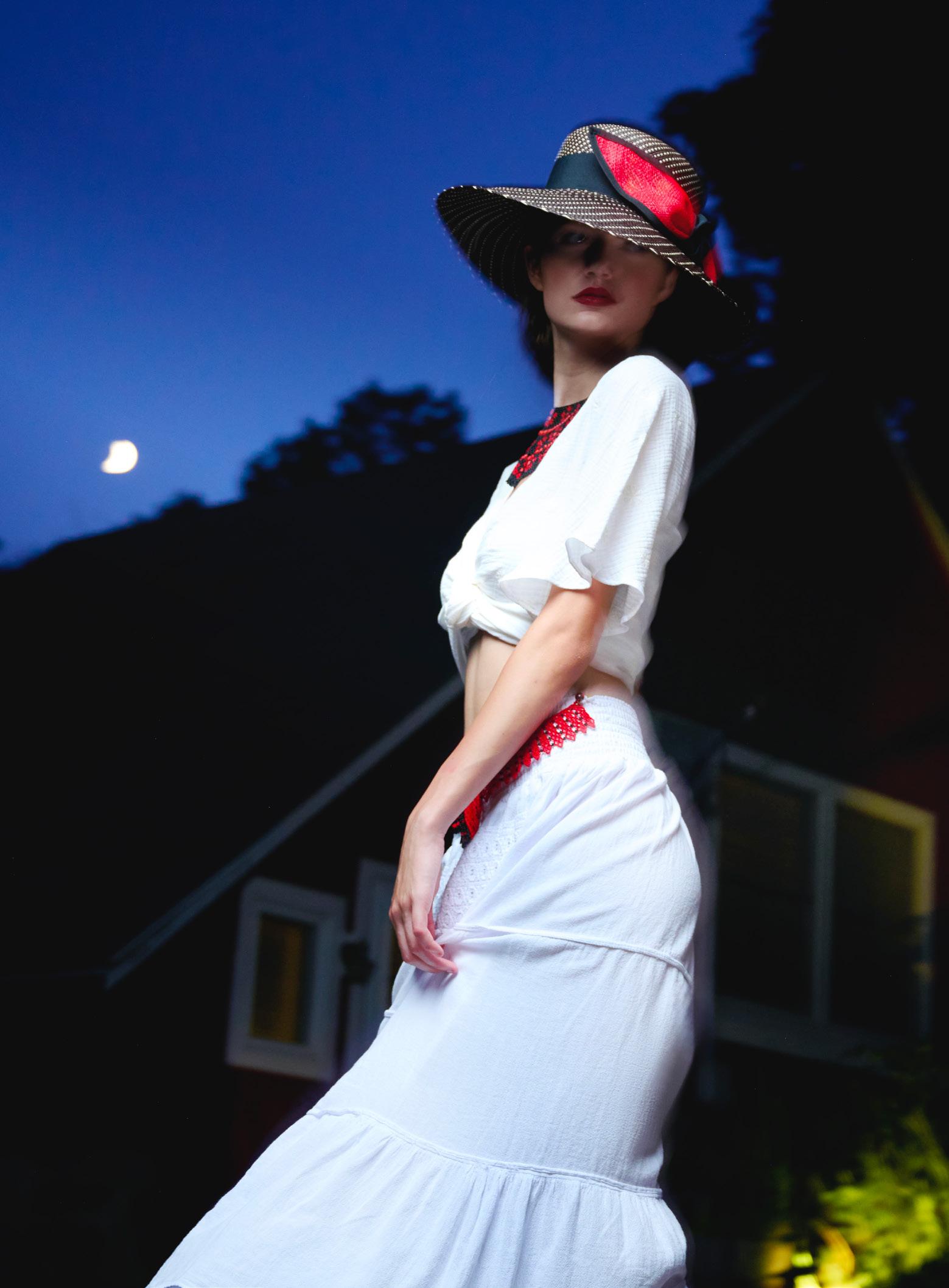
Keia @keiaecuador

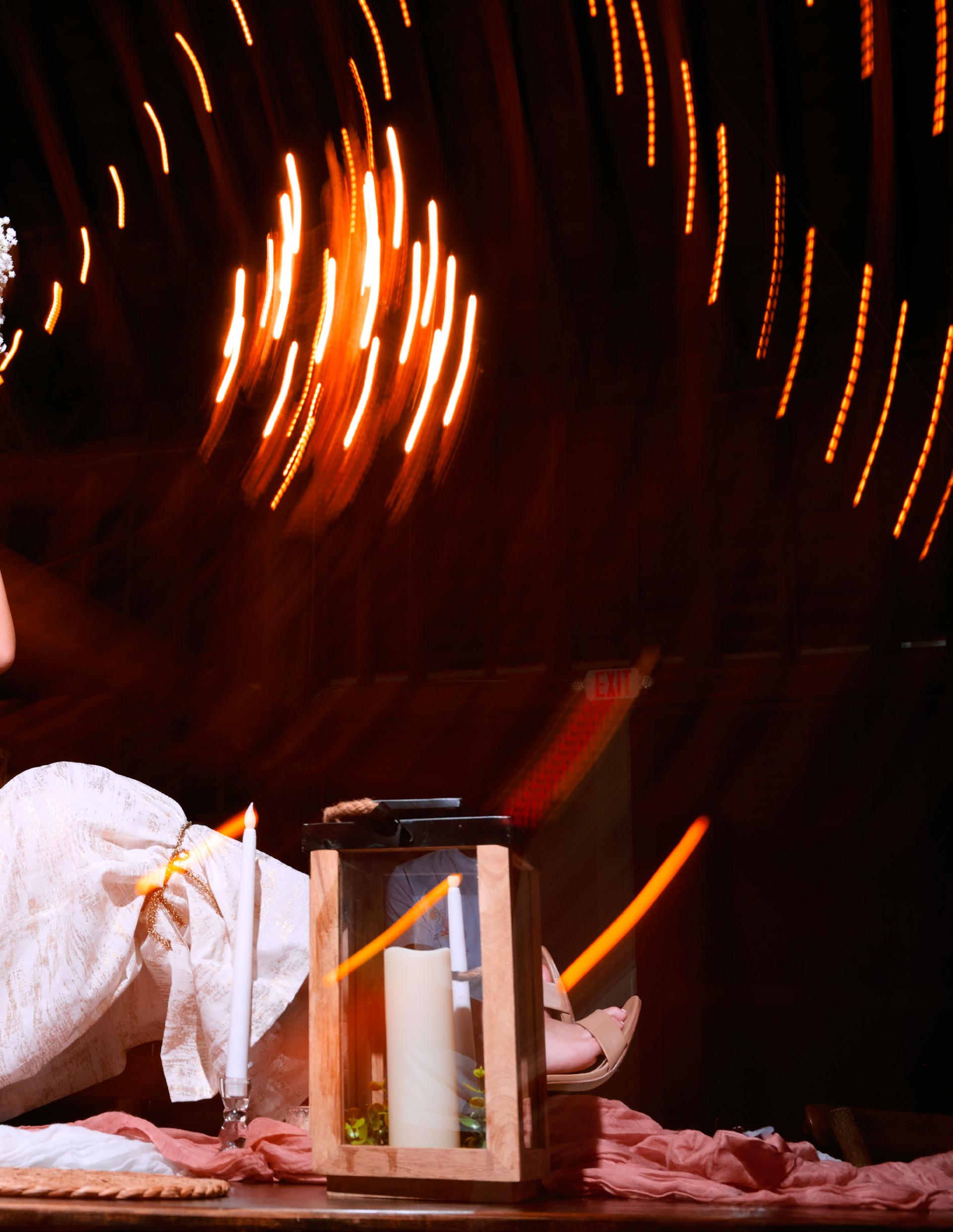

Keia @keiaecuador

Casa Kiki @casa__kiki

Nathy Jarrin @nathyjarrin

ILLUMINATED LUXURY
Where Conscious Craftsmanship Defines Modern Luxury
By Hillary Latos
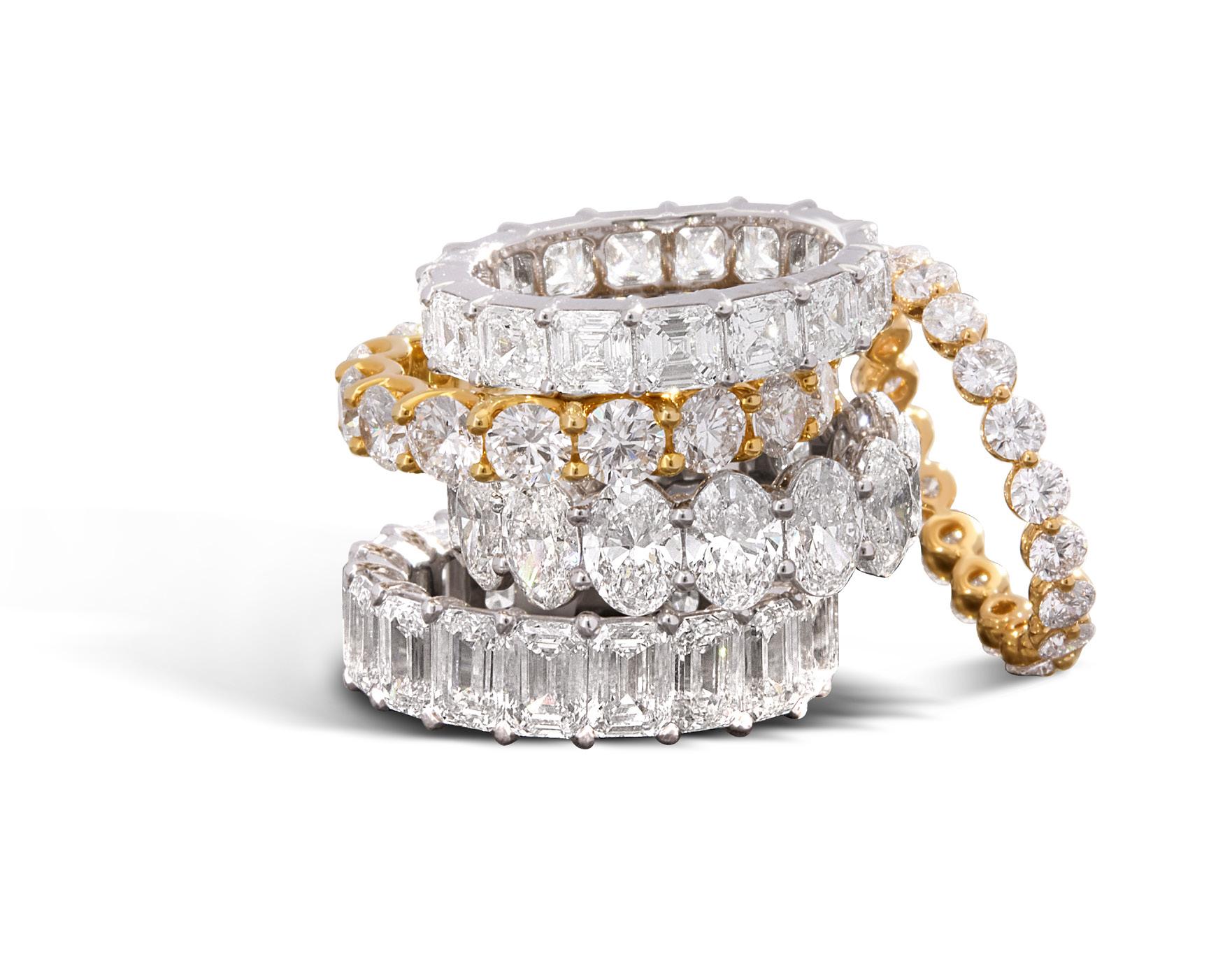

Where true luxury is found in depth and character, Lumeniri crafts pieces that embody timeless distinction. Founded by Zaida Zamorano, the brand blends conscious craftsmanship with impeccable style.
Every Lumeniri creation begins not with a sketch, but with a story. Zamorano’s philosophy centers on the belief that fine jewelry should mirror the complexity of those who wear it. Her designs combine unmistakable modernity with enduring sensibility, crafted for the woman who knows true luxury is defined by authenticity, not ostentation.
"I wanted to create jewelry that resonates far beyond the surface, pieces that feel like reflections of who we are and who we hope to become," Zamorano explains. "Some begin with a client’s dream, others with a vintage silhouette or a memory waiting to be honored. But always, the goal is the same: to make pieces that are slightly daring, endlessly wearable, and never too serious. Jewelry that invites play and holds meaning in equal measure.”
A New Model for Conscious Luxury
Lumeniri's approach to sustainability transcends the conventional. The house creates a thoughtful dialogue between innovation and heritage by pairing premium lab-grown diamonds in both colourless and fancy shades with carefully sourced vintage and estate gemstones. This is not merely about environmental responsibility; it is about expanding the possibilities of what luxury can mean.
The Lumeniri team draws on decades of combined expertise to guide clients through the world of exceptional jewellery. Their approach is rooted in both curation and creation, offering a comprehensive service that reflects a deep understanding of value, artistry, and legacy.
The Collections: Modern Heirlooms
The Lumeniri aesthetic is immediately recognizable yet impossible to categorize. Tennis necklaces are reimagined with architectural precision. Ear cuffs make bold statements while maintaining everyday wearability. Cocktail rings carry histories within their settings. Engagement rings are designed not just for the proposal, but for the decades that follow.
Each piece occupies the rare space between striking and sophisticated, commanding attention without demanding it, while feeling both contemporary and enduring.

Global Reach, Personal Touch
Lumeniri exemplifies luxury retail as it should be: intimate, unhurried, and deeply personal. In its private showrooms, clients are invited to explore existing collections or embark on the collaborative journey of custom creation, where lab grown diamonds offer unmatched clarity and the rare chance to shape a truly personal cut. The process is as refined as the outcome, with Zamorano and her team guiding each decision with quiet precision. With roots in New York City, a new showroom in Litchfield County, and a growing international presence from Istanbul to Panama, Lumeniri continues to resonate with clients seeking meaningful luxury across borders.
The Woman Behind the Vision
Zamorano's personal journey—as a cancer survivor, mother, and creative force—infuses every aspect of Lumeniri. Her philosophy, encapsulated in the mantra "Be the Light," is more than sentiment; it is the driving principle behind designs that illuminate both the wearer and the observer.
This lived experience of resilience translates into jewelry that understands the weight of significant moments, the power of personal transformation, and the importance of creating beauty that endures.

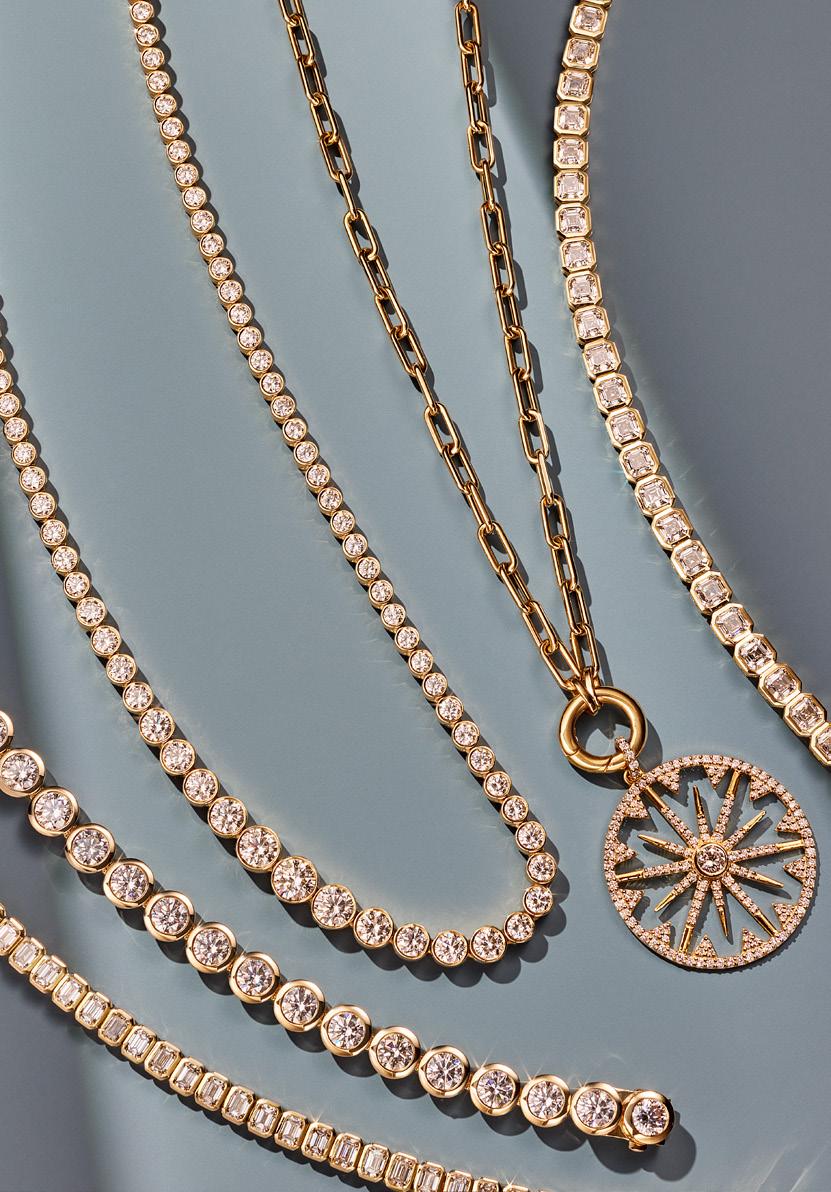
Beyond Adornment
Lumeniri takes a modern approach to fine jewelry—pushing beyond tradition with consciously crafted designs that are as expressive as they are enduring. Blending advanced technology with ethical values, the brand creates pieces that are fresh, playful, and effortless to wear.
In a market full of repetition, Lumeniri offers something bold: jewelry with a soul. Each design goes beyond the classics, capturing light, emotion, and a sense of purpose for those who seek beauty with meaning.
For those who value substance over status, beauty with intention, and design rooted in integrity, Lumeniri is more than a brand—it's an invitation to co-create. Whether reimagining a family heirloom or dreaming up something entirely new, every bespoke piece becomes a philosophy made tangible—in precious metal, ethical stones, and personal story.


VANESSA NOEL
The Art of Enduring Elegance
From sculptural stilettos to serene sanctuaries, Vanessa Noel turns quiet luxury into a lifestyle.
By Cristina I. Carbo

Vanessa Noel is a luxury designer, hotelier, philanthropist, and founder of the Noel Shoe Museum. With a degree in Fine Arts and Architecture from Cornell University, she launched her namesake shoe brand with a vision to blend artful forms and function through sculptural silhouettes with coveted rare, luxurious materials. Her creativity moves fluidly across disciplines—from footwear to interiors, hospitality, fragrance, entertaining, fine jewelry and founding the Noel Shoe Museum (NSM). A fixture in both New York, Round Hill in Jamaica and Nantucket, Noel’s creations and spaces reflect an enduring aesthetic of elegant glamour, sensuality, and refined restraint. She is also a passionate advocate for educational access. Using her shoe museum as a platform, she is supporting children in rural communities in Jamaica who cannot afford shoes to be able to attend school through sneaker donation initiatives. After decades of creative evolution, Noel remains a study in great design, elegance, purpose, and timeless impact.
Impact Wealth: Vanessa, you’ve spent decades on Nantucket. Can you tell us what first drew you to the island—and what keeps you returning year after year?
Vanessa Noel: Nantucket is woven into the fabric of who I am. My mother began coming here even before I was born, so the island has been part of my story from the very start. I grew up on Nantucket’s beaches, picnicking on the dunes and falling asleep to the sound of foghorns and ocean wind. The color of the hydrangeas isn’t just a shade it’s a feeling, a memory. As I built a life in New York, I came to realize how much I needed Nantucket’s rhythm to balance the city’s constant motion. There’s a quiet here that sharpens my senses, slows my breath, and unlocks my creativity in ways no place else can. I don’t return just to get away, I return to reconnect with myself, with nature, with a pace that reminds me what really matters in life.
Impact Wealth: You opened a boutique and then hotels on the island. What made Nantucket the right place to expand your brand?
Vanessa Noel: I opened my first shoe salon in New York City in 1987 and soon saw how the city clears out to the beach communities in the summer months. I happily followed my customers to my magical island and opened my second boutique on Nantucket in the 1990’s. It was a decision led entirely by instinct. I didn’t run numbers or analyze the market. I simply knew that if I was going to spend my summers in a place I loved, I wanted my work to be part of the island. The hotels came later, I actually bought the first property for my shoe store. The idea was so exciting to me, they were about more than hospitality—they were about creating an immersive experience of my brand. I was the first and only American designer to have hotels! This island allowed me to bring more of my aesthetic to life —to build not just a fashion brand, but a lifestyle brand rooted in beauty and timeless elegance.
Impact Wealth: Beyond being a retreat, what role does Nantucket play in your life and legacy now?
Vanessa Noel: Nantucket has evolved from being a personal sanctuary into something much deeper. I wanted to bring something exclusive and very special to this amazing community. Last summer, in 2024, I opened the Noel Shoe Museum on Nantucket with exceptional curated exhibitions. The exhibition opened to the public with free admission, so everyone could visit, enjoy and learn. It was such a success we extended it for an additional month last summer, and I was so excited to open a new exhibition again this summer! It’s a space where I can contribute meaningfully to the community, support the arts, and help shape the cultural conversation for the next generation. Nantucket is no longer just a retreat for me—it’s an integral part of my legacy.
Impact Wealth: Many know your shoes for their sculptural lines and exquisite materials. What has stayed consistent in your design process across time?
Vanessa Noel: My style, my unwavering commitment to quality, and fit. Every shoe is designed and hand crafted to enhance a
woman’s leg. A woman should wear the shoes, not the shoes wearing the woman. I don’t just decorate. I believe in the quiet power of correct balance and form combined with the most luxurious materials; I’ve always had a love affair with exotic skins such as alligator, stingray, python, and glorious hand loomed silk satins and rare vintage fabrics… they all tell a story. I still sketch every design by hand. I still build and create all my lasts and heels. That hands-on relationship with the work has never changed and never will. It is my passion.
Impact Wealth: You are also very well known for your wedding shoes, can you tell me about that?
Vanessa Noel: Many people think I began with my bridal collection but that is not true. In fact, I was known for my evening shoes. Customers began coming to me and requesting shoes to be specially ordered for them in white. We were ordering so many bridal shoes that I decided to rent the small store next to mine that had become available to house a total bridal collection. I wanted to offer the brides every style of shoe they could possibly want to wear on their wedding day. I had every heel height. Open toe sandals, sling backs boots even flip flops and cowboy boots in white satin. No one else was catering to the brides like I did. I even had brides flying in from across the world to find their perfect Vanessa Noel wedding shoes. I became the number one Luxury Bridal shoe designer. This title gave my father great pleasure when his friends asked what I was doing in NYC.
Impact Wealth: You’re still fully involved in every step of the design process. What does that look like in your day-to-day?
Vanessa Noel: It’s immersive, it consumes me in a beautiful way. It is who I am! I sketch and am inspired every day. When I travel to the factories in Italy every day is a full day driving, sitting with the artisans, creating and designing new creations. Every heel must perfectly fit every new last. All the skins are inspected and personally chosen; the patterns need to be correct. It is a most exciting labor of love which still excites me even after 40 years of designing and manufacturing. I have great respect for the industry. To be able to bring your sketches alive and build incredibly beautiful shoes that fit is a gift, It's an addiction, it's in my blood.

Impact Wealth: You’ve worked with incredibly unique materials throughout your career. What draws you to material experimentation?
Vanessa Noel: Texture. Story. Risk. I’m endlessly fascinated by how a material can transform a design—or shift its entire emotional mood. I’ve worked with lasercut leathers, exotic skins, vintage fabrics and trims. I love contrasting the natural with the architectural, stingray with satin, python with mesh. The material is never just decoration. It’s part of the soul of the design.
Impact Wealth: Your clientele is incredibly diverse—European royalty, Manhattan collectors, international artists. Do you think there’s a common thread among them?
Vanessa Noel: Style!! Confidence. A deep appreciation and understanding for self-beauty. The women who wear my shoes are not just impressed with logos or labels. They already know who they are. They value the best quality, fine design and craftsmanship. They respect and trust me. I'm not cutting corners on quality and charging them more because I could. They’re global and know the best. They want


Whether it’s a shoe, a scent, or a space, I’m creating an atmosphere—how something feels in the hand, how it makes someone feel, how it lives in memory.
to be an individual. My shoes have been sold across America in the best stores and in multiple countries in Europe and Russia. My label will always be a luxury brand, never commercial as long as I am still in control.
Impact Wealth: What are you working on right now that excites you most?
Vanessa Noel: Everything I'm working on excites me. The Noel Shoe Museum’s upcoming gala this October 23rd excites me. Designing new collections excites me. I am just about to launch my fine jewelry line in New York this December. Everything is handmade by the best private jeweler in NYC using precious metals and top-quality lab-grown diamonds. Each piece is an individual. It’s elegant, sexy, ethical, and new. I've designed jewelry for shoes for years and even used precious gems such as rubies and emeralds years ago. Creation is wonderful, it is my life.
Impact Wealth: You’ve designed across so many categories—shoes, hotels, handbags, fragrance, and now jewelry. What unites all those forms for you?
Vanessa Noel: Sensory storytelling. Whether it’s a shoe, a scent, or a space, I’m creating an atmosphere—how something feels in the hand, how it makes someone feel, how it lives in memory. Shoes and
I’ve never chased the mass market. I’ve built something intimate, incredibly special, and not commercial. People come to shop—and to connect. Wearing my shoes is like being part of a private club.
jewelry empower. A hotel comforts. A fragrance identifies. The museum educates and preserves. Every product creates an experience. That’s the common thread.
Impact Wealth: You’ve spoken about how your career began with sheer determination and no shortcuts. Can you walk us through those early days—and how you got started manufacturing in Italy?
Vanessa Noel: I’ve had a great love and fascination with shoes since I was a child. When I graduated from Cornell University I moved to NYC and was determined to become a shoe designer. I wrote to the Italian Trade Commission and requested a list of luxury women's shoe factories in Northern Italy. They sent me 3,000 names and addresses. I handwrote notes to each one and when I received the responses, I chose a factory based on pure instinct. This was all before fax machines, the internet and mobile phones. I had a lot of determination and guts! I flew to Milan with a paper map and blind faith. I rented my first car at the airport and drove alone to this tiny town I could barely find on the map, not even knowing how to pronounce the name, to meet with the owner and artisans. I was 27 years old, a woman in a male-dominated world, pitching my sketches in a foreign language that I

could barely speak. They loved my designs and apparently liked me because one month later they contacted me and said YES to taking me on and producing my designs in their factory. This was a very coveted space to hold as I learned in the years that followed, because many designers were turned away. I will always be grateful that they saw something special in me and gave me the opportunity to create and design my dreams.
Impact Wealth: You've been called a "best-kept secret" in fashion. How do you feel about that label?
Vanessa Noel: I always smile at that. It’s the best-kept secret everyone seems to know. I’ve never chased the mass market. I’ve built something intimate, incredibly special, and not commercial. People come to shop—and to connect. Wearing my shoes is like being
part of a private club. My customer list is a global “who’s who” that keep coming back— That kind of loyalty comes from being present, being personal and continually being the best in my field. I’m most proud of their loyalty.
Impact Wealth: Tell me about the Noel Shoe Museum you founded?
Vanessa Noel: The Noel Shoe Museum is the first shoe museum in the United States, based in New York City. It is my legacy project. The mission of the Noel Shoe Museum is to learn about the culture of man through the evolution of the shoe. This museum celebrates the creativity and imagination of footwear through curated exhibitions which showcase the best collaborations in fashion and art with a strong focus on design, designers, history and the manufacturing of footwear. It will honor all shoe designers and tell the story of people.

We’re also deeply committed to education and recently launched a Reimagining Education series for schoolchildren. We bring a small, curated exhibition from the permanent collection to different schools, which provides students with hands-on experiences, fostering creativity and critical thinking as they learn about the evolution of shoes and their societal significance. The museum’s permanent collection includes historical shoes from the 10th Century to the present. We also have an exciting Icon Collection, featuring shoes from inspiring individuals and their incredible stories told through their footwear including President George H. W. Bush, Olympian Usain Bolt, Shaquille O’Neal, and more. It’s incredible to see how excited the children are to see all the different shoes, and to learn through them!
We’re also really excited to be partnering
with other museums across Italy, France and the UK for exhibitions beginning in 2027.
We just launched our brand-new website, www.noelshoemuseum.org, where we’ll be posting more information on all the exciting things we have in store. The Noel Shoe Museum is such an exciting project, and I’m so proud to be building such an incredible institution!
Impact Wealth: Your career is a masterclass in self-made success. Looking back, especially as you prepare a retrospective of your work, what are you most proud of?
Vanessa Noel: That I had the will and tenacity to never gave up. Even when times were really tough. I am proud that I swam with the industry sharks and never let them gobble me up. I am incredibly proud that I was able
to build a strong label and be sold on the same shelves as the luxury big corporate labels. I even turned down investors, to retain my freedom to protect my art, my inner voice and be able to continue to design my shoes the way I saw and felt them.
I am exceptionally proud of being the founder of the first shoe museum in America, and I was incredibly honored when multiple museums across Europe asked to prepare the retrospective of my own work.
I’ve been going through decades of my shoe library and sketches. At one point I said out loud “Oh my God. I just can’t believe I did all this.” It is humbling. A lifetime of work—built on gut instinct, ideas and dreams sketch by sketch, stitch by stitch. I’m so proud of the shoes and so proud of an incredible life I’ve designed, and still building. I’m just getting started!!!

WELLNESS REBORN
How Fertility is Driving the Next Niche Wellness Boom
By Janelle Brown
It was as Ramona Riley was giving birth in the back seat of her family car—her husband navigating the turns of the I20 in South Carolina - that she understood her calling. Having refused a hysterectomy just one year prior to the birth, Riley had sought training in alternative fertility and wellness methods, including hypno-birthing techniques so effective her husband believed she had simply fallen asleep—until the first cries of their newborn echoed through the car. That miraculous moment became the spark that started a movement. The Montessori trained school principal pivoted. Immersing herself into the world of alternative health, she became a certified doula and created Cosmic Wombman, a boutique wellness brand that has rapidly become one of the Caribbean’s leading voices in alternative therapies.
Riley brings an educator’s discipline and a healer’s intuition to her business. She spent five years training in four states to establish the company stateside, while travelling back and forth to Jamaica where she built a client base of high-net-worth expats, locals, and wellness tourists visiting from as far away as Dubai and the UK. During this time, she became a fixture in the island’s wellness tourism market and built a solid platform for the brand. She curated private fertility retreats, conducted herbal healing consultations, and hosted destination births. As the business expanded, she relocated to her homeland, and based on demand, she created a holistic line of fertility focused products and support services.
Founded in 2017, the Cosmic Wombman brand now offers 18 meticulously crafted products for both female and male reproductive health, as well as long guarded male enhancement remedies. The supplement line is sold online and is available worldwide through her fulfilment center in Florida. Ramona herself remains highly sought after, offering consultations to guide her clients through the techniques that work in tandem with personalized herbal protocols. Though she hosts these online sessions remotely, her clients often prefer to visit her on-island or fly her to their location.
While Riley’s brand is rooted in ancestral wisdom, her modern business sense is clear. The company has plugged-in to the overlap between the wellness industry boom, and global birthrate declines. According to the
WHO the average number of children born per woman (total fertility rate) has dropped dramatically—from around five in 1950 to 2.31 in 2020 and 2.1 in 2025— birth rates are crashing downward with many developed nations already below replacement levels. The shocking statistics have been declared an ongoing global fertility crisis, and Cosmic Wombman offers a unique value proposition in closing that gap.
Fertility is now a commodity, and Riley believes that natural solutions will be key in rejuvenating first world birth rates, and that responsible use of traditional medicine can enhance the Western approach. Synthetic hormone injections are the norm for couples that want children, but there is widespread outcry on the toll modern treatments take on bodies, and on relationships. Riley’s brand offers a gentler return to the arts of maternity, “The ‘womb economy’ is a thing,” notes the mother of three, “and we are in a unique timeline where we are recognizing and measuring the effectiveness of plant medicine. These long-lost fertility traditions help to support families and sustain populations.”
Today the business of women’s wellness has matured beyond trend and into longterm growth. Business is booming for those riding the female focused commerce wave, which has been holding steady for the last 2 decades, from yoga apparel giants Lululemon whose market cap exceeded $50 billion in 2024, to Gwyneth Paltrow’s Goop or the Flo app. Even esoteric items such as healing crystals saw an unprecedented surge. Powered largely by female consumers, the U.S. healing crystal market valued $1.2b in 2020 and hit approximately $1.8b by 2024, an 8 % compound annual growth rate.
Riley’s company remains as grounded in smart business as it is in sound practice. During the Covid 19 crisis the brand responded to the community’s needs in real time, adding detox remedies and immune system boosters to its product line. The response was immense, and Cosmic Wombman’s revenues tripled. “We all wanted answers,” she recalls, “many of us found them in nature.” Still, she makes it clear: her approach is not anti-science. “I believe in responsible collaboration with medical systems,” Riley says. “There’s a role for both. Modern medicine can save lives, and so can traditional methods.”
Organizations like the WHO and Fortune Business Insights Industry underscored this dynamic during the pandemic, as both highlighted the rising use—and effectiveness—of traditional remedies in regions where such knowledge is preserved. The traditional medicine market is expected to exceed $400 billion by 2026, and the global wellness industry is projected to grow from $6.3 trillion in 2023 to $9 trillion by 2028.
Brands like Cosmic Wombman are wellpositioned to capitalize on this surge of wellness wealth. The company’s success reflects a broader shift among discerning individuals who are investing not only for personal use, but as a rapidly appreciating asset class. The secret, Riley suggests, lies equally in outcomes, and in the sacredness of the service rendered. “Privacy is critical” she says. “This is not a one-size-fits-all approach, we take time with our clients. We listen to their stresses, challenges, and goals. Our clients don’t need gimmicks; they need results—peacefully.” While her reputation for discretion is well acknowledged, some
of her more prominent clients have leapt to sing her praises. The wife of pop superstar Sean Paul was notably vocal regarding both herself and her sister, who have publicly endorsed Riley’s treatments.
Jamaica itself has become a hotspot for high-end wellness tourism, with guests increasingly bypassing the Far East for a more accessible, comfortable, and relaxed experience in the Caribbean. The reggae nation’s wellness tourism market has seen double-digit annual growth since 2020, particularly in herbal, spa, and mind-body therapies. Medium Magazine recently profiled the rapidly rising popularity of psilocybin mental health retreats on the island.
It is within this lush, tropical landscape that Cosmic Wombman thrives, creating a sanctuary for individuals that seek powerful healing. "My mission is simple" she says, "To honour both motherhood and fatherhood, and to extend transformative care.”
Contact: www.cosmicwombman-usa.com

BERNARDO VASCONCELOS on Furthering His Beauty Empire
A new chapter of excellence is turning the page for Bernardo Vasconcelos. The guru of the beauty world is expanding his status in the coveted industry from his already successful locations in Dubai, New York, Abu Dhabi, Santo Domingo, Kuwait, and Miami.
By Hillary Latos


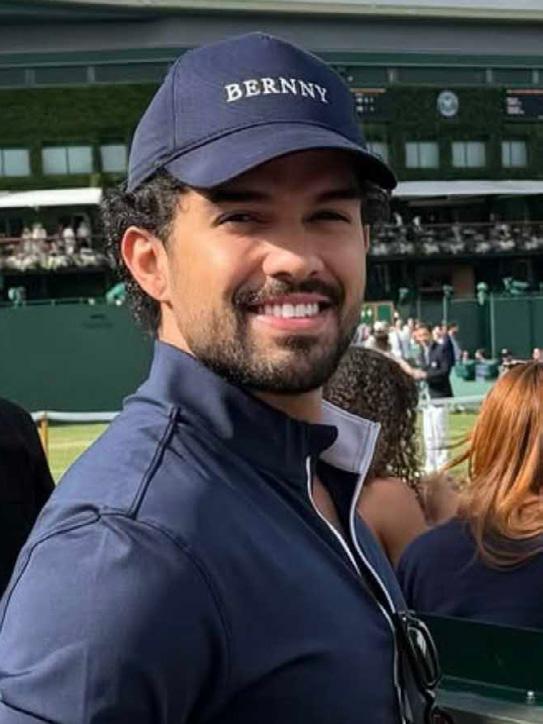
Ever since the entrepreneur and hair stylist began his business, he has been on the upward trajectory of growth. Brazilian-born with Italian roots, he has brought over 15 years of experience to fundamental applications that have been the foundation of a colossal empire.
With a sophisticated take on what defines international beauty, Vasconcelos founded the BCO Beauty Group. Originally inspired by his mother, he now sits on the throne of a beauty kingdom alongside a sibling who together helps him master the craft they are known for and execute with great pride the day-to-day operations of the bevy of thriving locations.
BCO Beauty Group consists of four businesses and. The group's exquisite blend of traditional Brazilian techniques and innovative technology is what rules supreme with clientele across the globe. The overall practice creates a transformative beauty experience across all his platforms.
The formula is rather intriguing behind the business model that has launched these stellar establishments. Empowering Brazilian beauty is infused with a touch of modern elegance with BCO Beauty Group. Each facility operates as a divine luxury beauty business in its own entity, including BCO Salon London, TRYO Hair Extensions, Blu BCO Kuwait, and the newly launched Wumman Spa.
Clients seek the renowned services in locations such as the London Salon to the vibrant BCO x BLU Kuwait - a unique diverse range of services to cater to every desire. While the Wumman Spa elevates the nail care experience with premium services, including highly skilled professionals and outstanding results. Finally, TRYO Hair Extensions elevates a client's look with premium hair extensions and styling services.
Poised for even further greatness, Vasconcelos has always been a trailblazer in demand. A limitless potential consistently revolves around him and his team. His international experience combined with his Brazilian and Italian roots is one of the secrets to his success in the industry. But, after a
conversation with him you realize it is also a tenacious determination and charismatic nature that appeals to thousands of clients around the planet including celebrities, actors, recording artists, and influencers.
It all began when his passion drove him to move to the US when he was 18 years old. It was here he absorbed new techniques from coast to coast in New York City and Los Angeles as well as taking courses abroad in Europe and Brazil. Following a visit to London, he realized there was a lack of high-end beauty services available. He then and there decided to open his own salon and the rest became history. Ignited within him was the spirit to reach for the stars.
His unique approach to beauty which always highlights an international standard for global flair is approachable and acceptable for all skin and hair types with the essence of Brazil always at the heart of it.
It is why clients adore him and he is often sought out to be a leading authority in fashion shows, magazine pages, and even campaigns. His name especially became synonymous after creating the exclusive Brazilian Balayage and Contour techniques which have been featured in media and websites such as Forbes US, British Vogue, Tatler, Glamour and more.
Vasconcelos has been an ambassador for leading brands like Living Proof Professional. All the while he continues to work closely with private clients and manages a soaring social media with over half million followers. With all the fortune and fame that has opened doors for him, he still never changes his heartwarming passion to make every single client feel powerful and confident. As he looks to expand into new locations and gain even more high-profile clients, his expansive and bright repertoire just sparkles even more pristinely and with a spritz of panache.
Beauty is more than just in the eye of the beholder when it comes to this entrepreneur. It is for all to see equally and with the shared passion he carries in his heart to see his vision grow. As Vasconcelos’ beauty empire expands, so do the opportunities for the world to feel glamorous every day of the year.
For more information on the beauty expert and his business portfolio, please visit bcobeautygroup.com.

BEYOND THE BOTTLE A Wellness Guide to Water
Why the kind of water you drink matters more than ever.
By Dorian May
Water is having a moment. Once a humble necessity, it's now curated by sommeliers in five-star hotels, dispensed via high-tech in-suite filters, and showcased in chic glass bottles that promise purity and prestige. But beyond the lifestyle appeal lies a more pressing question: are we truly hydrating our bodies in the healthiest, safest way possible?
Unlike the French bubbly it now rivals in packaging, water isn’t optional—it’s essential. And the type of water you drink may matter more than you think.
Hydration: The Silent Powerhouse of Wellness
Water makes up 50% to 70% of your body weight, fueling every biological process from brain function to digestion. “Hydration is foundational,” says Dr. Amanda Kahn, a New york based board-certified internist who specializes in cellular optimization and longevity. “Chronic dehydration can contribute to systemic inflammation, kidney irritation, and premature cellular aging.”
When you’re hydrated, nutrients flow efficiently into your cells and waste is cleared out. Hydration supports blood pressure, metabolic efficiency, lymphatic detoxification, and skin vitality. “My patients care deeply about how their inner wellbeing shows up on their skin,” Dr. Kahn explains. “And staying well-hydrated is one of the simplest ways to support a glowing, youthful appearance.”
How Much Water Do You Really Need?
Hydration needs vary based on age, body size, lifestyle, and even medications. A general guideline: aim for half your body weight in ounces of water daily. That’s around 11.5 cups (2.7 liters) for women and 15.5 cups (3.7 liters) for men, according to the U.S. National Academies.
“Drink to thirst, but also monitor your urine,” says Dr. Kahn. “It should be a pale, straw-like yellow. As we age, our thirst response can diminish, so older adults should be especially proactive.”
Electrolytes: The Unsung Heroes of Hydration
While water alone is powerful, it’s not the full story—especially if you’re losing fluids through exercise, sauna use, illness, or postsurgical recovery. That’s where electrolytes come in. These minerals—especially sodium, potassium, and magnesium— are crucial for muscle contraction, nerve signaling, and heart rhythm.
“I often recommend electrolyte supplements, particularly for patients on low-carb or ketogenic diets,” Dr. Kahn says. Beware to avoid brands with high sugar content or artificial dyes and note that you can also get your electrolytes from natural sources including coconut water, avocados, bananas, and even pickles.
Not All Water Is Created Equal
Water quality varies dramatically—and that has real health implications. Tap water, even when legally compliant, may contain trace amounts of chlorine, heavy metals, and PFAS (so-called “forever chemicals”) that accumulate in the body over time. “Unless it’s tested and filtered, I don’t recommend drinking tap water,” Dr. Kahn cautions.

The gold standard? Reverse osmosis (RO) filtration, which removes contaminants while preserving essential minerals. “Water filtration is one of the most important long-term investments you can make for your health,” she says.
Bottled Water: A False Sense of Safety?
Glass bottled water has long been viewed as the cleanest and most elegant choice—but recent research has complicated that narrative. A June 2025 study by France’s national food safety agency (ANSES) found that painted caps on glass water bottles are a significant source of microplastic contamination, even in premium brands. These microplastics can increase in concentration when bottles are exposed to heat.
Plastic bottles are no safer: they often leach BPA and phthalates, hormone-disrupting chemicals linked to inflammation, metabolic dysfunction, and cancer risk. And when left in hot environments—like a parked car or sunny windowsill—the risk escalates.
“Even in low doses, these chemicals can disrupt endocrine and immune function,” says Dr. Kahn. “I always advise patients to filter water at home and store it in BPA-free or glass containers. It’s the most reliable way to avoid unnecessary exposure.”
What About Sparkling or Hydrogen Water?
Hydrogen-infused water is a rising trend, praised for its potential antioxidant effects. “Early studies show promise in reducing oxidative stress,” says Dr. Kahn, “but we need more long-term data before I recommend it broadly.”
Sparkling water is fine in moderation, especially as an alternative to soda, but she advises pairing it with still water. “There’s some evidence it can affect tooth enamel over time, so balance is key.”
The Bottom Line: Hydration Is Preventive Medicine
Most of us think of hydration as a quick fix for thirst—but it’s really a foundational act of self-care. When your water is clean, properly filtered, and mineral-rich, it becomes a tool for energy, mood, digestion, joint lubrication, skin elasticity, and even cognitive clarity.
A recent CDC report suggests that wellhydrated individuals are not only healthier, but also happier and more productive.
So yes, water can be luxurious. But more importantly, it’s life-giving. And when chosen with intention, it can also be a powerful path to long-term wellness—from the inside out.

A SEASON IN LIGHT
The Parrish Art Museum’s
Transformative Year of Exhibitions
By Candice Beaumont

Unfolding like a masterfully curated portfolio, the Parrish Art Museum’s 2025 season radiates with modern brilliance and contemporary relevance. Framed by its striking cedar-clad architecture and deep-rooted connection to the creative legacy of the Hamptons, the museum continues to draw collectors, curators, artists, and patrons into a dialogue shaped by time, place, and light. Throughout the year, the Parrish presents a dynamic array of temporary exhibitions, from fresh installations drawn from its world-class collection of more than 4,500 works to focused retrospectives and group shows that explore timely, resonant themes.
This year, the Museum widens its aperture, offering not just exhibitions, but experiences that speak across disciplines and continents. Through five distinct programs spanning abstraction, photography, collectible automotive design, and meditative
minimalism, the Parrish positions itself not merely as a regional institution, but as a cultural interlocutor. It is a place where legacy meets experimentation and intimacy meets innovation.
This is not simply an art season. It is a statement: that the Hamptons remain an incubator of artistic relevance. The Parish Art Museum is a place where reflection is possible, curiosity is cultivated, and cultural conversation is always in motion.
SHIRIN NESHAT: BORN OF FIRE
April 20 – September 1, 2025
This spring, the Museum plays host to Born of Fire, a quietly powerful solo exhibition by Shirin Neshat, one of the most resonant voices in contemporary photography and video art. The Iranian-American artist has long been recognized for her elegant
black-and-white portraiture layered with Persian calligraphy and her cinematic video narratives that navigate the intersections of displacement, gender, and spirituality.
At the Parrish, Neshat’s presence underscores the Museum’s ongoing global outlook, placing East End light in conversation with voices from beyond its shore. While the full installation remains purposefully elusive, what it evokes is unmistakable: the emotional topography of exile, resilience, and remembrance.
Neshat’s subjects, predominantly women are rendered with both strength and vulnerability, occupying the liminal space between silence and speech. In their eyes and inscriptions, we find stories not just told, but held. The Parrish becomes, in this moment, a sanctuary for voices too often unanchored—a place where grace and gravity coexist.
SEAN SCULLY:
THE ALBEE BARN, MONTAUK
May 11 – September 21, 2025
The season’s curatorial crescendo arrives with Sean Scully: The Albee Barn, Montauk, a landmark retrospective that brings one of abstraction’s most architectural and poetic minds back to the terrain that helped shape him. Organized by Executive Director Mónica Ramírez-Montagut, Ph.D., and Associate Curator Kaitlin Halloran, the exhibition assembles over 70 works, anchoring Scully’s multi-decade journey in the seminal summer of 1982.
It was during his time at The Edward F. Albee Foundation that Scully first engaged with Montauk’s natural quietude. Departing from the strict geometries of his earlier urban works, he embraced the textures and impermanence of the rural landscape, painting directly on found wood, assembling
multi-panel compositions that feel at once constructed and intuitive. These rarely seen works now return home, joined by pieces from his Wall of Light, Landline, and newly introduced Tower series.
The accompanying exhibition catalogue from Hatje Cantz offers rich essays by Deborah Solomon and Steven Henry Madoff, along with a spirited dialogue between Scully and Ramírez-Montagut, opening a window into the artist’s rigorous yet lyrical worldview.
On July 25, the Museum hosted Windows and Openings, a special evening with Scully in the Lichtenstein Theater. With characteristic candor and gravity, he traced the evolution of the window as both metaphor and motif, from 1973’s Windows to 2022’s Dark Windows For Scully, a painted frame is never simply a surface. It is a portal through which structure, memory, and emotion emerge and dissolve.
PARRISH ART MUSEUM & HEDLEY STUDIOS: AUTOMOTIVE EXPERIENCE
July 3 – August 23, 2025
Outside the galleries, the Museum’s grounds offered a wholly different aesthetic encounter: motion. In a first-of-its-kind partnership, the Parrish collaborated with Hedley Studios to present Automotive Experience which is a sculptural installation of electric automobiles that married mechanical ingenuity with reverent design.
Featured were three limited-edition electric vehicles: the Bugatti Baby II, an artful 75% scale tribute to the 1924 Type 35; the Aston Martin DB5 J, evoking the mystique of Bond-era elegance; and the Ferrari Testa Rossa J, constructed in collaboration with Ferrari Classiche and built from original 1957 blueprints, using hand-rolled aluminium.

James Howell Sets 71.68 - 88.84 Six-Part progression 10/23/11, 2011. Acrylic on canvas. 25 x 25 in. (63.5 x 63.5 cm)
of


More than collectibles, these vehicles stood as kinetic sculptures. They are objects that echo the language of fine art while retaining the craftsmanship and precision of master engineering. Hedley Studios, led by founder Ben Hedley, remains the only workshop licensed by Aston Martin, Bentley, Bugatti, and Ferrari to recreate icons of automotive history with such reverence.
On August 8, Ben Hedley will appear at the Museum for a Collectors’ Talk, offering deeper insight into how function, legacy, and aesthetics can inhabit the same form. In doing so, the Parrish reaffirms its commitment to
expanding the definition of art, welcoming innovation without abandoning tradition.
JAMES HOWELL: THE INFINITE IN GRAY
September 14, 2025 – February 8, 2026
The season closes with subtle radiance. The Infinite in Gray is the first major retrospective of the late American painter James Howell (1935–2014), whose work invites quiet contemplation and slow looking. Howell’s journey, from figurative beginnings in the 1960s to the meditative gray-on-gray abstractions of his final years unfolds as a practice in restraint and refinement.
Where others seek spectacle, Howell offers stillness. His monochromes, built from mathematical pigment systems and informed by spiritual inquiry, are not static they shimmer with perceptual depth. With every tonal shift, he beckons the viewer into a deeper state of presence. These are not simply paintings; they are quiet revelations.
Curated by Kaitlin Halloran and Scout Hutchinson, the exhibition includes paintings, drawings, and rare prints, presenting Howell’s full vocabulary of silence and structure. The show is accompanied by a documentary, Thoughts of Infinity,
directed by Halina Dyrschka, and a scholarly catalogue co-published with Hatje Cantz.
“Everything is interrelated, nothing is isolated,” Howell once remarked. This exhibition honors that conviction, rendering it in texture, tone, and time.
A Museum in Motion
What emerges from this ambitious season is more than a series of exhibitions. It is a testament to the Parrish Art Museum’s evolving role as both custodian and catalyst. A place where historical memory, personal vision, and future curiosity are held in balance.
From the rigorous abstraction of Scully to the poetic activism of Neshat, from the contemplative geometry of Howell to the mechanical grace of Hedley’s electric masterpieces, the Museum engages its audience in layered encounters, each distinct, yet resonant.
In a moment when cultural institutions are called to be not only guardians of art but stewards of meaning, the Parrish remains quietly radiant, unhurried, unfailing, and unwavering in its belief that art, at its best, invites us not just to see, but to understand.
Photo by Mareike Tocha, courtesy
the James Howell Foundation

SONAL AMBANI Crossing Cultural Barriers through Impactful Art
By Amy Poliakoff
When examining the art market, it is important to understand that the foundation exists with the coexistence of creativity and commerce. It is a value system as much about aesthetics and impact as it is about status, scarcity, and investment. One of the key components that define the art market are the artists themselves as their reputation, style, use of material and influence all affect the valuation of their work which drives the supply and demand of the market. There are pivotal artists whose work add value to society and shape social influence across cultural barriers. Sonal Ambani has become one of today’s leading female artists because of where her work is being recognized and what her art represents.
Her sculptures cross cultural barriers for their intellectual and emotional depth that allow for true reflection into societal issues. They merge sleek raw steel or bronze with emotional resonance that create conceptual art leading to the very introspective balance of philosophical ideas that explore the interplay of themes including technology and emotion, reflections on grief and loss, climate change, economic disparity, unity along with resilience and the role of women in contemporary society.
Originally from New York City, Sonal was not only surrounded by New York City’s cultural network but raised the ranks in the investment banking world to become a top leader. With a PHD in business management and a member of the United Nations Development Fund for Women, Ambani has a keen aptitude for corporate industry. She moved to India after meeting her husband Vimal Ambani at an
Indian Wedding and found herself drawn toward the passion to create. She started with life size steel elephants and other animals. She was approached to start exhibiting her work at the Indian Art Fair and in 2018 her notable stainless steel elephant sculpture, “The March of Time”, was selected for the Elephant Parade in India. This event was part of the Elephant Family charity campaign which was founded by Mark Shand, Queen Camilla Parker Bowles brother, with the mission to save the Asian Elephant. Her elephant was selected to be exhibited with 101 other artists’ elephants in Bombay and then went on to be selected as one of the top ten shown at auction in London. The “March of Time” ended up selling as the highest priced sculpture at the auction which resulted in a wonderful gift to the charity.
Fueled by her desire to create, Sonal forged on with an aspiration to share her voice. She understood she needed to start to represent universal themes through her work.
“When my father was dying, he told me I was capable of so much more – it drove me to create art with a message and for me- my parents will always be my inspiration to do better, think bigger, and think out of the box. My parents have been my inspiration.” Having lost both of her parents, her mother to ovarian cancer, and understanding that her father’s last words were for her to reach for the stars, Sonal forged ahead creating works that would leave an impact on the global stage.
Sonal created works like “Slings and Arrows of Outrageous Fortune” which was exhibited at the 2024 Venice Biennale at the European
Culture Center. To exhibit in Venice during the Biennale is considered one of the pinnacles of exhibiting in the art world. This stainlesssteel bull evokes the iconic symbol of financial strength and masculinity seen in the financial world however, Ambani boldly inverts the sculpture, challenging its traditional meaning. “Slings and Arrows of Outrageous Fortune” is a striking commentary on the gender pay gap, symbolising the systemic undervaluation of women’s labour. At its center is a stainless- steel bull, emblazoned with world currencies, charging toward a circular target, embodying the patriarchal forces that sustain male dominance.
Red arrows pierce the bull’s body, representing progress and resistance led by those challenging systemic bias. This is a direct message that the global economy has many inequalities such as the gender pay gap and harkens back to her primary theme. The circular target symbolises unity and the ongoing pursuit of gender equality.
More than a sculpture, this installation is a call to action, honouring the work of Nobel Laureate Claudia Goldin and affirming the collective fight for a fairer, more inclusive world. Having created work that addresses the very role of women and gender inequality is so important and impactful because for so long, even in the art community, women were often overlooked.
The right to vote for women in India came at Independence in 1947, Italy in 1945, Qatar in 1999 – seen late in other countries as well. In Saudia Arabia women just got the right to vote in 2015.
Everything I do is manual- the welding, polishing and buffing etc. With the advent of technology leaning toward AI, the art world will dramatically change. Right now, technology can’t express emotion which is pivotal in art, but in the future it might learn.
“Women are now speaking up around the world for equality, for equal pay, for equal work. For every dollar earned a woman makes 69 cents. There is always a glass ceiling- even for equal pay. Even in sports there is a lack of equality in pay scale,” said Ambani.
Ambani is currently working on her new 20-foot-tall stainless-steel pyramid called “The Summit Of Women’s Voices”. Viewers will be invited to walk through the four doorways, each representing a different stage or challenge in a woman’s journey through life. The pyramid will stand as a symbol of women’s resilience and strength with words like “mother”, “leader”, “survivor”, and “creator” visible and invisible to the viewer through the interplay of light depending on the interactive stance of the viewer located within the structure. This serves as a reminder that the female voice is often silenced or heard throughout history and continues Ambani’s activism for female empowerment. Within the structure will be 108 hanging cards, each bearing a story, a portrait and a quote from a woman around the world. These narratives, gathered from interviews of women with

different professions, cultures and struggles will reveal the ongoing battles of being a woman today. This installation will constantly evolve as visitors are encouraged to add their own thoughts on blank cards and pens provided. Her new and upcoming work, “The Summit of Women’s Voices”, will soon serve as an interactive sculpture transcending regions and cultures to archive the female voice for all.
Ambani’s work transcends traditional sculpture because it pushes boundaries with its ability to give a fluid personification of humanity to steel using social discourse as an agent of change. Always addressing a theme, her 2022 work “Riderless World”, addresses themes of loss and technology. Understanding loss, having lost both her parents, Ambani created “Riderless World” taking sculpture to a new level with its use of
technology. Also exhibited at the European Culture Center during the Venice Biennale, it is an emotional and visual installation created in response to the Covid -19 pandemic. The work is a bronze horse purposefully broken with its tail and abdomen placed on pedestals. Flowers and candles fill the hollow space as an homage to those lost. Behind the sculpture is a scrolling list of the names lost due to the pandemic. This list of names from all countries is updated through an online portal and is easily accessible even now to all at www.riderlessworld.com
“With Riderless World I tried to bring humanity back from the statistics of 2000 people died one day then 5000 the next. These deaths were people we all knew, they were friends, they were family. These names exhibited behind the horse show first name, last
name, age, profession, city and the country where the person who died is from. This work is a way to honor loss,” said Ambani.
The sculpture is a living memorial and a shared space that transcends national barriers bringing individuals from all cultures to gather in a shared experience for remembrance. This work combines traditional sculpture with the digital age, a forward-thinking approach to art.
“Everything I do is manual- the welding, polishing and buffing etc. With the advent of technology leaning toward AI, the art world will dramatically change. Right now, technology can’t express emotion which is pivotal in art, but in the future it might learn,” said Ambani.
Understanding loss not only from the pandemic but from her mother’s battle with ovarian cancer, led Ambani to be the founder of the “Cancer Screening & Research Trust” whose focus is to promote early cancer detection. As a fundraiser for cancer awareness she has authored two coffee table books, “Mothers and Daughters” launched in 2004 at the Victoria and Albert


Museum in London and “Fathers and Sons”. To promote the detection of cancer early she produced two television commercials on national Indian television channels with a combined viewership of over 300 million individuals. The awareness campaign won the Advertising Association of India Award for best commercial for a non-profit organization.
Continuing her commitment to cancer awareness, Ambani has used her passion for art in conjunction with fashion to create the “Happiness Series”, her handbag collection using sustainable materials. Each handbag is carefully created with custom effervescent colors and craftsmanship to methodically embody individuality. Ambani hopes each ornate bag featuring detailed motifs and steel remind women to embrace self-care as a necessity. According to Ambani, the collection is deeply personal and she hopes each handbag can serve as a reminder to women that health and happiness matter. With each handbag comes a personalized note reminding women to stay diligent about their annual check-ups. Ambani’s empathetic disposition and in-depth connection to

the emotion of compassion transcends her commitment to sculpture and allows her to combine fashion with activism to evolve her artistry into personalized wearable art. Her work has been featured in Architectural Digest, Harper’s Bazaar and Art India Magazine. She has won numerous awards including the Motwani Jadeja Art Prize (MJF Art Prize) in 2024, South Asia’s largest art award, and the 2019 Times of India Women Power Award for Art and Sculpture.
She has taken the art market and art fairs by storm exhibiting at the Indian Art
Center.
“You have to have your art shown globally so it can speak for issues that are relevant to our time. As artists, we must approach these opportunities to show globally and thoughtfully choose fairs that truly align with our artistic vision and values. I feel my art is very relevant to issues such as women’s equal rights and pay, the environment and more. Art is here for future generations.,” said Sonal Ambani.
Through my sculptures, I hope to create timeless forms that speak to the human spirit, symbols that inspire compassion, provoke reflection, and mirror the complexities of our time.
All of Ambani’s sculptures bring life and humanity into art. Her gift of using steel for storytelling invites the viewer, through its mirrored effect, both literally and metaphorical to experience true introspection. Her ability to make us stop, reflect and think is accomplished and therefore this makes her a very successful and brilliant artist. Art is about creating an impact and Ambani’s work gives the viewer an emotional and intellectual perspective. Her devotion to being a catalyst for change gives her a voice on a global stage addressing personal concerns, political, environmental and socio-economic themes of conceptual depth relating to equality, loss, technology and more. This is what solidifies her as one of the new leading contemporary female artists with a powerful voice in the art world.
“I want my legacy to be one of emotional connection, resilience and transformation. Through my sculptures, I hope to create timeless forms that speak to the human spirit, symbols that inspire compassion, provoke reflection, and mirror the complexities of our time. I aim to contribute to meaningful conversations around life, love and our shared humanity. More than being remembered for the work themselves, I hope to be remembered for the emotions they stirred, the causes they supported, and the lives they quietly touched,” said Ambani.
Fair, Ahmedabad Art E-Fair, Art Bahrain Across Borders, Venice Biennale, and the Dubai International Financial


PEDRO COSTA Sculpting the Language of Time
From aviation parts to horological masterpieces, Colombian designer Pedro Costa redefines functional luxury with his monumental, kinetic sculptures.
Pedro Costa, the aeronautical designer turned horological sculptor, is the visionary founder of Costa Design, a studio that fuses highconcept art with mechanical ingenuity. His oversized interpretations of iconic watches— like the Royal Oak and Nautilus—are not mere artistic representations but emotionally charged, fully functional sculptures made by hand, always in limited editions. From private hangars to collectors’ salons, Costa’s creations are redefining what it means to invest in time.
In this rare conversation with Impact Wealth, Costa opens up about his design philosophy, creative process, and the future of sculptural luxury.
Impact Wealth: What originally sparked your transition from aircraft-part furniture to oversized watch sculptures?
Pedro Costa: Even when we worked in aviation, our focus was always on uniqueness. We created one-of-a-kind furniture using aircraft parts, and that eventually led to a commission for Latin America’s most exclusive private aviation lounge. The big shift came in 2014 when Rick de la Croix— then a major figure at LVMH—asked who
By Cristina Carbo
designed that lounge. He commissioned a unique piece, and given his connection to watches, I proposed a sculptural table inspired by a timepiece. That’s how it all began.
Impact Wealth: How has your background in aviation and design influenced your current aesthetic and technical approach?
Pedro Costa: Immensely. Aviation gave me a deep understanding of integrating complex mechanical systems into beautiful forms. We were already dealing with planimetry, mechanisms, and engineered precision. That made it easier to transition into largescale kinetic art—though it’s never “easy.”
Impact Wealth: Could you walk us through the stages—from concept to finished piece—of constructing one of your watch-table sculptures?
Pedro Costa: It always starts with the watch—a piece the client is emotionally connected to. We model it in 3D, scale it up, and begin working with metal, turbines, movements, and occasionally musical components. For example, The Godfather took nearly three years to finish. We developed
custom mechanical elements, including a music box that plays the film’s theme.
Impact Wealth: What are the biggest creative and engineering hurdles you face when scaling up a luxury watch to furniture dimensions?
Pedro Costa: Precision. You’re taking something delicate and scaling it up 60 times, while keeping it mechanically functional. The Godfather was the most complex— especially the melody cylinders and triaxial turbine. And since no one had done this before, we had no point of reference. We had to invent everything from scratch.
Impact Wealth: What’s the most memorable client you've had, and what made them distinctive?
Pedro Costa: Rick de la Croix will always be important—he believed in the vision from day one. Another unforgettable moment was JeanClaude Biver, who stood smiling next to one of our pieces and called it a “sculpture.” That meant everything. We've also created pieces for the King of Morocco, the Al Thani family, and several top-tier collectors in Russia and Asia.

Impact Wealth: How did collaborations with key figures like Rick de la Croix and endorsements from luminaries like Jean-Claude Biver shape your brand’s trajectory?
Pedro Costa: They gave us credibility in the world of haute horlogerie. Jean-Claude Biver once told me, “Pedro, what you do are sculptures.” That redefined my own language around what we create. These relationships opened doors and affirmed that we were doing something truly original.
Impact Wealth: Your creations are both sculptures and functional timepieces. How do you balance aesthetic intent with mechanical precision?
Pedro Costa: We give collectors a choice. Some prefer a purely visual piece, while others—especially serious watch collectors—insist on movement. We’ve developed in-house mechanisms in collaboration with Swiss studio Art Edge and German manufacturer Hermle. For us, art and mechanics must coexist.
Impact Wealth: Any plans to expand beyond watch sculptures—maybe kinetic
installations or other hybrid artworks?
Pedro Costa: Yes. We just launched a mechanical lamp with interchangeable faces and a seven-day reserve. And we’re working on concept coffee machines inspired by racing engines—each with the brand’s sound. These will also be limited editions. The idea is to continue merging art with motion and emotion.
Impact Wealth: As your brand gains demand, how do you maintain exclusivity given the limited production run?
Pedro Costa: Exclusivity is non-negotiable. We only release limited editions. We’ve done a Royal Oak-inspired humidor and a roulette wheel sculpture—each with limited production. We’ll never become a 100-piecesa-month factory. As Luis Guariguata, Director of Sales & Marketing says, the rarest luxury is time—and those who value it will wait.
Impact Wealth: What ethos drives your studio’s “hard luxury” identity?
Pedro Costa: We believe in the handmade. Machines dominate today’s luxury, but we insist on welding, sculpting, and
polishing everything in-house. I started doing it all myself, and today we have nearly 40 team members—including 30 artisans across Bogotá, Mexico, and Switzerland. It’s not the smartest financial decision, but it’s our artistic truth.
Impact Wealth: What do you hope collectors take away from your pieces? What emotional response do you aim to evoke?
Pedro Costa: Interaction. We want our pieces to be touched, admired, and used. Whether it’s winding the movement or opening a hidden compartment, that tactile connection creates an emotional bond between us and the collector. That’s what we want to leave behind.
Impact Wealth: Where do you envision your artistic journey in 5–10 years?
Pedro Costa: I want to evolve Costa Design into a full-scale design and art studio. Like Pininfarina—who started with Ferrari and expanded into global design—we want to leave our mark in interiors, lobby sculptures, and beyond. We’ll always prioritize craft, but the medium will grow.

Impact Wealth: Just as craftsmanship is central to your studio, is there a cause or mission beyond design that’s equally personal to you?
Pedro Costa: Yes. At Costa Design, we’re proud to support Place of Hope, a Florida-based charity that provides housing and support to vulnerable children and youth. It’s a mission we believe in deeply, and our commitment to them is both personal and ongoing.
Impact Wealth: Have you ever created a piece that was hard to let go?
Pedro Costa: Absolutely. The Joker we made with Konstantin Chaykin and The Godfather with Jacob & Co. were incredibly emotional. You spend years developing these pieces—it’s like raising a child. And when they leave the studio, it’s bittersweet. But that’s the beauty of it: the piece goes on to live a second life with someone who will cherish it.
Impact Wealth: What’s your favorite watch—and why?
Pedro Costa: The Royal Oak. No hesitation. Not just for the aesthetic—it’s what it represents. It was a watch born from creative rebellion. Designed by Gérald Genta in a day, it broke every rule of luxury at the time: it was steel, bold, architectural. That boldness inspires everything I do. I admire watches not just for their beauty, but for their spirit—and the Royal Oak has soul. I wear mine often. Every scratch on it reminds me of a stage in this journey, of where I’ve been and where I’m going.
What’s Next: A Moment in Time
Pedro’s work will be showcased at Provident Jewelers in Jupiter, FL in December 2025, celebrating the grand opening of their new showroom.
In February 2026, Costa Design will also headline Place of Hope’s Grand Gala, “A Moment in Time”, held at the wellknown Mar-a-Lago Club in Palm Beach.

WINTER WITHOUT LIMITS
Dive into Yacht Ownership
This winter, take control of your time and environment. The Caribbean and Bahamas offer more than scenic getaways—they provide the infrastructure, climate, and navigational ease ideal for yacht ownership. Whether anchored off St. Barths or navigating the Exumas, owning a yacht gives you the autonomy to create your own itinerary without constraints.
By Hannah Rose


WHY WAIT? YOUR WINTER PLAYGROUND AWAITS
Imagine warm trade winds across the deck, water toys launched into calm shallows, and a private chef preparing dinner after a dive. Yacht ownership grants you the ability to bypass commercial limitations—no airports, no fixed schedules, no compromises.
From the protected anchorages of the British Virgin Islands to the refined ports of Antigua and St. Barths, the Caribbean is engineered for maritime exploration. Discover Anguilla’s quiet elegance, snorkel alongside turtles in Bequia, or moor off the Pitons in St. Lucia for a sunrise view few get to experience.
In the Bahamas, the Exumas offer some of the clearest waters on earth—perfect for cruising, paddleboarding, and beach picnics. Venture to the less-developed Out Islands for a more secluded experience, or enjoy the amenities of Nassau’s marinas.
With hundreds of islands within close reach, your options are virtually unlimited.
THE FREEDOM OF OWNERSHIP: GO ANYWHERE, ANYTIME
Yacht ownership is an investment in flexibility. Your yacht becomes a mobile residence— outfitted to your specifications and ready when you are. It's not just about accessing remote destinations; it’s about doing so in comfort, security, and on your own schedule.
Today’s yachts integrate advanced navigation systems, sustainable propulsion options, and layouts that rival any luxury residence. With experienced crew and shore-based support, operational complexity is minimized.
This winter, instead of adapting to someone else’s plan, own the means to create your own. Follow the sun, avoid the crowds, and set your course with confidence.


Start Your Season Aboard
Ikonic Yachts is not just your yacht expert— it’s the industry's first yachting family office advisory firm, combining bespoke service with data-driven insights for serious buyers. Founded in 2023, Ikonic operates more like a family office than a traditional brokerage, offering a consultative process, personalized advisory, and rigorous selection for both purchase and charter. With over $1 billion in transactions to date and a strict standard that includes only 15 % of global yachts in their charter portfolio, Ikonic ensures you access only the best options that meet or exceed elite expectations.
If you’re considering yacht ownership, the Caribbean and Bahamas are among the most strategic winter cruising grounds—accessible, climate-stable, and rich in anchorages that suit everything from extended voyages to island-hopping day trips.



Ikonic Yachts provides access to toptier new builds and brokerage yachts, supported by inhouse financial analysis, market intelligence, and acquisition due diligence. This advisory-led purchase model ensures clarity on true costs, operational insights, and longterm asset potential.
Not quite ready to commit? Chartering offers the perfect introduction to the lifestyle— allowing you to explore potential destinations, test different yacht models, and assess crew and service standards before making a decision. Ikonic’s curated charter portfolio again reflects their rigorous standard, offering only the finest experiences in the market.
Connect with an Ikonic advisor today to begin planning your winter season. Ownership, charter, or tailored consultation—Ikonic stands ready to guide your next move.
Contact: Steve.Doyle@IkonicYachts.com IkonicYachts.com
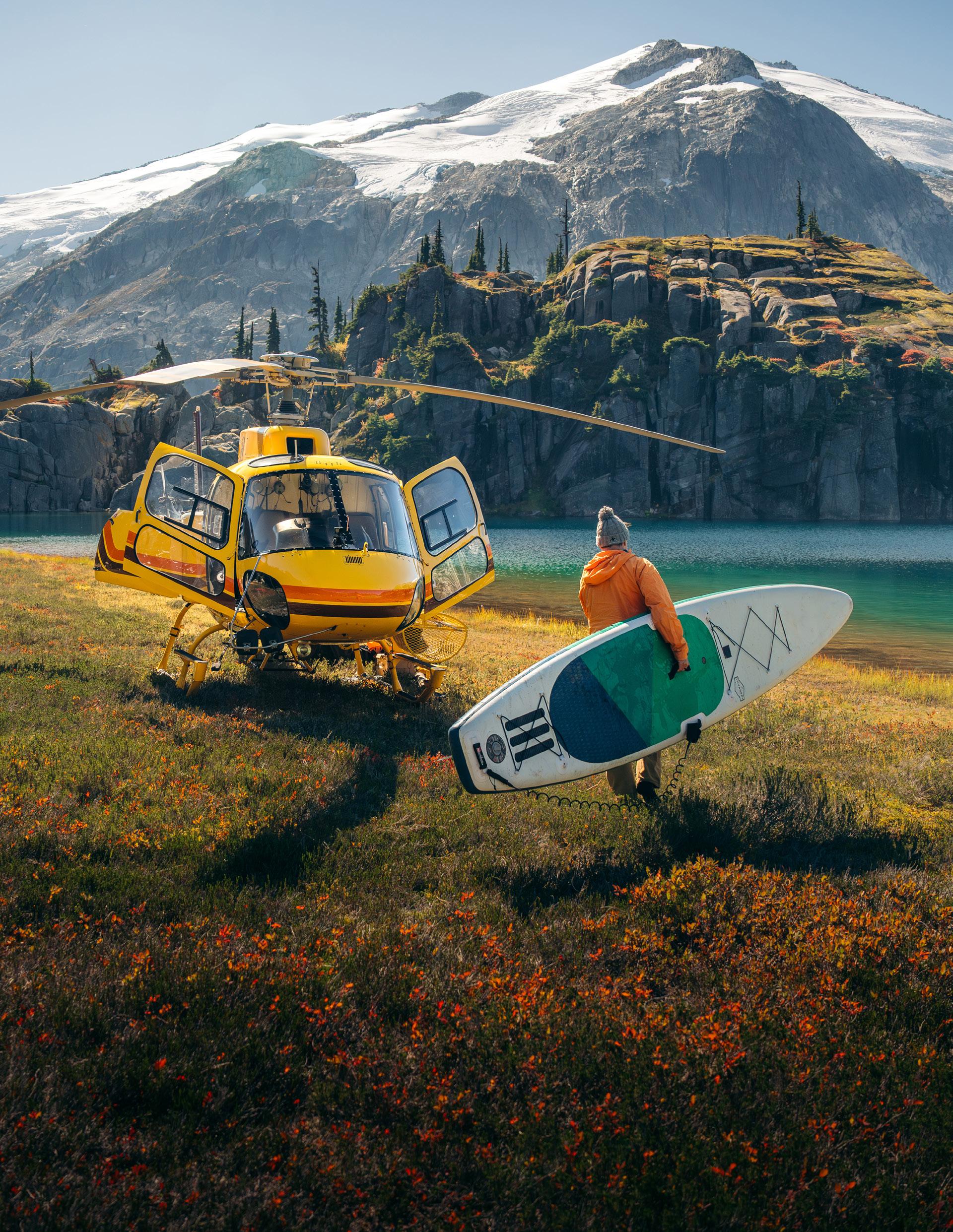
BEYOND LUXURY
How Cookson Adventures is Redefining the Art of Impact Travel
By Ana Goldenberg
For decades, luxury travel meant more: bigger suites, the largest superyacht, exclusive islands, rare vintage wines. But among ultrahigh-net-worth explorers, a shift is happening. Indulgence is no longer the ultimate aspiration. Instead, meaning, transformation, and purpose are becoming the new frontier. Cookson Adventures, a London-based travel firm, is redefining luxury travel. Their itineraries create unique experiences, combining cinematic scale with real-world impact. For the uber wealthy, it’s not just about destinations—it’s about the changes they bring to themselves and the world.
Fifteen years ago, Henry Cookson was transitioning away from life as banker at Goldman Sachs, with time spent as a horse-safari guide in Africa and then as a polar explorer. After winning a race to the North Pole and completing a recordbreaking expedition to the Southern Pole of Inaccessibility – the most central point of the Antarctic landmass – he realised that the kind of access, expertise, and logistical prowess needed to achieve such feats could be repurposed. Not just for worldfirst expeditions, but to deliver the world’s wealthiest and most influential a new form of luxury: personal adventures that leave a true lasting and measurable impact on the planet.
Today, Cookson Adventures has evolved into a leading travel and adventure specialist and architect of the extraordinarily creative experiences. They engineer ultrapersonalised adventures – designed always to impress, but with a focus on facilitating those experiences through conservation, scientific discovery, and cultural preservation. Social responsibility isn’t just a marketing line; trips have platformed elephant translocations, community empowerment initiatives and species discoveries – projects guests can experience first-hand.
Henry strongly believes that the best experiences challenge you, but they should also leave you with a deeper appreciation of our natural world. He invites clients to break bread with leading scientists, tribal elders and gatekeepers. Henry explains, ‘in a world where we seldom get a chance to truly switch off, we find our clients reach out to us to escape from the tsunami of information and responsibility they face in their daily lives. It’s why our long history of organising

remote – and sometimes even more extreme types of travel – attracts business luminaries. They often find a greater sense of clarity, perspective and presence through the adventures we design around them’.
What sets Cookson Adventures apart isn’t just access. It’s influence. Their expert team take the time to negotiate with governments to open up restricted areas, work with local leaders on in-depth recess to facilitate culturally sensitive visits and deploy scientific teams to integrate guests into real-world projects. Most luxury travel brands promise insider access; Cookson engineers it from scratch. Henry elaborates on this further; “In an era of unprecedented abundance, I’ve always tried to show people the world in an authentic way and that means not glossing over issues. Increasingly, our clients are more aware that time spent travelling with friends and loved ones forges more poignant memories and
connections. Accumulating assets for assets sake brings little reward. Understanding and immersing oneself in unfamiliar parts of the world, while also giving back – whether it be conservation or more humanitarianismbased philanthropy – is what excites them. For families, actively taking part in frontline projects is such an impactful way to build a positive legacy by teaching the younger generation about the importance of preserving our planet and our place within it. Engaging guests’ children in new ways is a challenge, especially in the increasingly social-media-driven world we live in. I’ve seen firsthand how getting them off their screens and connecting them with different cultures, while out in the wild can be transformational”. Families don’t have to travel to remote destinations for the adventure of a lifetime, as Henry showcased by describing one of their most recent trips to Egypt: “On our guests’ voyage down the Nile earlier this year, we wanted to bring Ancient Egypt’s history to



life in the most immersive way possible. We surprised our clients on their private yacht with an urgent request to help one of history’s great archaeologists – Howard Carter. With exclusive access to a privatised ancient temple afterdark, as well as a team of professional actors and musicians, the evening was cinematic in scope. Narratives were personalised around their group as they worked together to search for lost relics in the tomb. Adventure is not just about adrenaline; we wanted to recreate the excitement of that golden age of discovery that characterised 1920s Egypt and give our clients a taste of it in the modern day”.
Clients working with Cookson Adventures aren’t passive observers. They become participants, often catalysts, in projects that change the world.
Consider their recent translocation of 14 rhino in Kenya. Working alongside local conservationists, Cookson facilitated one of the largest movements of rhinos in the region’s history. Organised as part of a thoughtleadership retreat, Cookson’s clients were on the frontline: monitoring heart rates, stabilising
the rhino’s temperature, and learning, firsthand, about the challenges of keeping that fragile ecosystem thriving. This was raw and powerful. Not only did their involvement assist in such an important cause, but it provided a new level of travel experience. And, by filming the experience with Cookson’s in-house media team, a short documentary was released to raise awareness on the high stakes that are involved when trying to translocate several of the world’s largest and most critically endangered mammals.
Then, in Antarctica, Cookson brought along a research vessel alongside their client’s private yacht trip. Biopsies gathered by the team helped identify what proved to be a previously unclassified subspecies of killer whale. This wasn’t a tourist cruise. This was the chance to contribute to our scientific understanding – something both educational and impactful for the client’s family.
Similarly, in the Galápagos, with their close relationship with the National Park, Cookson facilitated the measurement of juvenile hammerheads and geotagging of giant

tortoises. With no helicopters stationed in the archipelago, Cookson brought them in to assist conservationists relocate hundreds of giant tortoises to safer environments and build a research station where baby pink iguanas were discovered for the first time.
For Henry’s discerning clientele, that proposition lands powerfully. Yes, there are superyachts and helicopters. But they’re tools – tools to access moments and opportunities that most of the world will never know exist.
For the ultra-wealthy looking to make a mark, not just a memory, Cookson Adventures stands almost alone. In a world where too many operators offer experiences simply designed around comfort, Cookson elevates by designing journeys built on impact on yourself and the planet.
In short, if you’re seeking the kind of trip your peers can’t buy, and your grandchildren – future or otherwise – will thank you for, Cookson Adventures may be the quiet name you need to know.


CRESCENT SEAS
Where Global Exploration Meets Luxury Living
By Amy Poliakoff


More than two-thirds of the Earth is covered by water, so why limit our homes to land? Crescent Seas is reimagining what it means to live luxuriously, turning the open ocean into the next frontier of modern living,” said Nili Galbut, Luxury Sales Specialist, Crescent Seas.
At the helm of this project is Russell Galbut, one of the founding partners of the renown real estate development firm Crescent Heights. With a legacy spanning 50 years in real estate development and over two decades in the cruise industry, including six and a half years on the board of Norwegian Cruise Line, Russell Galbut is uniquely positioned to bring this dream of high seas living to life. As the founder of
Crescent Seas, he’s revolutionizing modern living once again, this time, at sea.
"My grandfather, Captain Hyman P. Galbut was in the U.S. Navy, and his love for the sea passed down to my uncle, Russell. Building a home on the water isn’t just another project for him, it’s carrying on a family legacy,” said Nili.
Russell Galbut’s proven track record includes the transformation of the 100-year-old 25 Broad Street on Wall Street into one of New York’s most sought-after residences. Now, he brings his expertise to the Regent Seven Seas Navigator, known for its luxury and elegance. The ship will be renamed

the inaugural vessel for Crescent Seas.
With a $70 million overhaul launching in December 2026, The Navigator Residence at Sea will offer the most reliable internet connectivity on the high seas thanks to its integration with Starlink and will blend cutting-edge infrastructure with timeless design.
The transformation will reduce the ship’s original 255 cabins to 210 private residences, ranging from $750,000 to $8 million. From spacious one-bedroom layouts to expansive multi-bedroom residences, every Suite offers a refined blend of luxury, comfort, and elevated living at sea.
Apollo Group will oversee shipboard hospitality and guest services, delivering a 5-star concierge experience rooted in over 50 years of cruise industry excellence. What truly sets Crescent Seas apart is the sense of community it fosters. This is not a traditional cruise, it’s a floating neighborhood of global citizens. Through curated enrichment programs and community-building experiences, residents will form lasting connections while engaging with the world.
The Navigator Residence at Sea will dock in 140 cities across six continents within its first 14 months, with residents having influence over future itineraries for a bespoke lifestyle on the move. Its shallow draft allows access to exclusive ports that larger ships can’t reach, including St. Barts, Capri, Portofino, and hidden South Pacific gems.
The interiors of The Navigator Residence at Sea will undergo a complete reimagining by three world-renowned design firms, MAWD (March & White Design), Lissoni & Partners, and Journey. MAWD will curate intimate spaces like the piano bar and private dining areas with sophisticated touches such as backlit ceilings and bronze finishes. Lissoni & Partners will focus on the onboard wellness and lifestyle amenities including a world-
class spa. The ship will also offer a pool bar, multimedia room, golf simulator, cigar lounge, and the Compass Rose restaurant, one of the largest restaurant at sea.
The Navigator Residence at Sea will provide professional medical care with licensed doctors and nurses abroad to provide care and emergency services as needed.
Looking ahead, Crescent Seas is far from finished. Its second ship, Insignia, is slated to launch in 2027, followed by a newly built vessel called The Ocean, scheduled for 2032.
Russell Galbut’s decades of work in real estate and cruising have led to this vision, made even more meaningful by the fact that it’s a true family affair.
“Why buy a home in one key city when you can have a home in every key city of the world? The future is limitless living without compromise,” said Nili Galbut.

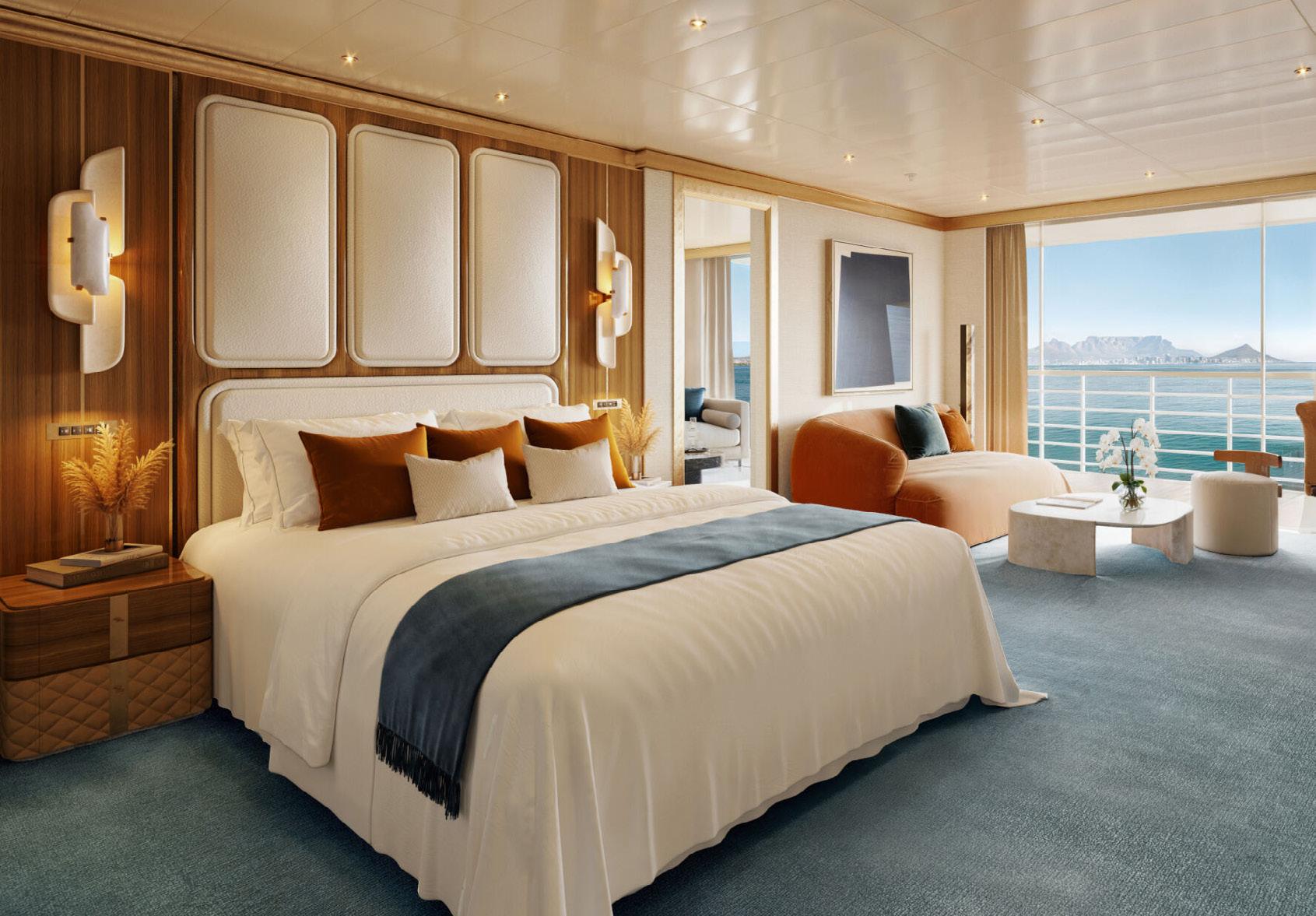



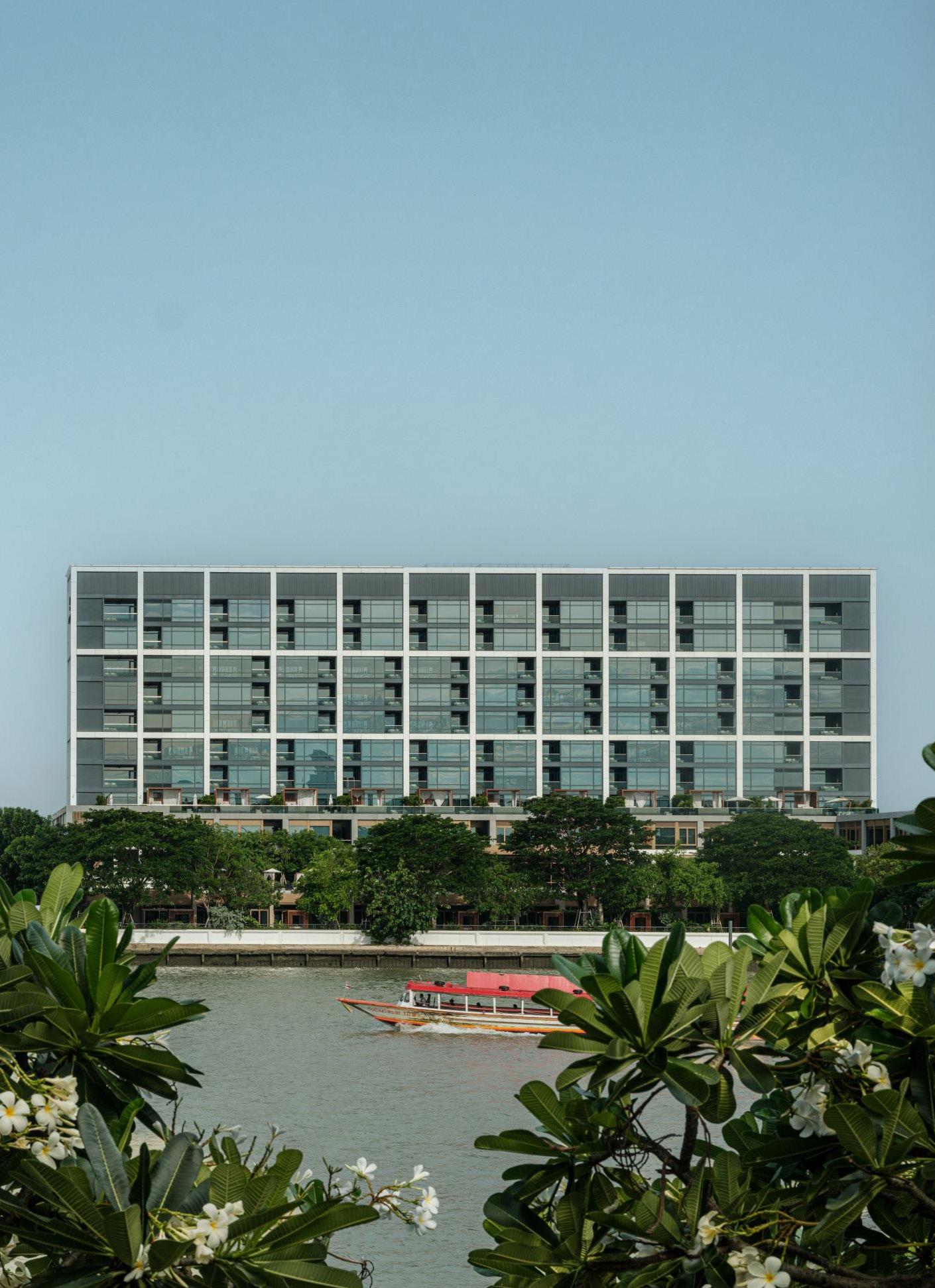
CAPELLA BANGKOK
Where Opulence Meets the River of Kings
By Hillary Latos

In the bustling heart of Bangkok—where the Chao Phraya River carries the city’s heritage like a flowing museum—stands a sanctuary of exquisite design, personal service, and timeless elegance: Capella Bangkok. This riverfront masterpiece is not just a hotel—it is a celebration of luxury redefined, where every moment feels curated for royalty and every detail whispers indulgence.
A Riverside Gem Like No Other
Nestled along Charoenkrung Road— Bangkok’s oldest paved street, now a thriving hub of art, culture, and culinary innovation—Capella Bangkok rises as a jewel of tranquil sophistication. Its prime riverfront location affords panoramic views of the Chao Phraya River, a site historically referred to as the “River of Kings.” From its strategic positioning, guests can experience the city’s vibrant duality: ancient temples to the east, glittering skyscrapers to the west, and Capella’s serene oasis right in between.
Unlike the often impersonal scale of five-star behemoths, Capella Bangkok has artfully blended the grandeur of a world-class resort with the soul and spirit of an intimate boutique retreat. With only 101 accommodations— including stunning riverside villas and spacious suites—every guest is treated as an individual, not a room number.
Private Villas: Bangkok’s First Waterfront Residences
For the true connoisseur of luxury, Capella’s riverside villas offer a new pinnacle of indulgence. These are Bangkok’s first-ever private waterfront villas, designed with a blend of indoor-outdoor living and outfitted with private plunge pools, lush gardens, and floor-to-ceiling windows that frame the river like a constantly evolving painting.
Spanning 259 square meters, the villas come with private entrances, secluded terraces,
and generous living areas that exude modern Thai elegance. The Presidential Villa, a majestic 595-square-meter compound, is the crown jewel—ideal for high-networth individuals, diplomats, or celebrities seeking absolute privacy, complete with 24-hour Capella Culturist service, private chef access, and yacht transfers upon request.
The Capella Culturist: Your Personal Bangkok Concierge
What truly elevates a stay at Capella Bangkok is the Capella Culturist—a dedicated personal assistant for every guest. This bespoke service reimagines concierge excellence, offering personalized itinerary planning, on-call butler service, and cultural immersion experiences that peel back the layers of Bangkok’s rich history. Whether you’re seeking a private gallery tour, a bespoke temple visit at dawn, or a chefled street food exploration, your Culturist makes it happen with effortless grace.

Culinary Marvels: Two Michelin Stars and Beyond
Capella Bangkok has become a destination not only for luxurious stays but also for culinary pilgrimages. At its helm is Côte by Mauro Colagreco, the Riviera-inspired restaurant that has earned two MICHELIN stars, a rare distinction in Thailand’s gastronomic scene. Conceptualized by the legendary three-Michelin-starred Chef Colagreco— best known for his acclaimed restaurant Mirazur in France—Côte showcases the flavors of the Mediterranean with innovative Thai touches. Think line-caught fish paired with lemongrass beurre blanc, or saffronpoached lobster with green curry espuma.
For those who seek a more localized experience, Phra Nakhon—set in a sun-drenched greenhouse along the riverbank—offers authentic regional Thai cuisine. Its menu pays homage to ageold family recipes, delicately modernized for the discerning global palate.

Capella also boasts the jewel-like Stella Bar, where cocktails are not merely poured but choreographed. The latest menu, The Journey of Old Siam, pays tribute to the kingdom’s storied past through rare Thai ingredients and elegant mixology with bespoke cocktails. Led by newly appointed Bars Manager Miriam Nini, Stella’s feminine spirit now takes center stage with live music every night in a glamorous setting.
Auriga Wellness: A Sanctuary Within a Sanctuary
Luxury at Capella Bangkok is not confined to sights and tastes—it extends into deep personal wellbeing. The 1,074-square-meter Auriga Wellness Spa is a serene refuge, where modern science meets ancient healing. With seven treatment suites, including two for couples, and amenities like water therapy zones and a dedicated wellness pavilion, the spa offers individually tailored experiences that reflect the natural cycles of the moon and local Ayurvedic principles.
Guests arriving from long-haul flights are welcomed with a complimentary jet lag wellness ritual, ensuring their journey into serenity begins the moment they step into the resort.
The Living Room: Exclusive Cultural Immersion
Reserved exclusively for Capella guests, The Living Room serves as a private lounge that hosts rotating cultural vignettes, culinary demos, art immersions, and even traditional Thai storytelling. It is here that guests can sip afternoon tea overlooking the lily pond, or enjoy an aperitif while watching long-tail boats glide by. It’s a place that bridges luxury hospitality with authentic cultural storytelling.
Where Bangkok Celebrates in Style
Capella Bangkok is also a premier venue for luxury weddings, exclusive galas, and ultra-private corporate retreats. Its 747-square-meter ballroom and riverfront Atelier spaces are designed with Art Deco glamour and outfitted with state-of-the-art technology. Every event is orchestrated to perfection—down to riverside fireworks displays and Michelin-starred catering.
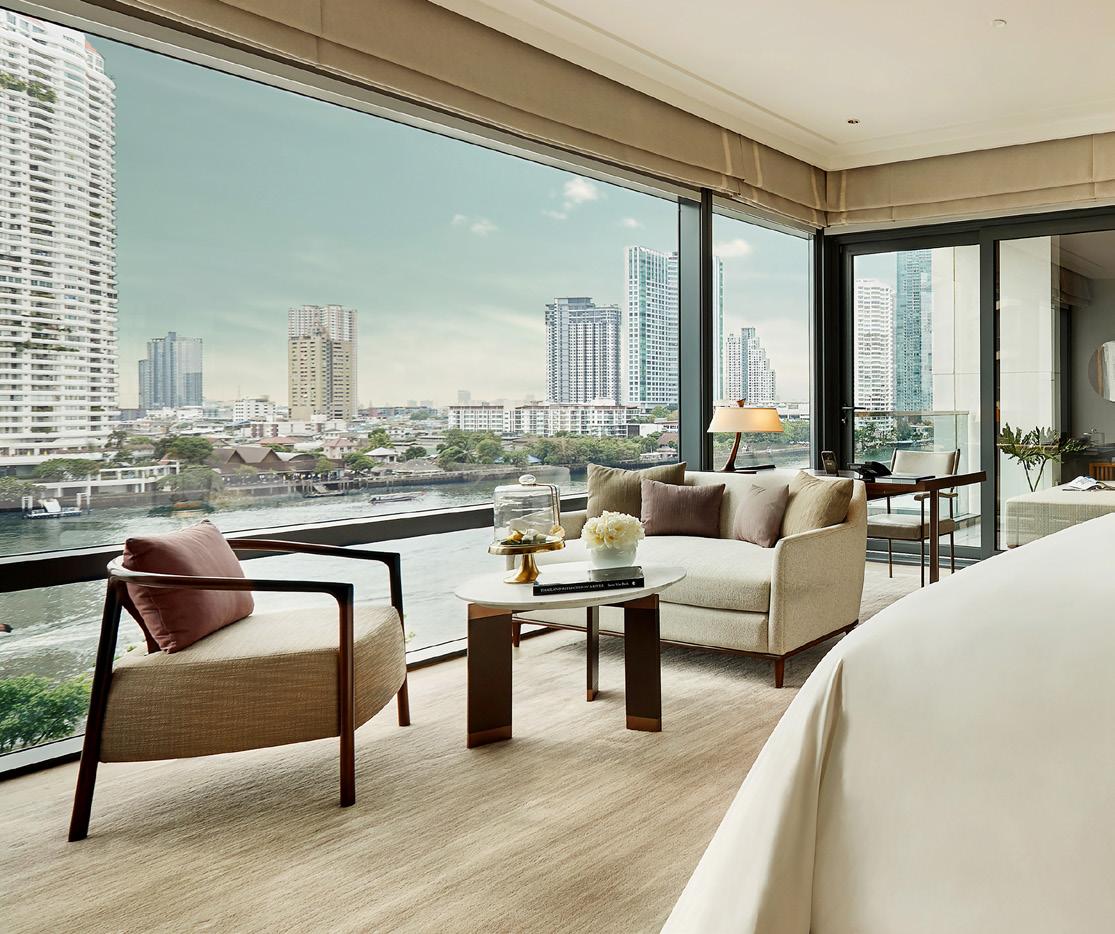


Accolades That Speak Volumes
Capella Bangkok’s accolades are not just decorative—they are testaments to the resort’s peerless standards. Named No. 1 Hotel in Bangkok by Travel + Leisure Asia Pacific Luxury Awards 2024, the property has also earned two MICHELIN Keys, and a place on the Condé Nast Traveler Gold List 2025. Forbes Travel Guide has awarded it both Five-Star Hotel and Five-Star Spa distinctions.
Perhaps most tellingly, Capella Hotels & Resorts was named World’s Best Hotel Brand for three consecutive years by Travel + Leisure, and Capella Bangkok itself ranked among The World’s 50 Best Hotels—a title it wears not as a trophy, but as a promise to every guest who walks through its doors.
A Destination for the Ultra-Discerning
For those seeking the ultimate escape in Southeast Asia, Capella Bangkok is not just a place to stay. It is a place to arrive, to connect, to transcend. Here, the past flows into the future, and luxury becomes a personal art form.
www.capellahotels.com/bangkok. @capellabangkok
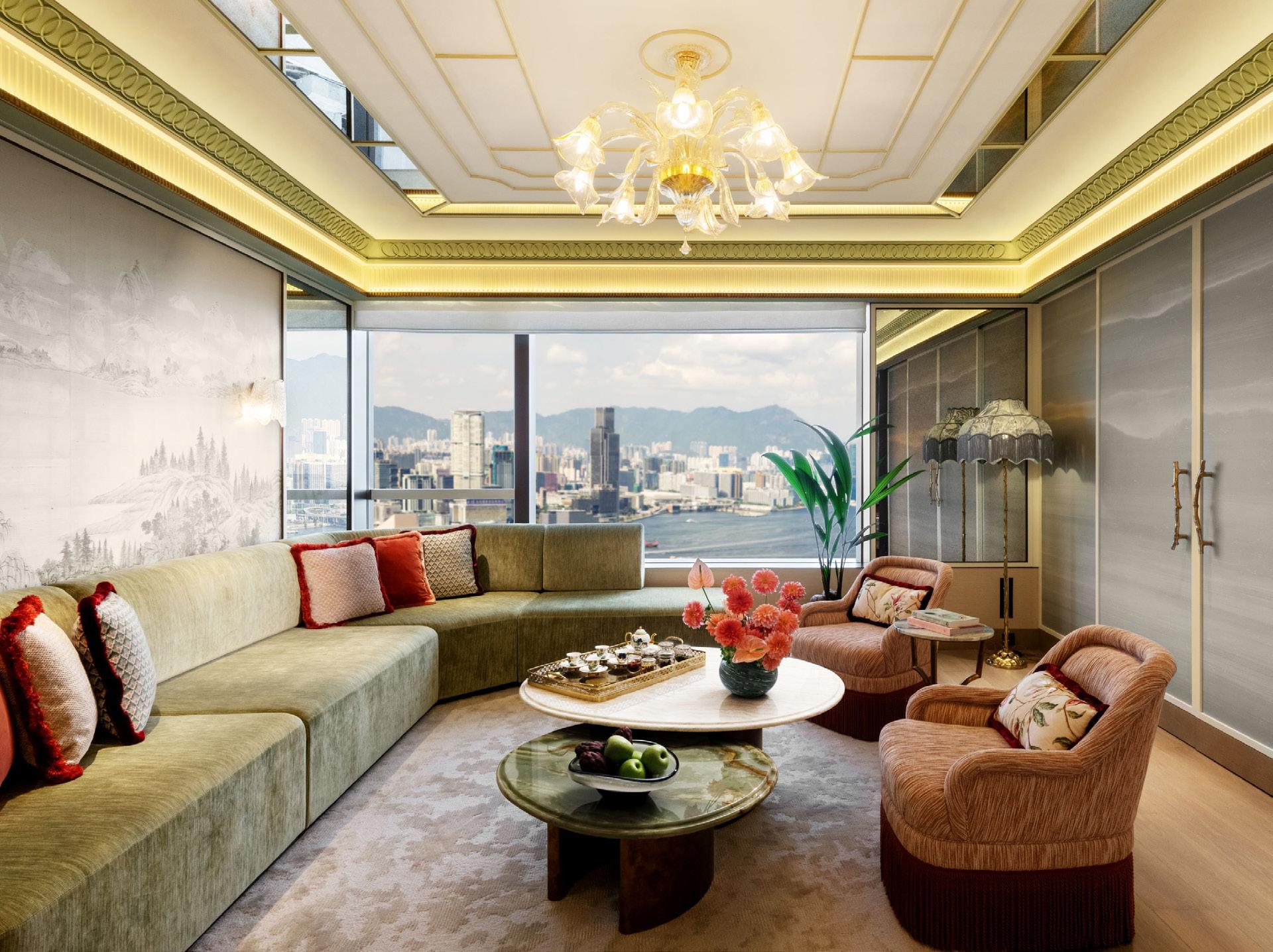
ISLAND SHANGRI-LA, HONG KONG
Elevated Elegance in the Heart of the City
By Hillary Latos

In a city known for its vertical marvels and dynamic energy, the Island Shangri-La Hong Kong rises as an oasis of refined serenity. Soaring 56 stories above the gleaming skyline of Admiralty, this iconic hotel seamlessly blends timeless Asian hospitality with contemporary luxury. With its unmatched location, panoramic views of Victoria Harbour, and curated experiences for both discerning travelers and multi-generational families, Island Shangri-La is more than a hotel—it is a destination of its own.
Lobster Bar & Grill: A Symphony of Jazz, Lobster, and Elegance
As night falls over Hong Kong, the Lobster Bar & Grill evokes the timeless glamour of the Roaring Twenties with its rich mahogany accents, brass detailing, and dimly lit sophistication. A live jazz ensemble sets the mood, enveloping diners in a velvety soundtrack of swing and soul. This
sensory journey begins at the elegant bar, where expert mixologists craft signature cocktails with precision and flair. Guests then settle into intimate tables to savor a menu of impeccably prepared seafood and prime cuts—highlighted by succulent Boston lobster, freshly shucked oysters, and melt-in-your-mouth Wagyu beef.
Petrus: Michelin-Starred French Refinement
Perched on the 56th floor, Restaurant Petrus is the crown jewel of Island Shangri-La’s culinary offerings. Helmed by Executive Chef Uwe Opocensky, the restaurant holds a Michelin star and a reputation for redefining French fine dining in Asia. The interiors evoke Parisian glamour, while the tasting menus showcase vibrant reinterpretations of classic French cuisine—each course paired with rare vintages from the restaurant’s extensive cellar of over 1,800 labels.

For the haute cuisine connoisseur, Petrus offers not only panoramic harbour views but also an immersive gastronomic journey that celebrates craft, complexity, and a deep reverence for ingredients.
Ming Pavilion: A Midday Retreat into Hokkien Heritage
For lunch, Ming Pavilion beckons with a voyage into the rich flavors of Hokkien cuisine. Using traditional techniques and fresh local ingredients, each dish tells the story of southern China’s culinary heritage. Guests are invited to explore bold yet delicate dishes like braised pork belly with taro, stir-fried clams in black bean sauce, and a curated tea program that elevates the meal into a cultural experience.
YUN Wellness: A Holistic Urban Oasis
Luxury at Island Shangri-La extends beyond aesthetics—it reaches into the realm of wellness and rejuvenation. YUN Wellness, the hotel’s nature-inspired spa sanctuary, offers a holistic approach to wellbeing. The space features a 28.5-meter outdoor swimming pool, a state-of-the-art fitness center with Technogym equipment, and an array of treatments ranging from traditional Asian therapies to modern physiotherapy and nutritional programs.
Guests can indulge in signature facials, deep tissue massages, or bespoke wellness journeys curated by expert practitioners. Whether seeking recovery after longhaul travel or a day of inner peace, YUN Wellness delivers a world-class experience in harmony with the hotel’s Eastern ethos.
A Family Floor Designed for Discovery
Recognizing that luxury travel now includes the whole family, Island Shangri-La has unveiled its Family Floor—a first-of-itskind dedicated space offering 21 themed suites designed to inspire wonder. Each suite is a storybook brought to life, from “Underwater Treasure” and “Fairy Garden” to “Safari Adventure” and “Campervan Haven.” All rooms come equipped with slides, interactive features, and beautifully curated interiors that spark imagination.
Parents are equally pampered, with The Pantry stocked with childcare essentials and The Hangout—a communal space with games, board books, and family activities. The philosophy here is simple: luxury for all generations, without compromise.
The Shangri-La Suite: The Pinnacle of Penthouse Living
For high-net-worth travelers, dignitaries, and celebrities, the Shangri-La Suite offers an elevated residential experience. Spanning 222 square meters, this two-bedroom masterpiece features floor-to-ceiling views of Victoria Harbour, a jade-green marble cocktail bar, and a ten-seat dining table lit by French crystal chandeliers. The ensuite bathroom, adorned with a golden ceiling and a mosaic tub, is nothing short of a personal spa.
Designed by French interior maestro Tristan Auer, the suite is a symphony of East-meetsWest luxury—ideal for private events, cocktail soirees, or simply savoring solitude in style.
Transportation Fit for Royalty
Luxury at Island Shangri-La begins before you even step into the lobby. For those arriving in ultimate style, the hotel offers transportation in its signature Rolls-Royce Phantom—a gleaming symbol of prestige and bespoke comfort. Whether it’s a pick-up from Hong Kong International Airport, a scenic transfer to


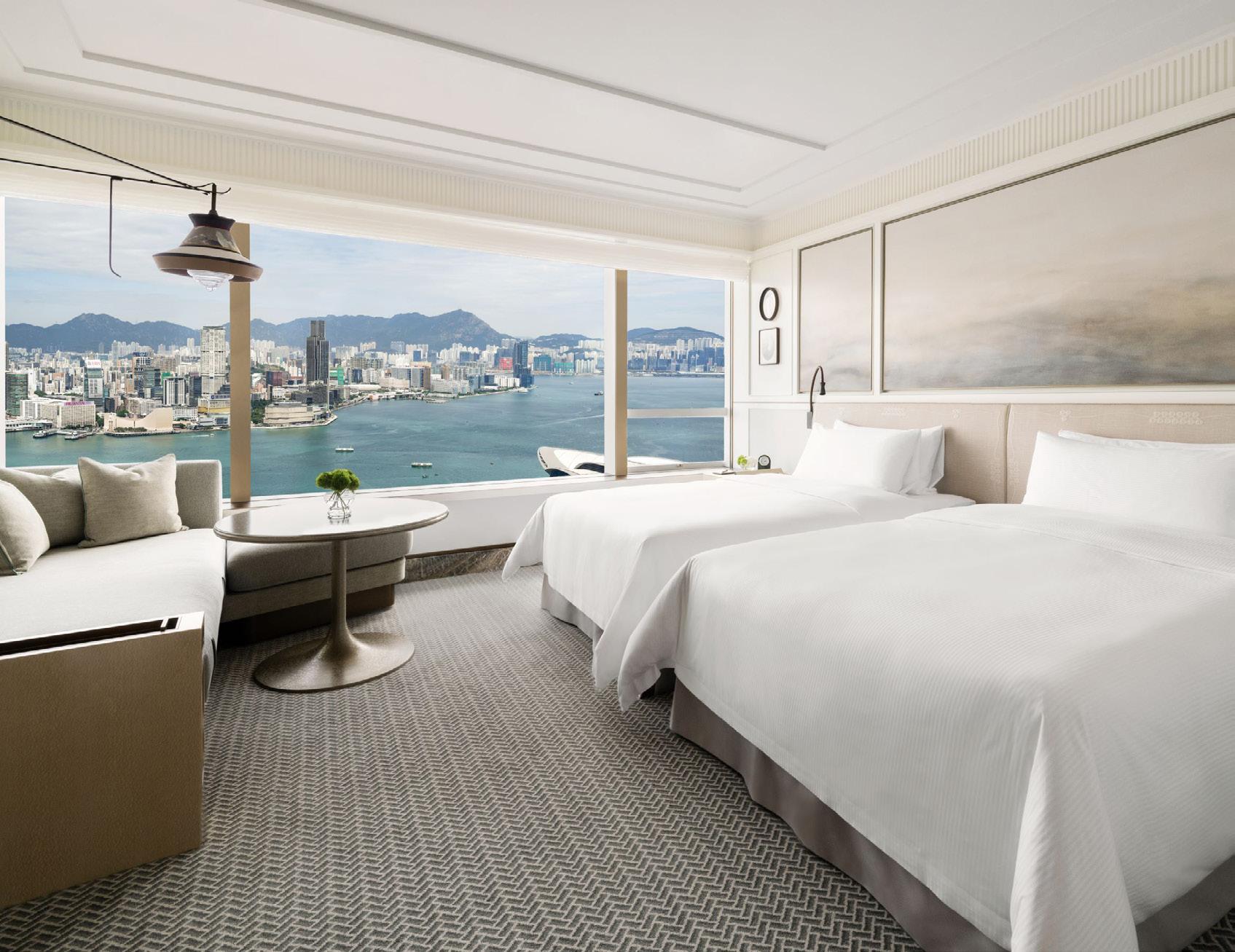

a business meeting in Central, or an evening out in SoHo, each ride becomes an extension of the hotel’s unparalleled service philosophy.
A Central Location with a Green Heart
Perfectly perched above the Pacific Place Mall, Island Shangri-La gives guests direct access to over 160 of the world’s most luxurious brands and fine dining establishments. With the Admiralty MTR station located just steps away, the entire city is within reach—from the historic Star Ferry to the tranquil Peak Tram.
Yet perhaps most enchanting is the hotel’s proximity to Hong Kong Park, a picturesque oasis just five minutes away on foot. With its botanical gardens, koi ponds, and the historic Flagstaff House Museum of Tea Ware, the park offers a serene escape amidst the city's buzz.
A Masterpiece in the Sky
From its world-class gastronomy to its thoughtful family experiences and bespoke wellness offerings, Island Shangri-La redefines what it means to stay in Hong Kong’s most cosmopolitan district. It is an elevated lifestyle, a curated retreat, and an homage to Shangri-La’s legendary service—all set against the backdrop of one of the most iconic skylines in the world.
For the affluent traveler who demands both sophistication and soul, Island Shangri-La is more than a hotel—it is Hong Kong at its most exquisite.
www.shangri-la.com/hongkong/ islandshangrila @islandshangrilahk
BEYOND THE CHECKERED FLAG
How Stephen Ross and Tom Garfinkel Built
America's Most Exclusive Driving Club
By Candice Beaumont
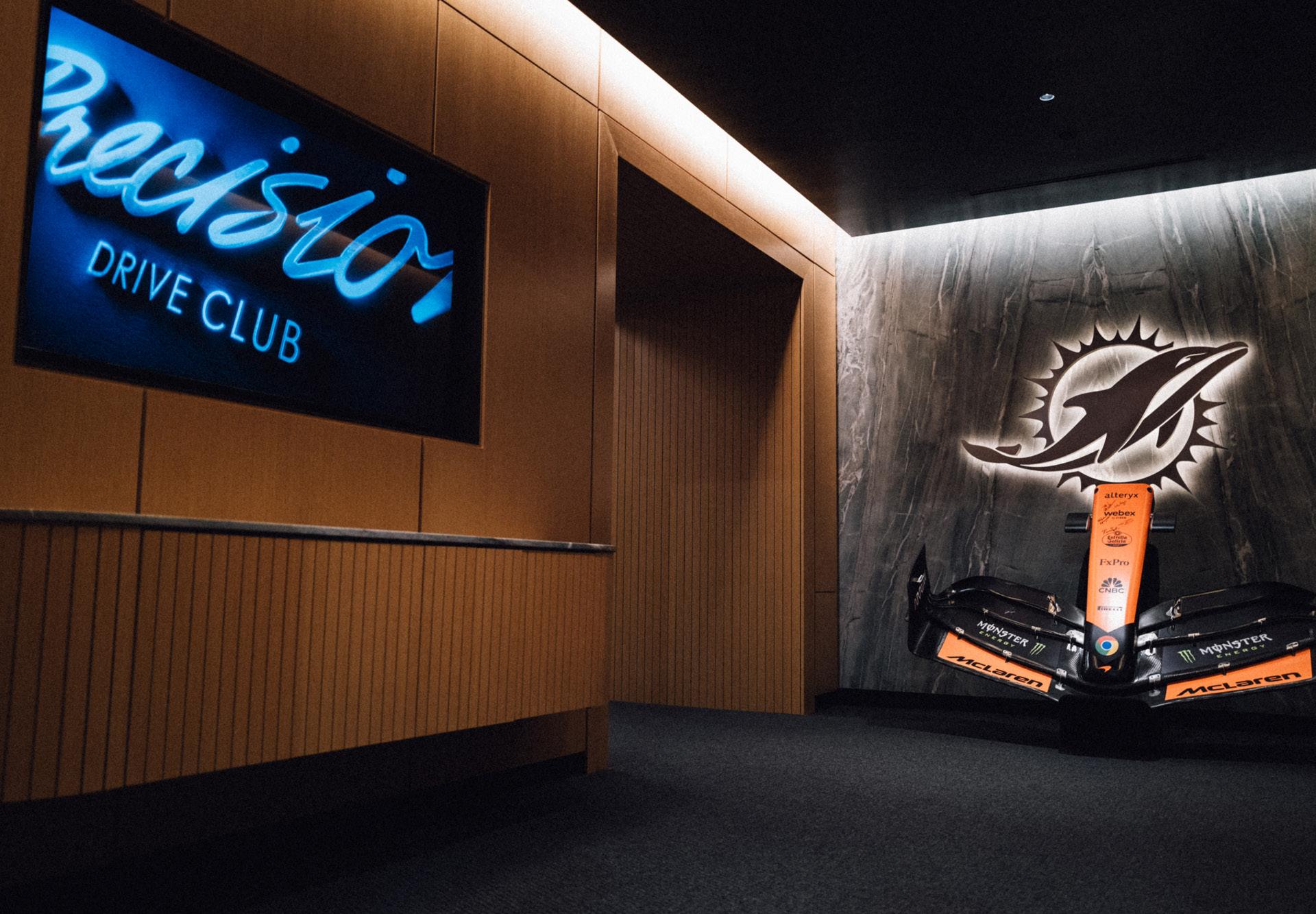

In the wake of the record-breaking success of the Formula 1 Crypto.com Miami Grand Prix, Miami Dolphins Owner Stephen Ross and Vice Chairman, President and CEO Tom Garfinkel are once again shifting the gears of South Florida’s luxury scene with a high-octane venture tailored for automotive enthusiasts with discerning taste. Introducing the Precision Drive Club: an invitationonly experience that fuses unparalleled hospitality, elite networking, and curated lifestyle events into a year-round destination for those with a passion for speed.
This isn't just another car club. It's a precisionbuilt ecosystem designed for collectors, CEOs, tastemakers, and motorsport aficionados who crave more than horsepower. They crave belonging. Inspired by the exclusive Palm Club experience they curated for F1's global elite, Ross and Garfinkel are expanding the concept beyond race weekend into a permanent home for Miami’s most powerful and passionate automotive minds.
Set against the backdrop of South Florida’s rising status as a luxury capital, the Precision Drive Club promises access, adrenaline, and atmosphere: all delivered with the white-glove execution that has defined the Ross-Garfinkel partnership from Hard Rock Stadium to the international F1 circuit, the Miami International Autodrome, built around the world-class venue. If the Miami Grand Prix proved they could deliver world-class entertainment at scale, the Precision Drive Club proves they can offer a more exclusive and intimate experience at high speeds.
In this exclusive interview, Miami Dolphins Vice Chairman, President and CEO and Hard Rock Stadium visionary Tom Garfinkel reveals how he transformed unused Formula One infrastructure into the Precision Drive Club. The Club is a members-only sanctuary where billionaires and driving enthusiasts can push their Ferraris to 200 mph on the same track where Lewis Hamilton races. With just 25 current members and plans to cap at 100,
this isn't just another car club. It's redefining what luxury motorsports experiences can be.
ON INNOVATION & VISION
What sparked the idea to create something that didn't exist anywhere else in America?
Because of Stephen Ross’s private investment, we are fortunate to be able to think differently about how we use our facilities and our campus around Hard Rock Stadium. The Precision Drive Club is no different. We had built this incredible luxury 190,000 square foot paddock club building with permanent garages – not to mention an FIA Grade 1 track -- for the Miami Grand Prix and I kept thinking: how do we use these world-class facilities more than just three days a year?
Miami is really a curator of culture— hospitality, food, art, music, sport, fashion. There's also this incredibly enthusiastic car culture here. For most luxury car

manufacturers, Miami is their most lucrative, most important market in the country. So we had this pre-existing market, these stateof-the-art resources, and I knew we could package it into something truly unique. Thankfully Stephen saw the same vision and supported us taking the steps to create this.
But what makes Precision Drive Club special is not simply the facilities, though they are incredible – it’s the people. What began as an idea to use our assets in creative ways has transformed into a curated community of people with a genuine love for driving, for luxury and for unique experiences – something we feel grateful that we are uniquely positioned to provide.
What's the biggest misconception people have about high-end car clubs?
Most people think they're all the same and just places to store expensive cars and drive around small tracks. But ours is built around an actual Formula One racetrack with five different configurations, meaning each track day the challenge for the driver looks different.

Other clubs have tracks where you can't really open up your car. You get lots of turns and braking, but no real speed. Here, you have technically challenging sections and a long straightaway where you can hit 200 miles per hour down the backstretch. It allows you to unleash a high-end car the way it was meant to perform.
On top of a premier on-track experience, what also sets us apart is the resources we provide to members. Every moment of a day at the track is thought out and intentional. We offer onsite coaching from professional drivers, world-class dining from the most well-known Miami restaurants and luxurious amenities for members to gather with friends, family and other members.
Alex Krys, one of the founding members of Precision Club captured it perfectly when he said, “For me, this is my golf club. Except instead of a round of golf, you’re doing a 45-minute session at 160 miles per hour. And like golf, you’re constantly learning—with decorated professional drivers helping you improve and coaching you with real data.”
Alex also regularly brings his sons with him to the track, and he’s able to share his passion with them. That blend of extreme performance, continuous learning and shared experiences is what sets us apart.
ON EXCLUSIVITY & EXPERIENCE
You're capping membership at 100 people. Why deliberately limit your revenue potential?
We are uncompromising in our commitment to the member experience. We don't want people showing up and not being able to get on the track because it's too crowded. We believe we have the right scale to maintain the luxury experience our members expect and deserve.
We are also curating the member group carefully, and the current members are a big part of that process. Precision Drive Club is an invitation, not an application. The members want to share the experience with people who have the same passion for driving and luxury hospitality that they do.

For many of our members, this has become a sanctuary where they can completely escape daily life. One of our members put it perfectly: “You can’t think about your phone or your business—you’re thinking about the next turn and the next turn after that. It’s meditative and all-consuming. For people constantly running businesses or juggling responsibilities, it’s the only time you truly disconnect.” That’s exactly the feeling we wanted to create, and the exclusivity of the membership is a big part of that.
Walk me through what a typical day feels like for a member.
Every detail is designed to feel bespoke. When you arrive, your car is already on the setup pad with new tires, everything ready. If you don't own a race car, no problem—we have four McLarens you can take out anytime.
You get dressed in the Miami Dolphins game day locker room. There's a customized fire suit hanging for you, a personalized helmet, a custom bathrobe. We stock Kiehl's products and high-end toiletries.
We have professional drivers on-site for training, plus high-end racing simulators for when you want to practice without getting on track. We use the same Formula One timing and scoring systems that we use during race weekends. You get real data on your performance, just like the professionals. We also have a professional content team on site to capture your time on track.
When you’re done driving for the day, you then go to our members-only lounge where the food rotates between top local restaurants like Zuma and Casa Tua, paired with exceptional wines. The lounge is open until the last member leaves.
The Precision Club should feel like an oasis for members, and we have an incredible team who thinks through every detail to ensure that is the case.
Tell me about your brand partnerships. How do they enhance the member experience?
Richard Mille has come on as a partner.
They have prominent track signage and are integrated into our member experience.
McLaren is a major partner ,as well. Members are of course welcome to drive their own cars, but they also have access to drive the four McLarens we have available here.
These partners recognize the quality of our membership and what that means for their brands. It's not just about exposure -- it's about creating authentic experiences for people who are genuinely passionate about these machines.
What's one experience members get that they literally can't get anywhere else?
During Formula One race weekend, our members actually get to drive their cars around the track while all the fans are watching. Think about that—50,000-plus people in the stands, and you're out there in your Ferrari on the same track where Max Verstappen just raced. You cannot do that anywhere else in the world.
The global reach of the club also means our members enjoy unique opportunities. One member was recently in Europe on a trip, and we were able to facilitate him being hosted at the Austria Grand Prix It’s that seamless blend of local and international access that really defines our experience.
ON BUSINESS & FUTURE
This feels like more than a car club. It's extending your entire motorsports ecosystem.
Exactly. We're creating a year-round home for motorsports enthusiast culture. First, we brought Formula One. Then we expanded our track to have five different configurations, allowing us to host events such as the Ferrari Challenge and Formula E throughout the calendar year. Of course, our Precision Club members have exclusive access to all of these, in addition to access to the drive the track throughout the year.
But on top of that, we are also proud to be home to the Miami Dolphins, the Miami Open tennis tournament, major concerts, international soccer including the FIFA World Cup in 2026—we're building
something that connects all these luxury experiences at Hard Rock Stadium.
One member recently shared how meaningful that wider access is: “Once you're in, you have this very exclusive access to everything happening in and around the venue. It’s an incredible bonus.”
The people passionate about Formula One racing and high-end cars don't just disappear after race weekend. This gives them a home, a community, a way to stay connected to that world, to luxury hospitality and to each other.
What's one thing that surprised you most about your members?
How much they value the community aspect. I thought it would primarily be about the cars and the track. But these are people who could afford to build their own private tracks—what they really want is to be around other people who share their passion at the same level of intensity and sophistication.


You've created something that seems almost impossible to replicate. Was that intentional?
It's very differentiated because of the nature of having an actual Formula One track and our unique location. Other car clubs are often real estate plays where you buy property around a racetrack. Ours is purely about the driving experience, premier hospitality and the community.
Could we potentially take elements to other places? Maybe, in conjunction with other races. But for now, we're focused on perfecting what we have here.
How do the membership fees compare to other exclusive experiences?
I'd rather not disclose specific numbers, but I can say the initiation fee is in line with what you'd find at some of the highest-end golf courses in the country. The annual dues are higher than a typical golf membership, and that's because of the cost of operating a racetrack.
Some golf courses might have 500 or 600 members, but we're capping at 100. When you

factor in the expense of maintaining a Formula One-grade facility, the professional staff, the safety systems, the timing equipment—it's a different level of operational complexity.
ON LEADERSHIP & PHILOSOPHY
What's your approach when creating something completely new in a market?
Focus on the experience being the most important thing, not the revenue. This level of customer doesn't want to be nickel-anddimed on everything. They want to show up and feel completely taken care of.
After you pay your initiation and annual fees, everything else is included—food, beverages, professional instruction, car storage, services. The only exception is our premium wine list, which is obviously additional.
Luckily, this isn’t the first time we have created something totally new. From being first in the NFL to provide certain luxury hospitality and seating products at Hard Rock Stadium, to outfitting the venue to host the Miami Open, to Formula 1, we have learned quite a bit through the years about starting with a unique vision and bringing
it to fruition. The common thread amongst those examples is and will always be – what kind of quality experience are you offering to people, and can you deliver on that promise? We never lose sight of that.
What's one failure or challenge that shaped how you built this?
Understanding that exclusivity isn't just about high prices. It is about curation. We're not invite-only, but we're very much word-of-mouth. We want members who enhance the experience for everyone else, not just people who can afford it.
LOOKING FORWARD
Where do you see this in five years?
Once we get to scale on membership, we'll see how we can grow or evolve it. Right now we're laser-focused on creating an incredible experience for our current members and growing to the right mix of people.
We will also continue to grow and evolve our motorsports business. In early 2026, we will host Formula E for the first time which is an all-electric racing series that
represents the future of motorsports. Alongside events like the Ferrari Challenge, it's part of a growing ecosystem that positions the Miami International Autodrome as more than a venue—it’s becoming a year-round hub for innovation, speed, and motorsports culture that extends far beyond just Formula One. And our Precision Drive Club members will have exclusive access to all of it – a unique treat for those with a passion for great racing.
Finally, what's one thing you wish more people understood about what you've built?
This isn't just about having expensive cars or exclusive access. It's about creating a place where the quality and exclusivity of the racing and culinary experiences are only outmatched by the quality and exclusivity of the membership itself.
We're not trying to be everything to everyone. We're trying to be something truly special for people who live and breathe this passion.
The Precision Drive Club is open for track days from September through May. More information can be found at precisionclub. com. Membership inquiries can be directed to memberships@precisionclub.com.

MARK MASONE A Legacy of Creativity and Resilience
By Hillary Latos
Mark Masone is the Founder and Creative Director of Designs by Mark Masone, a celebrated floral and event design company. He also thrives in the real estate world, working as a Broker with Corcoran Real Estate. His diverse career spans decades and is marked by creative excellence, adaptability, and an unwavering commitment to his passions.
Born on May 15, 1975, in Rockville Centre, NY, Mark grew up surrounded by creativity and hard work. His family’s construction business instilled in him a strong work ethic, while his entrepreneurial spirit led him to explore his own creative endeavors at a young age.
Mark’s journey began when he took a job at a local floral design shop at age 14. By 18, he opened his own store, combining his artistic eye with an entrepreneurial mindset. Over three decades, Designs by Mark Masone became synonymous with elegance, creating stunning floral arrangements for weddings, corporate events, and celebrities, including Jennifer Lopez, Celine Dion, Martha Stewart, Madonna, and Debra Messing just to name a few.
His work has been featured in Dan’s Papers, Hamptons Magazine, Impact Health, and Resident Magazine. Recognized for his talent, Mark earned accolades such as Best Wedding Florist on Long Island (2010–2012), Best of the Best in the Hamptons by Dan’s Papers (2014–2018), and the LGBT Impact Award by Dan’s Papers (2022) (2023).
While his career flourished, Mark faced significant challenges. Hurricane Sandy destroyed his Oceanside store after 25 years in business, forcing him to pivot to an online and studio-based model. Similarly, the COVID-19 pandemic and earlier tragedies like 9/11 tested his resilience.
Despite these obstacles, Mark’s drive never wavered. He rebuilt his business and expanded his reach, moving to the Hamptons and starting anew. His ability to adapt and reinvent has been central to his lasting success.
Mark’s passion for real estate was influenced by his construction background. After relocating to the Hamptons, he decided to explore real estate, leveraging his expertise
in design and home improvement. He quickly made a name for himself as a Real Estate Broker with Corcoran Real Estate.
Mark excels at helping clients visualize the potential of a property, blending his design skills with a deep understanding of home improvement. His real estate career reflects the same dedication and creativity that defined his floral business.
Mark’s personal journey has been as transformative as his professional life. After being married for 15 years and raising two children, he came out as gay at age 38. This life-changing decision brought new challenges but also a sense of authenticity and freedom. Today, he uses his experiences to support others navigating similar journeys, advocating for self-expression and inclusivity.
Mark’s story of resilience extends beyond his career achievements. Whether facing personal or professional challenges, he has consistently demonstrated the power of reinvention and determination.




Mark considers the longevity of his career one of his greatest accomplishments. Running a successful business for over 35 years, starting at such a young age, is a testament to his perseverance. He is also proud of his ability to thrive after adversity, whether rebuilding his business after Hurricane Sandy or starting fresh in the Hamptons without an established client base. For Mark, life is about growth, resilience, and creativity. His journey—from designing flowers for celebrities to helping families find their dream homes—showcases his ability to adapt and succeed in any field he pursues.
Mark Masone’s story is one of triumph through reinvention. Whether crafting elegant floral designs or navigating the complexities of real estate, his career is a shining example of how passion and perseverance can lead to extraordinary success.
Website: designsbymarkmasone.com
BOUNTY UNCHARTED BRINGS YOU FROM TIDE TO TABLE
Inside Jeff Ragovin’s
Elevated Ocean Adventure
By Angela Gorman

There’s adventure television, and then there’s Bounty Uncharted, a sun-soaked, salt-sprayed series that dives deep into the soul of the Hamptons. Created and hosted by tech entrepreneur and East Hampton local Jeff Ragovin, the show redefines coastal storytelling by blending offshore adventures with culinary arts and meaningful conversation.
A lifelong fisherman and co-founder of South Fork Sea Farmers, Ragovin brings more than passion to the project, he brings purpose and a desire to teach ocean stewardship for the next generation. Each episode of Bounty Uncharted follows his crew’s highstakes pursuit of the East Coast’s most powerful game fish, from monster bluefin tuna to elusive doormat fluke. Each episode reads like a love letter to the ocean and its enduring capability to inspire and entertain.
Shot against the breathtaking backdrop of Montauk’s open waters and rugged coastline, once the day’s catch is hauled in, the real alchemy begins. Ragovin invites an eclectic mix of celebrity guests, renowned chefs, and local legends to join him in transforming the fresh bounty into extraordinary meals. Culinary heavyweights like Kerry Heffernan, Harold Dieterle, Michael Chernow, and Aliya LeeKong bring their artistry to the dockside table, pairing ocean delicacies with seasonal produce sourced from nearby farms. Think fluke sashimi with yuzu kosho, bluefin tataki over charred leeks, or toro nigiri crowned with caviar.




These meals become the heartbeat of each episode, elevated gatherings where guests like Katie Couric, Carole Radziwill, and Julianna Peña reflect on life, and tell the stories that surface when great food and authenticity converge.
With aerial cinematography from Michael Cuomo and marine conservation insights from Montauk biologist Gaelin Rosenwaks, Bounty Uncharted entertains and educates. A reminder that true luxury lies in living fully, responsibly, and deliciously.
More at: bountyuncharted.com ragovinventures.com Instagram.com/bountyuncharted
Photos by Michael Cuomo

CRANE CLUB IN NYC
Where Culinary Precision Meets
Sultry Sophistication
By Angela Gorman

There’s a new rhythm to dining in Manhattan’s Meatpacking District, and it’s emanating from a bold revival at 85 Tenth Avenue. Crane Club, a restaurant helmed by celebrated chef Melissa Rodriguez, who has taken her rightful place as one of New York’s most quietly influential culinary voices. Equal parts refined and seductive, Crane Club is not just a reinvention of a storied address, but a confident new chapter in the city’s luxury dining scene.
Having previously led the kitchens at Michelin-starred Del Posto and the shortlived Al Coro, Rodriguez is now rewriting the narrative in a space she knows intimately. With Tao Group backing and a pivot toward accessibility and warmth, Crane Club represents a refined yet relaxed hospitality concept designed to entice discerning palates.
Stepping inside Crane Club is like slipping into an old Hollywood dreamscape. The room hums with glamour, yet avoids the stiffness often found in legacy fine dining. Sweeping arched ceilings meet plush velvet booths in a palette of deep reds and amber light. Sculptural chandeliers cast a warm glow over polished parquet floors and gracefully dressed tables. Each corner feels considered and art-forward without shouting for attention.
The layout with curved booths and mid-century-style table lamps gives the space the kind of low-lit intimacy that invites both business deals and whispered romances. Paired with a
soundtrack that leans into jazz and classic soul, the atmosphere is transportive without ever losing its New York edge.
While Crane Club has already attracted a slate of notable guests, most recently hosting a Met Gala afterparty with cochair Pharrell, the heart of the experience is squarely on the plate. Over the past few weeks, Rodriguez has shifted the menu toward the season’s bounty, leaning into produce-forward plates and techniques that showcase restraint, balance, and a precise understanding of texture and fire.
A few highlights from the menu include:
Spring Salad: A refreshing ode to the market with asparagus, snap peas, pecorino, and lemon vinaigrette.
Golden Beets: Served with creamy labne, pistachio dukkah, mint, and dill—equal parts earthy and bright.
Cappellacci: Delicately filled with sheep’s milk ricotta and paired with a vibrant fava bean pesto.
Trumpet Mushrooms: Deeply umami with black garlic, marjoram, and purple daikon— an elegant play of color and earthiness.
Wood-Fired Chicken: A technical marvel, deboned (save for the wings) and presented whole with salsa macha, oregano, sesame, and cilantro. The skin? Perfection.


Rodriguez’s had a 12-foot Mibrasa wood-fired grill custom built and imported from Spain and uses it to infuse much of the menu with an understated smokiness. Whether you’re indulging in the 50-ounce porterhouse or the smoky steelhead trout, the grill’s presence is felt without overpowering the compositions.
Pastry chef Georgia Wodder has curated a dessert menu that blends the classic with invention. Her latest creations include a Carrot Cake with cream cheese, pecan candy, graham cracker, and pineapple spuma and a Strawberry Rhubarb Crisp with malt custard, monkey bread, and rhubarb sorbet.
Each dish provides a lush yet elegant finale to a meal that never loses sight of flavor and craft.
At a time when much of New York’s dining scene teeters between hyper-exclusivity and performative casualness, Crane Club strikes the perfect balance. Rodriguez, with her signature quiet confidence, has built something enduring, a restaurant that feels as luxurious as it does personal.

LEGACY, LOVE, AND LUXURY
Nicky Hilton Talks
Entrepreneurship and the Launch of Theo Grace Jewelry
In a world where fast fashion and trend cycles dominate, Nicky Hilton is choosing depth over decoration. Her latest venture, Theo Grace, is a personalized jewelry brand rooted in legacy, emotion, and timeless style. Co-founded in 2025 and named after her daughters, Theodora and Lily-Grace, the brand is poised to reshape how we think about modern heirlooms.
By Hillary Latos
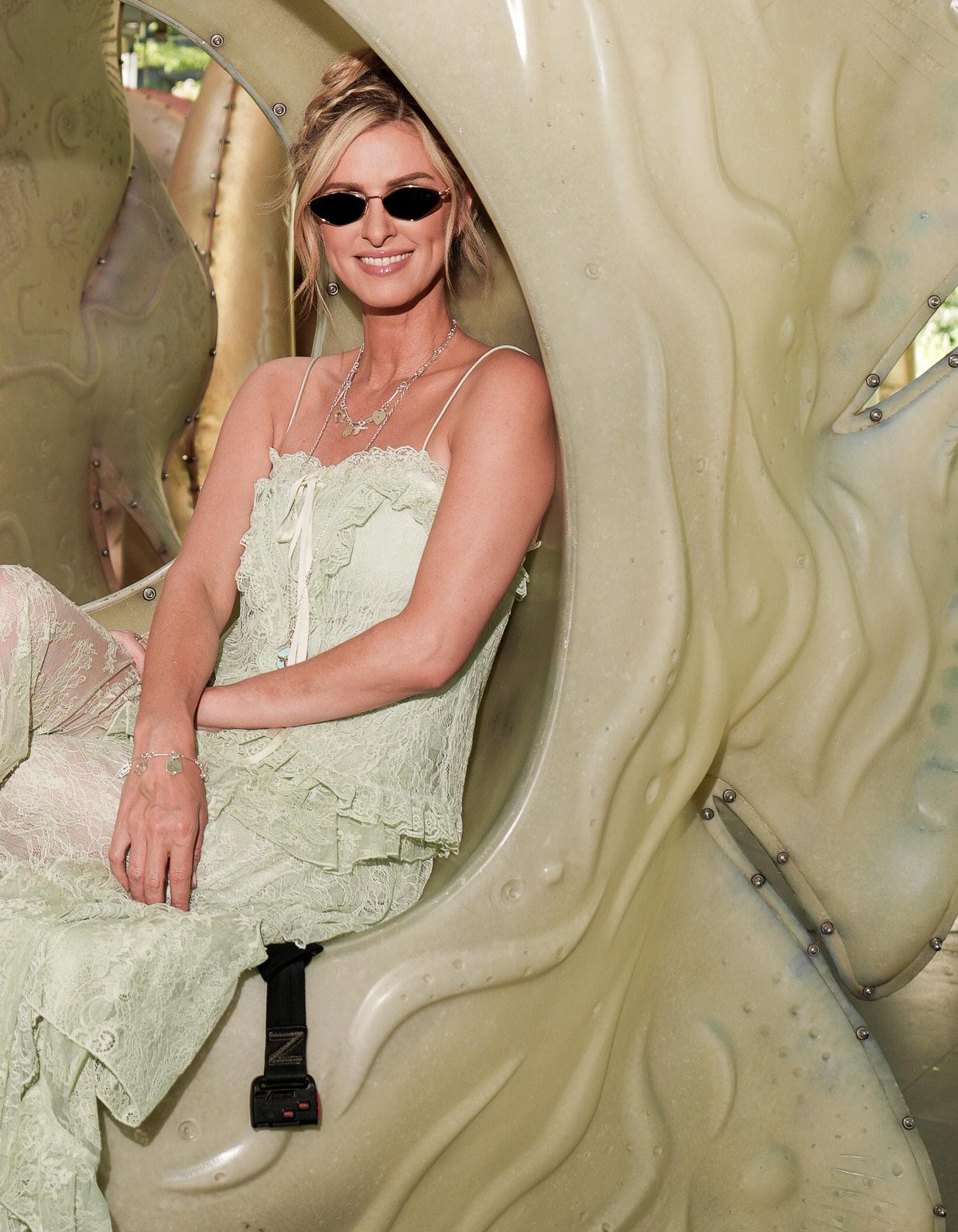

Impact Wealth sat down with the style icon, businesswoman, and mother of two to talk about the inspiration behind Theo Grace, what entrepreneurship looks like in this next chapter of her life, and the importance of building a business with heart.
Impact Wealth: Congratulations on the launch of Theo Grace! What inspired you to create this jewelry brand?
Nicky Hilton: Thank you! Theo Grace came from a very personal place. I’ve always loved gifting, especially when it’s sentimental or symbolic. I was looking for keepsake pieces that marked important moments—like the birth of my daughters or wedding anniversaries—and couldn’t find what I envisioned. So I decided to create it. Jewelry is so much more than decoration; it’s a wearable reminder of the people and memories we cherish.
IW: How would you describe the Theo Grace aesthetic?
NH: Timeless, feminine, and meaningful. I love classic designs—pieces that won’t go out of style—but I also wanted them to feel special and unique. Whether it's a charm bracelet with your children’s names or a locket holding a photo of a loved one, these pieces are designed to hold emotional weight.
IW: You’ve had a long career in fashion. How does designing jewelry compare to previous collaborations?
NH: It’s more personal and more immersive. In past projects, I was a creative partner. With Theo Grace, I’m also a founder, which means I’m involved in every aspect— from design to messaging to packaging. It’s a much deeper connection. Every piece we create has my heart in it.
Be patient, ask questions, seek mentorship, and don’t be afraid to take risks. And always lead with intention.Consumers today value brands that stand for something.


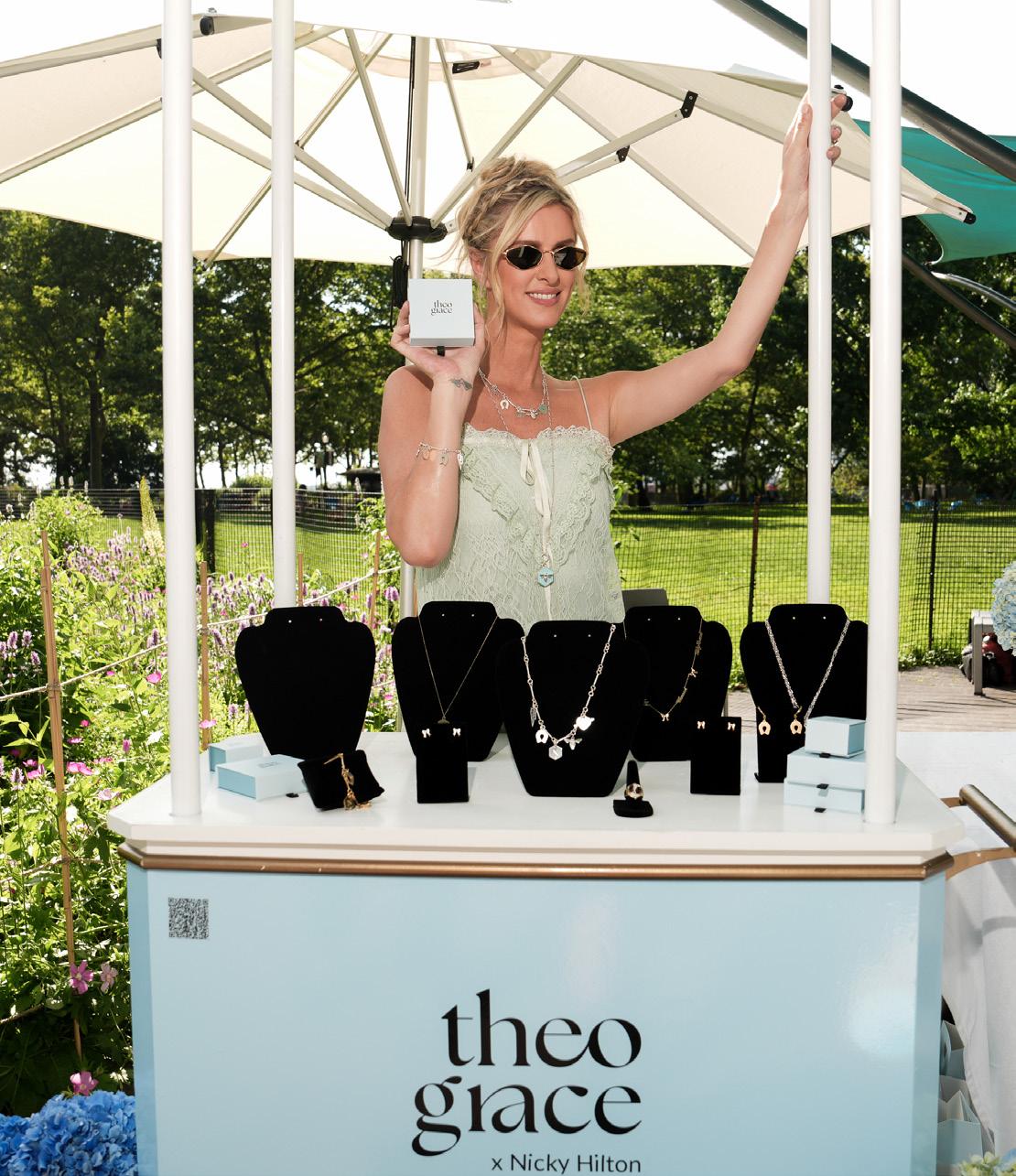
IW: What role does legacy play in the brand?
NH: A huge role. I named the brand after my daughters, Theodora and Lily-Grace, so it feels like a living tribute to them. I want Theo Grace to be something they can look back on with pride. Jewelry is often passed down from generation to generation, and I hope these pieces become part of people’s legacies.
IW: How do you define success in this phase of your entrepreneurial journey?
NH: For me, success is creating something that connects with people. I love hearing stories about why someone chose a piece—what it means to them, who they’re giving it to. It’s about building a brand that has emotional value and lasting impact.
IW: What advice do you have for women looking to start their own brand?
NH: Start with what you love. Passion is everything—it fuels you during the hard times and helps you connect with your audience authentically. Be patient, ask questions, seek mentorship, and don’t be afraid to take risks. And always lead with intention. Consumers today value brands that stand for something.
IW: You’ve mentioned possibly expanding into other categories. What’s next for Theo Grace?
NH: Right now, the focus is on growing the jewelry line. But I do see potential for expanding into home or lifestyle products that also celebrate personal storytelling. Whatever we do next will have the same foundation— emotion, meaning, and timeless design.
IW: Lastly, what do you hope your daughters learn from seeing you build this brand?
NH: I hope they see that it’s possible to build something beautiful when you combine creativity, intention, and hard work. Theo Grace is about honoring life’s most meaningful moments—and that starts with them.
Explore the full Theo Grace collection at www.theograce.com
with Hamptons Employment Agency’s President, Aleksandra Kardwell
Aleksandra Kardwell, founder and president of Hamptons Employment Agency, Inc., and author of How to Find, Hire, and Keep the Right Domestic Professionals: The Household Employer’s Guide to Hiring Great Employees Who Will Stay for Years, shares her insights about the current household staffing environment.
What are you currently seeing in the domestic staffing market?
At Hamptons Employment Agency, we’re having another very busy 2025. Client demand for household staff is strong, and experienced professionals are quickly securing well-paying jobs. Fortunately for employers, worker salaries have leveled off, after a substantial run up from 2020 - 2024. As for staff availability, our large and timely database of experienced professionals allows us to help virtually all household employers who seek our assistance.
What’s new for you this year?
I’m currently working on the second edition of my book, How to Find, Hire, and Keep the Right Domestic Professionals: The Household Employer’s Guide to Hiring Great Employees Who Will Stay for Years. The new edition is scheduled to be available this fall, and it will include many timely updates, including current salary range figures and revised legal and tax sections. I think this information will be very useful for clients and others seeking up-to-date information on household staffing, all in one place.
Do you have any advice based on the upcoming second edition of your book?

Sticking to the fundamentals of finding, hiring, and keeping great domestic staff is important. Using effective recruitment methods, either directly, or through a qualified agency, is key to attracting qualified candidates that meet your needs and preferences. The market for strong employees is still rather tight, so be ready to extend an offer quickly when you find someone who’s right for you. And, again, be sure to offer a market-competitive salary, as most good workers have attractive employment options these days.



To retain your staff members, treat them well, keep them happy, and compensate them appropriately. At a minimum, good employees should get 3-4% annual cost of living raises to outpace current inflation. For permanent employees, end-of-year bonuses are very common, and for summer staff, end-ofseason bonuses are often given to good workers. Additionally, it’s common for household employers to offer health insurance to their full-time workers.
www.HamptonsEmployment.com www.DomesticStaffingBook.com
DOMESTIC STAFFING






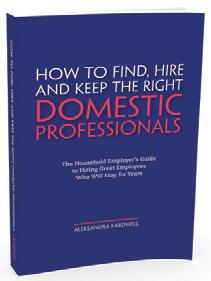


IMPACT WEALTH MAGAZINE PARTY
Honoring Wilbur Ross
By Ana Goldenberg
Photos by Kevin Ostaj

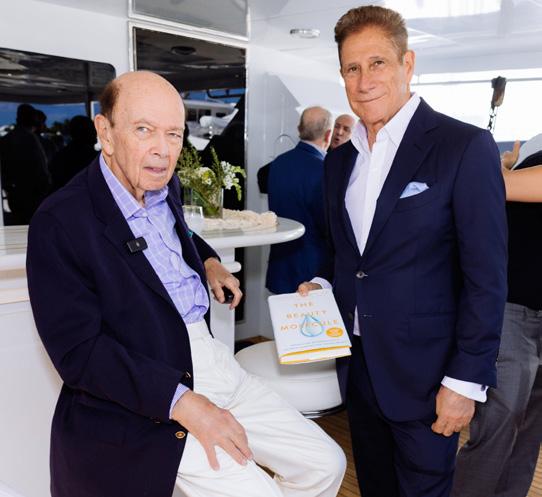
The worlds of wealth, influence, and philanthropy came together for an unforgettable evening as Impact Wealth Magazine and 1640 Society hosted an exclusive “Night Before” celebration in Palm Beach to honor Wilbur Ross, featured on the latest cover of Impact Wealth. The private estate soirée took place on the eve of the Palm Beach conference, setting the tone for a weekend of elite networking and meaningful conversations.
A Star-Studded Affair at a Private Palm Beach Estate
Palm Beach, known for its legacy of luxury and exclusivity, once again proved to be the perfect backdrop for this prestigious gathering. Held at an elegant private estate, the evening welcomed an impressive roster of distinguished guests from business, sports, and philanthropy.
Among the notable attendees were Wilbur Ross and Hillary Geary Ross, joined by celebrated athletes including NFL Hall of Famer Ray Lewis, baseball great Johnny Damon, NBA legend Jermaine O’Neal, and former NFL star Hakeem Nicks.
The event embodied the signature blend of high-level connections and purposeful celebration that both Impact Wealth and 1640 Society are known known for solving strategic challenges, while also surfacing cross-border investment opportunities with real potential for impact.
Celebrating with Style: Luxury Sponsors Elevate the Evening
At this exclusive gathering of influential families, guests enjoyed a curated showcase of fine craftsmanship and elevated experiences. Sparkling diamond creations from Christopher Designs quietly turned heads, while the sleek presence of Ikonic Yachts served as a reminder of refined maritime living. Handcrafted spirits from Naked Diablo and Biatch Tequila added a spirited touch to the evening, complemented by selections from Adobe Road Winery and Fifth American IPA for the discerning palate.
Even wellness had its moment, with Perricone Hydrogen Water offering a refreshing, healthconscious sip amid the night’s festivities. Wellness-Forward Culinary Offerings
A nod to health and wellness was woven throughout the evening, with special thanks to Bolay and Scott’s Protein Balls for providing nutritious food and wholesome snacks that perfectly complemented the luxury atmosphere.
More Than a Party — A Celebration of Vision and Leadership
The Palm Beach gathering not only celebrated Wilbur Ross’s cover feature but also reflected the shared mission of Impact Wealth Magazine and 1640 Society: to connect influential leaders, innovators, and philanthropists in meaningful ways that foster opportunity, leadership, and positive global impact.




FII PRIORITY EUROPE 2025
Investing in a Connected Future
By Candice Beaumont
Photo: Mandel Ngan / AFP - Getty Images
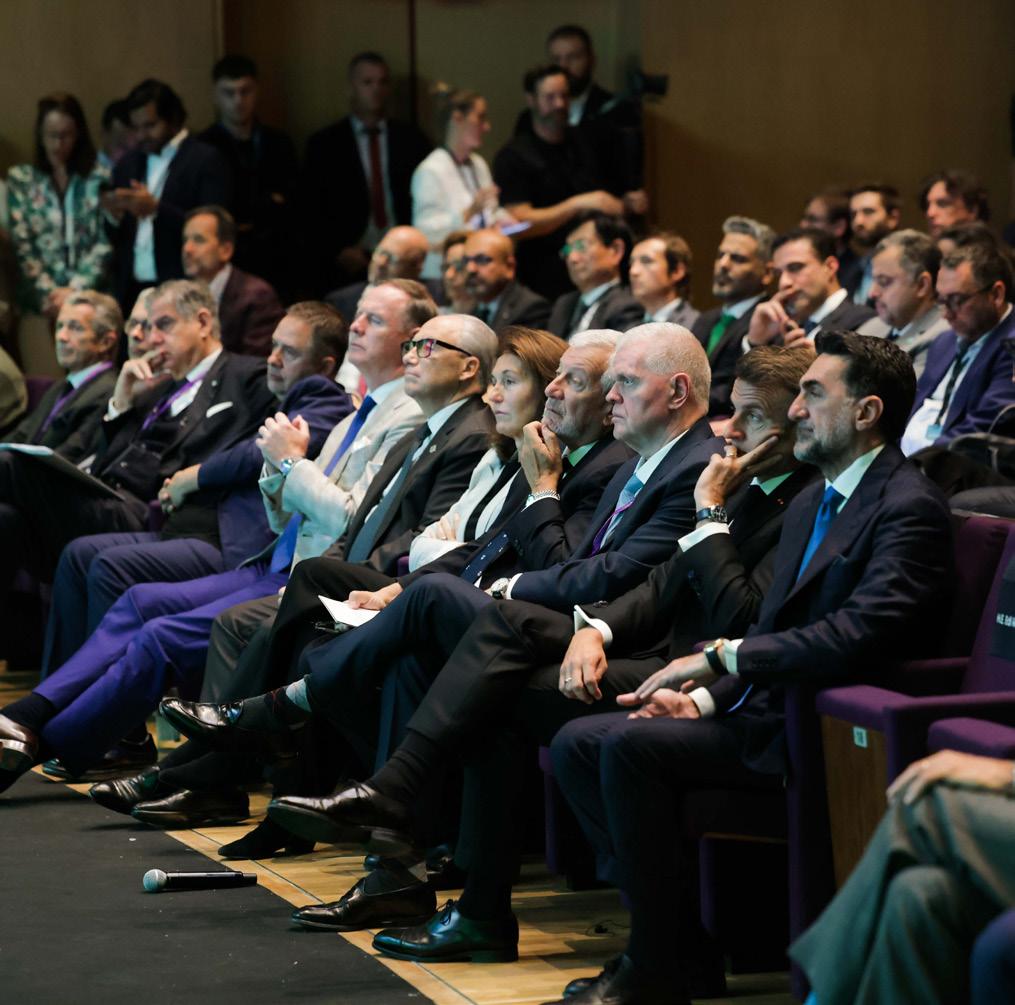



This past May, Tirana, Albania’s capital and emerging diplomatic bridge between Europe and the Global South played host to one of the most consequential gatherings on the global investment calendar: FII PRIORITY Europe 2025. Held at the National Theatre of Opera and Ballet, the two-day summit convened over 600 global leaders, including heads of state, sovereign wealth fund executives, institutional investors, CEOs, and innovators, all focused on a shared imperative: building a more resilient, cohesive, and connected Europe.
Under the theme “Invest in a Connected Europe”, the event marked the European edition of the Future Investment Initiative Institute’s global platform, one that has become increasingly influential in shaping investment diplomacy, industrial policy, and global development strategy.
A Program Built for Action
What set this summit apart was its rigor and relevance. The programming was designed to tackle Europe’s most pressing strategic challenges, while also surfacing cross-border investment opportunities with real potential for impact.
Key thematic areas included:
Energy Transition & Clean Industrial Strategy:
Focused on Europe’s €100 billion Clean Industrial Deal and the investments needed to secure long-term energy independence and green manufacturing capabilities.
Artificial Intelligence & Data Sovereignty:
Discussions addressed Europe’s regulatory leadership and the need to strengthen AI infrastructure, cloud autonomy, and robotics investment.
Biotechnology & Healthcare Resilience: From gene therapies to pandemic prevention, the future of precision medicine and global health equity was a major focus. Industrial Sovereignty & Supply Chain Rebalancing: Emphasizing nearshoring, regional resilience, and new manufacturing corridors across Southern and Eastern Europe.
Cultural Capital, Tourism & Entrepreneurship:
Panels explored how investment in tourism, youth employment, and cultural heritage can drive long-term economic growth.


The summit also featured the release of the Global Future of Work Report, an indepth analysis of Europe’s labor market, demographic transitions, and digital skills gap, offering data-driven insights for both policymakers and investors.
A Stage for Global Decision-Makers
FII PRIORITY Europe attracted an exceptional roster of speakers and contributors:
H.E. Edi Rama, Prime Minister of Albania, opened the summit and reinforced the country’s emerging role in European economic integration.
H.E. Emmanuel Macron, President of France, delivered remarks on strategic autonomy and Europe’s leadership in global sustainability.

Yasir Al-Rumayyan, Chairman of Aramco and Governor of the Public Investment Fund (PIF), highlighted the role of cross-continental investment in advancing shared prosperity.
Mohamed Alabbar, Founder of Emaar, offered a powerful perspective on infrastructure development and smart city capital deployment.
Matteo Renzi, former Italian Prime Minister, joined discussions on policy innovation and inclusive economic reform.
These global voices were joined by the FII Institute’s leadership team, Richard Attias, CEO, and Penny Richards, Managing Director, who curated the summit’s agenda with an emphasis on implementation, not ideology.
Notably, a large number of attendees came from sovereign wealth funds, EU institutions, regional development banks, and global private equity firms, creating a powerful environment for high-level dialogue and partnership-building.
Tirana’s Strategic Moment
Albania’s selection as host country was both symbolic and strategic. Having recently hosted the European Political Community Summit, Tirana is increasingly seen as a venue for European recalibration—a place where capital, policy, and diplomacy intersect.
The city’s rising profile also reflects FII Institute’s ambition to push conversations beyond the usual capitals and into regions that represent the next frontier
of growth. For Southern and Eastern Europe, this means catalyzing investment that addresses infrastructure gaps, accelerates digital transformation, and promotes industrial self-reliance.
The FII Institute: From Dialogue to Deployment
The FII Institute, founded in 2017 and headquartered in Riyadh, continues to distinguish itself as more than a think tank. Built around the pillars of Think, XChange, and Act, the Institute fuses data, convening power, and actionable platforms to address humanity’s most urgent challenges. Xchange organizes the FII Riyadh Flagship Conference in October which is the annual world-leading Conference on the future of global investment for humanity. FII brings global leaders, global CEOs, entrepreneurs, Presidents, Prime Ministers, Heads of States, leading investors, academics and influencers together to foster meaningful discussions, and enlightening workshops to change humanity for the greater good.
Whether through its AI.Inclusive initiative, its Healthy Humanity healthcare agenda, or its work on climate tech and food systems, FII consistently ties ideas to implementation. In Tirana, this philosophy was on full display. Panel conversations translated directly into coalition-building. Strategic
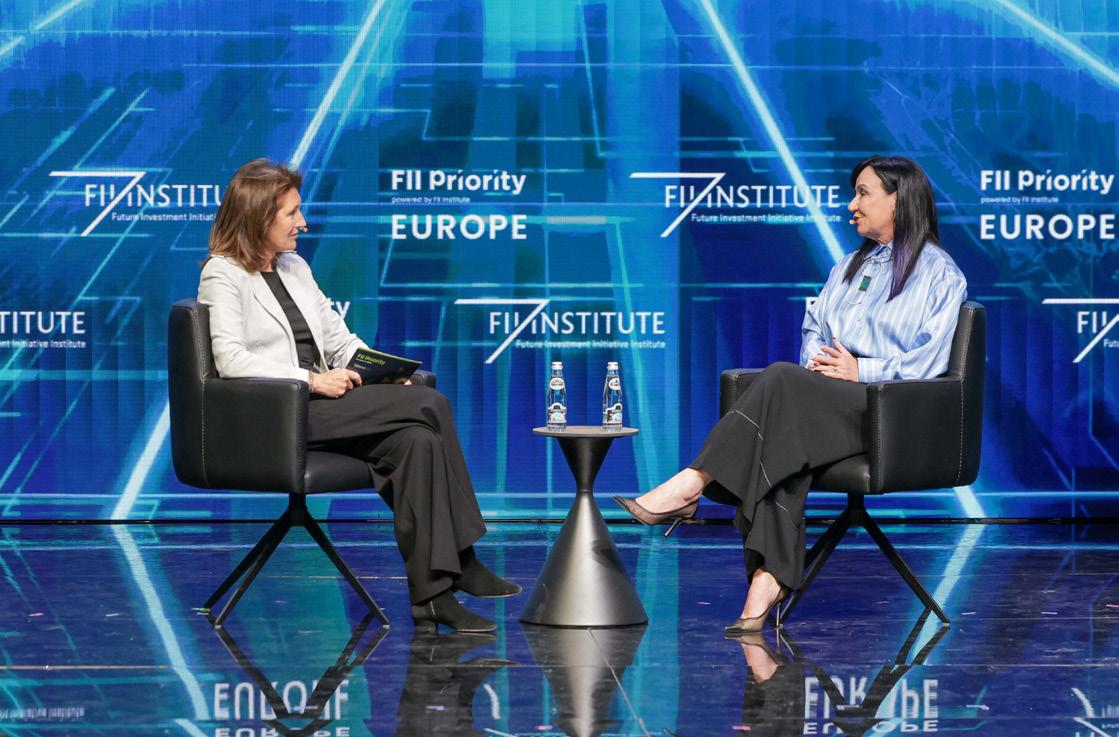


insights gave rise to policy proposals and investor roadmaps. And private-sector leaders found themselves not just talking about innovation, but funding it.
For the World’s Investors, A Message of Momentum
For family offices, wealth managers, institutional allocators, and entrepreneurs alike, FII PRIORITY Europe offered something rare: a clear, informed, and actionable perspective on where Europe is headed— and how global capital can participate.
In a world that often feels paralyzed by complexity, this summit served as a reminder that with the right design, diverse dialogue, and disciplined focus, capital can still be one of the most powerful tools for global progress.
Conclusion: A Continental Recalibration
FII PRIORITY Europe 2025 will be remembered not just for its symbolism or its scenery, but for its substance. In a time when European cohesion is tested by geopolitics, trade tensions, and technological disruption, this summit made a compelling case for connectivity as strategy and not just as a sentiment.
And in doing so, it positioned Europe not as a legacy power, but as a dynamic, investmentready region that is defined not by its past, but by its capacity to shape the future.
UNCHARTED 2025: FROM STARTUPS TO STRATEGY
The Exclusive Gathering That is Shaping the Future
By Candice Beaumont

In a world of crowded conferences and digital noise, the Uncharted Summit has carved out something rare: a truly high-trust space for elite founders, investors, and creators to connect without pretense. Hosted each June in Southampton, New York, this invite-only gathering has evolved far beyond its roots as a dinner series. Now in its fourth year, Uncharted welcomed 600 of the country’s most influential business leaders, representing over $100 billion in collective enterprise value, for a day of meaningful connection, world-class content, and unforgettable experiences.
Held at the private estate of Loeb.nyc founder Michael Loeb, the Summit reflects a philosophy that prioritizes authenticity over access, and relationships over resume. “We do our damndest to bring together the best founders, the best funders, and other top participants in the entrepreneurial community and create safe spaces for them,” says Noah Friedman, Uncharted’s cofounder and CEO. That vision comes alive through every detail of the experience, from its invitation-only guest list to the intentional design of its networking lounges, speaker salons, and waterfront gatherings.
Throughout the day, guests engaged in intimate conversations with some of the most impactful voices in business and culture. The agenda featured headline insights from Tesla
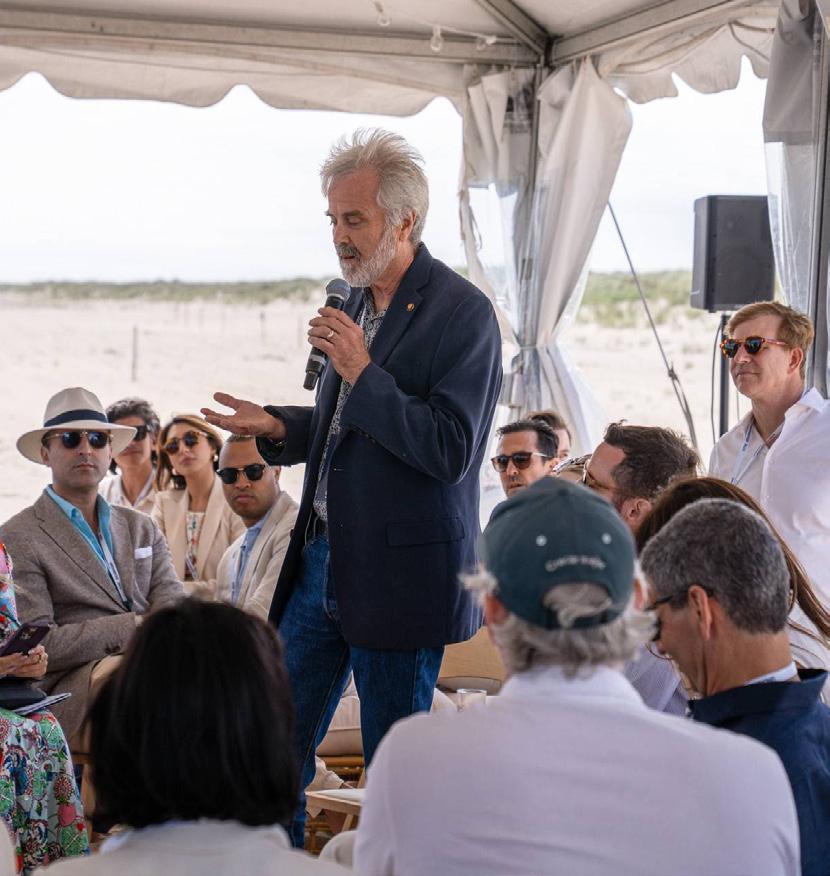
cofounder Martin Eberhard, fashion icon Steve Madden, and Shark Tank’s Daymond John, as well as respected voices like Michael Harris, Vice Chair of the New York Stock Exchange, and venture leaders Rebecca Kaden of Union Square Ventures and Scott Belsky, now a partner at A24. The legendary Chris Voss, FBI hostage negotiator turned bestselling author, brought his distinctive perspective to the art of high-stakes communication. Journalist and former CNN anchor Julia Chatterley and political author Michael Wolff added further depth and dialogue.
The Summit wasn’t just about what happened on stage. It was about the stories that unfolded between sessions. The Uncharted grounds were designed to invite conversation: a beachside tent, shaded lounges, premium food and drink stations, and branded discovery zones all encouraged organic networking. Partners like UBS, EY, Whistler Partners, Gulfstream Aerospace, Sigma Software, and the New York Stock Exchange activated thoughtfully, aligning their presence with the event’s value-driven ethos.
This year also marked Uncharted’s emergence as a hub for live business media. Bloomberg and the New York Stock Exchange produced on-site content, conducting interviews with select guests including Springboard Enterprises’ Kay Koplovitz, Greycroft’s Ian
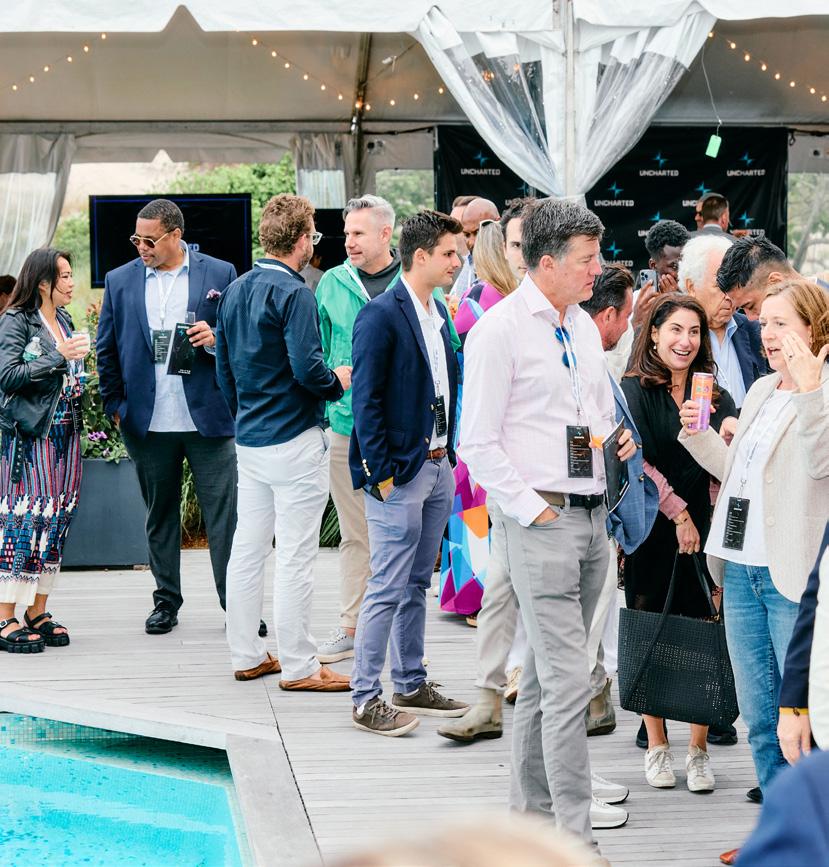


Sigalow, Swizzle Ventures’ Jessica Kamada, and founders like Cody Barbo (Trust & Will), Ryan Breslow (Bolt), and Jessica Mah (Mahway). The coverage amplified not only the caliber of attendees but the Summit’s growing role in shaping the future of entrepreneurship.
And while the intellectual energy was palpable, Uncharted has never been all business. Guests test-drove Aston Martins, swung at a Five Iron Golf simulator, explored a luxury bazaar of brands including Lalique, Stephen Silver, and Speake-Marin, and experienced custom fittings from Brooks Brothers. Cutting-edge demos from companies like SpaceTop previewed the technology of tomorrow, while a choreographed drone show lit up the evening sky, delivering a finale as ambitious as the crowd it dazzled.
Uncharted’s reach doesn’t end when the last glass is raised. Throughout the year, the community gathers for private dinners, emerging trend panels, breakfast salons, cocktail mixers, and women-led evenings. Each touchpoint builds on the trust and momentum created in Southampton, reinforcing what makes this group so potent: curated community, generous exchange, and a shared belief in building what’s next.
In an age of transactional networking, Uncharted is a reminder that the most valuable deals begin not with a pitch. But with a conversation. More information on Uncharted can be found at www.joinuncharted.com

MILKEN GLOBAL CONFERENCE 2025
Navigating Uncertainty
Toward a Flourishing Tomorrow
By Candice Beaumont
The 2025 Milken Institute Global Conference brought together pioneers in business, technology, health, and policy to discuss critical issues shaping the future of our world. During the first week of May, the Beverly Hilton in Los Angeles once again became the epicenter of global capital, innovation, and influence. Now in its 28th year, the conference welcomed over 5,000 participants from more than 80 countries, among them heads of state, Fortune 500 CEOs, asset managers, renowned scientists, cultural icons, and philanthropic leaders. Centered on the theme “Toward a Flourishing Future,” this year’s gathering wasn’t just a meeting of minds, it was a launchpad for solutions, partnerships, and investments aimed at driving real-world impact over the next decade. The Global Conference has become beacon of light for the world and a catalyst for actionable solutions, where bold ideas meet capital, and conversations become commitments shaping the next decade.
From Ideas to Impact: Milken’s Agenda for Urgent Global Action
Milken is not a conference for optics. It is a forum for ideas that demand action. The 2025 program featured more than 200 sessions structured across critical themes:
• Artificial Intelligence & Emerging Technologies, with panels on governance, productivity, and the competitive dynamics of frontier innovation.
• Energy, Climate, and Environment, focusing on sustainable finance, adaptation strategies, and clean energy investment.
• Health & Global Wellness, from preventative medicine to pandemic preparedness and mental health equity.
• Global Finance & Capital Markets, with sessions diving into interest rate strategy, private equity trends, protectionism, and de-dollarization.
• Philanthropy, Human Capital & Inclusive Growth, exploring how capital can fund systems-level change through education, impact investing, and community-led development.
The format included mainstage discussions, off-the-record roundtables, curated networking salons, and highly targeted investment meetings. It was an ecosystem designed to bridge public and private influence, without silos, and without pretense.

This year’s speaker roster reflected Milken’s unique convening power across continents and sectors. Among the featured voices:
• First Lady Jill Biden, who spoke powerfully on education reform, cancer research, and mental health initiatives.
• Ajay Banga, President of the World Bank, and Kristalina Georgieva, Managing Director of the IMF, offering perspective on economic inclusion and systemic resilience.
• CEOs including Jensen Huang (Nvidia), Jane Fraser (Citigroup), Mary Barra (General Motors), and Marc Benioff (Salesforce), who brought forward-looking strategies on AI, ESG, and corporate innovation.
• Public intellectuals and leaders like Ken Griffin, Scott Bessent, and Larry Summers, who sparred on U.S. trade strategy, inflation, and global monetary policy.
• Icons such as David Beckham, Magic Johnson, and Pitbull, adding a cultural dimension to discussions on branding, sports equity, and generational philanthropy.
The presence of global ministers, central bankers, venture capitalists, Nobel laureates, and social entrepreneurs added further layers of richness, and reminded all that prosperity is as much about design as it is about investment.
Flashpoint: The Tariff Debate
One of the most closely watched exchanges took place between U.S. Treasury Secretary Scott Bessent and Citadel CEO Ken Griffin, who delivered opposing views on the future of American trade policy. While Bessent defended tariffs as a national economic strategy, Griffin cautioned against the long-term risks of protectionism, describing it as a gateway to “crony capitalism.”
It was a defining moment for the conference, a reminder that Milken remains one of the few global stages where high-stakes disagreements are aired publicly and constructively, with decision-makers in the room.
A Constellation of Global Voices
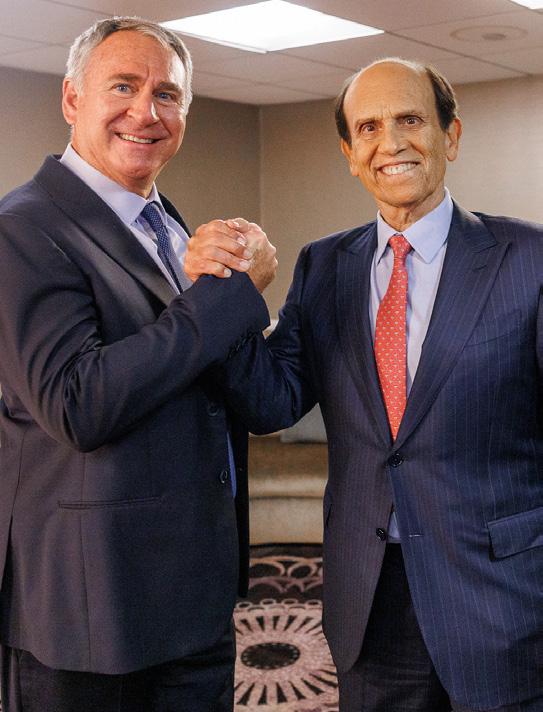
Confidence Behind Closed Doors
Though public sessions addressed serious risks, including geopolitical tension, economic fragmentation, climate disruption, the private tone was far more optimistic. In high-level salons and investor circles, confidence in U.S. markets remained firm. Family offices, sovereign wealth funds, and institutional investors expressed continued interest in sectors such as AI, infrastructure, biotech, and energy.
Exhibitions featured demonstrations of self-driving technology, clean mobility platforms, and healthcare breakthroughs. Evenings included high-powered dinners and private concerts, underscoring the social gravity of Milken. It is a place where global networks are not only forged, but fortified.
Climate Finance: From Commitments to Capital
One major evolution was the tone around climate change. While net-zero remains a goal, the new conversation was more grounded. Attendees discussed physical risk mitigation, private credit as a climate tool, and blended finance structures that balance public risk with private return. The mood reflected a shift from declarations to execution.
Rather than climate guilt, the emphasis was on climate opportunity, especially in emerging markets, frontier tech, and urban resiliency investments.




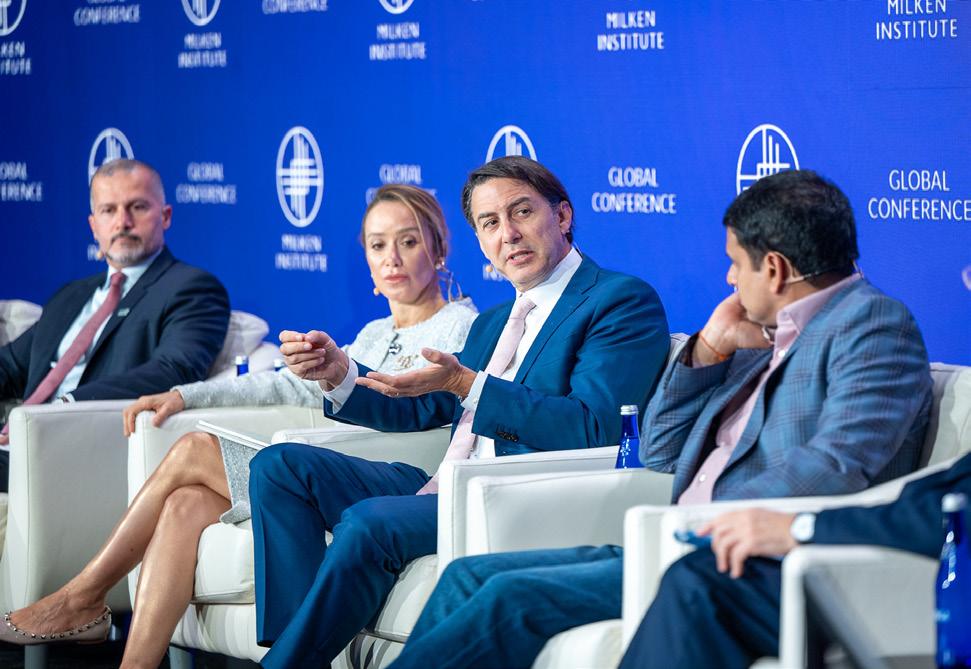


What It Means for Wealth Leaders
For the ultra-affluent, Milken Global 2025 reaffirmed several key messages:
• Resilience is now a baseline, not an aspiration. Portfolios and strategies must navigate volatility as a constant.
• Private capital is expected to lead, not follow. The public sector is looking to family offices and private equity for scalable solutions.
• Access matters. Insight alone isn’t enough. Milken offers the relationships and realtime visibility that enable co-investment, deal sourcing, and policy anticipation.
• Legacy is leverage. Impact and influence are no longer opposites. This is where capital becomes character.
Final Reflections: A Gathering That Moves Markets
As the conference drew to a close, one theme rang louder than the rest: progress is possible, but only if it's intentional.
Milken Global 2025 proved once again why it remains one of the most important convenings of the year. Not just because of who shows up—but because of what they leave with: sharper strategies, new partnerships, and a deeper understanding of how capital must evolve in a world defined by transition.
In an era where credibility and foresight are currency, this conference delivered both, and did so with clarity, confidence, and community.

NAKED DIABLO Ignites Marbella with a Fiery European Debut
By Cristina Dangond
The glittering shores of the Costa del Sol lit up with high energy and high spirits as Naked Diablo Tequila hosted an exclusive launch party in none other than worldfamous Marbella. The event, held at one of the European partners luxurious beachfront villa, brought together a stunning blend of celebrity guests, influencers, industry insiders, and tequila connoisseurs for a night that delivered as much heat as the brand itself.
A Premium Brand with Bold Roots
Already a cult favorite in the United States, Naked Diablo is known for its ultrapremium handcrafted tequilas, made in Jalisco, Mexico and aged in American oak whiskey barrels. The launch in Marbella marks the brand’s official entry into the European luxury market, bringing its bold taste and unique attitude to a continent that appreciates both tradition and edge.
“Naked Diablo is not just a tequila — it’s a lifestyle, a statement, a little danger in every pour,” said one of the brand’s global ambassadors during the welcome toast. “And tonight, we bring that spirit to Spain.”
Where Riviera Chic Met Devil-May-Care Edge
The scene blended coastal elegance with rebellious sophistication. Guests arrived in effortless resort glamour—tailored linen, bronzed shoulders, and just enough leather to hint at danger. Signature cocktails like the Smoked Reposado Margarita and the Blanco Diablo Paloma flowed generously, perfectly paired with Mediterranean fusion fare crafted to echo the tequila’s layered complexity.
As twilight descended, the energy surged. A surprise DJ set from a globally celebrated artist ignited the beachfront, while fire dancers illuminated the midnight hour in a mesmerizing display that honored the “diablo” at the heart of the brand.
A Guest List Written in Gold
The launch drew a handpicked crowd of European celebrities, luxury lifestyle influencers, elite nightlife personalities, and even a few international athletes escaping training for one summer night of indulgence. Security was discreet but unyielding, ensuring the ambiance remained as exclusive as the bottles being poured.
Industry whispers suggest this is just the opening act. With Ibiza, Monaco, and SaintTropez already rumored as the next stops, Naked Diablo appears poised for a full-scale European takeover—one bold pour at a time.
A Night That Left Its Mark
The evening crescendoed with fireworks cascading over the sea, as bottles of Naked Diablo Extra Añejo passed between private cabanas in celebratory toasts. More than a launch, it was a declaration: Naked Diablo has arrived, and it’s rewriting the rules of luxury tequila in Europe.
Bold. Refined. Untamed. Just like the spirit itself.

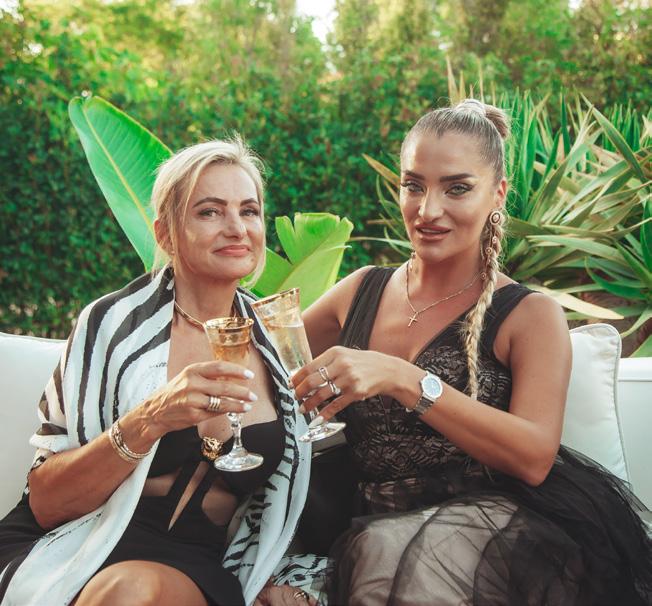

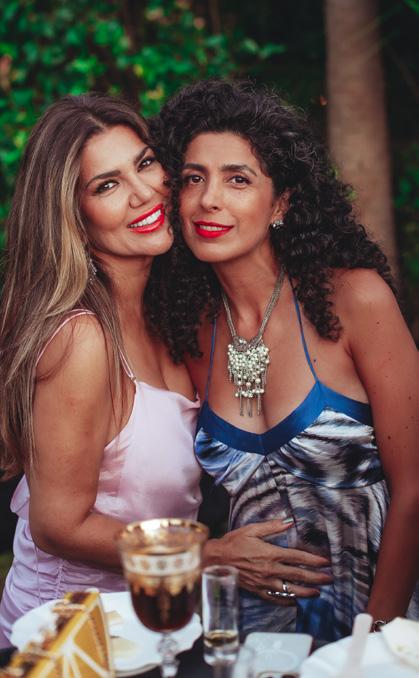

CELESTIAL SPLENDOR
By Candice Beaumont




In an unforgettable convergence of art, elegance, and generosity, the Parrish Art Museum welcomed more than 720 esteemed guests on Saturday, July 19 for its most anticipated annual benefit: the 2025 Midsummer Gala, themed Echoes of the Cosmos. Under a stardrenched Hamptons sky, the evening raised nearly $1.4 million in support of the Museum’s exhibitions, educational initiatives, and inclusive programming— marking a significant milestone for the cultural cornerstone of the East End.
Held throughout the Museum’s sprawling terraces, meadows, and architectural interiors, the gala offered an experience that was both intimate and radiant. From custom cocktails to collector cars and choreographed performance, every detail reflected the Museum’s mission to merge creativity, community, and world-class artistry.
Honoring Cultural Catalysts

The evening’s program honored five visionaries who exemplify artistic impact and philanthropic excellence.
Executive Director Mónica Ramírez-Montagut recognized artists Sanford Biggers, Rafael Lozano-Hemmer, and Nina Yankowitz for their boundary-pushing contributions to contemporary art, each with practices spanning painting, sculpture, video, sound, and immersive installation. “We celebrate the artistic vision and bold innovation of Sanford, Nina, and Rafael—each of whom continues to inspire our community through their extraordinary work,” said Ramírez-Montagut.
Also honored were longtime patrons Sandy and Stephen Perlbinder, who have played a foundational role in the Parrish’s evolution through decades of leadership
and giving. “Sandy and Stephen embody the essence of arts patrons: deeply engaged, endlessly curious, and unwavering in their support,” said Ramírez-Montagut. “It is a profound privilege to honor their legacy.”
A Night to Remember—and Give Back
The gala’s fundraising centerpiece—a dynamic paddle raise led by Kimberly Pirtle Gabriel of Sotheby’s—helped drive support for two flagship initiatives:
ACCESS PARRISH, which creates personalized art experiences for individuals with disabilities, neurological conditions, or chronic illness, including Alzheimer’s, autism, cancer, and Parkinson’s
Artscope: Teen Council, a mentorship program introducing high school students to the professional arts ecosystem
As the Museum’s single largest annual fundraiser, the Gala not only supports its year-round operations, but also fuels its continued commitment to inclusion and community connection through art.
Craftsmanship on Display: Hedley Studios Collaboration
Guests arriving at cocktail hour were greeted by a dazzling outdoor installation of limited-edition electric collector cars from Hedley Studios—a house of modern automotive artistry and one of the evening’s Presenting Sponsors.
Founder Ben Hedley shared the studio’s enthusiasm: “What an honor it is for Hedley Studios to be at The Parrish Museum and present our classic car recreations in the presence of such accomplished artists and this very generous community… It’s an inspiration for our own work, bringing legacy craftsmanship to a new generation.”
The cars, drivable works of art, were displayed on the Museum’s meadows, and echoed the event’s theme of timeless elegance and bold design.
Dining, Dancing, and Distinction
Guests were treated to an exquisite sunset dinner on the Mildred C. Brinn Terrace, followed by the Afterglow Dance Party, where DJ Inflyt kept the Lichtenstein Theater alive with energy late into the night. Throughout the evening, acclaimed Parsons Dance performed site-specific works, offering a contemporary counterpoint to the evening’s elegant ambiance.
Signature cocktails and tastings were provided by Casa Dragones Tequila, who returned as a Presenting Sponsor alongside Northern Trust and Hedley Studios.
The event was expertly stewarded by Dinner Chair Charlotte Lucas Pilaro and Afterglow Chair Laurence Milstein, with support from Host Committee members including Elizabeth and David Granville-Smith, Alexandra Stanton, Yanina Fuertes, and Frederic M. Seegal.




An Influential Guest List
The evening brought together a remarkable cross-section of the art world, cultural leadership, and civic society. Among those in attendance were:
Artists: Sanford Biggers, Eric Fischl, April Gornik, Sheree Hovsepian, Rashid Johnson, Michelle Stuart, Mickalene Thomas, Shantell Martin, Sean Scully, Nina Yankowitz, Arcmanoro Niles, and Joan Semmel
Cultural and civic figures: Erin Burnett, Steve Israel, Sandra Lee, Bertha González Nieves, John Paulson, Casey Fremont, Ramona Singer, Joey Wölffer, Nina Sarin, and Mayor William Manger Jr.
The Museum’s Board of Trustees, led by CoChairs Frederic M. Seegal and Alexandra Stanton, Vice President Sandy Perlbinder, and Secretary Martha McLanahan, was present in full force, reflecting the enduring leadership that continues to propel the Parrish into the next era of artistic innovation.
Support and Sponsorship
The Gala was made possible through the generous backing of:
Presenting Sponsors: Casa Dragones Tequila, Hedley Studios, Northern Trust
Additional Sponsors: Crozier Fine Arts, MAVIK, Wells Group, Greenberg Traurig, Wölffer Estate Vineyard, Campari Group, Lisson Gallery, Verity Investigative Group, and more.
A Vision Made Real
“It’s been a joy to support the Parrish Art Museum this summer—from the Midsummer Gala to the Sean Scully exhibition—as part of our shared commitment to expanding creative opportunity and building community through the arts,” said Jennifer Smith, Senior Managing Director at Northern Trust.
With creativity in motion, patrons united, and millions raised for meaningful impact, the 2025 Midsummer Gala did more than dazzle—it reaffirmed the Parrish’s role as a beacon of culture and catalyst for change on the East End and far beyond.
Photos: Matt Borkowski
POWER AND LEGACY
Inside the Elite Exclusive 1640 Society Family Office Forum in Palm Beach
By Ana Goldenberg

Global family office principals, CEOs, CIO’s billionaires, and C-level executives gathered in Palm Beach for the 1640 Society Family Office Wealth Forum, an invitation-only event limited to just 200 participants. Held at a private country club, the Forum convened prominent families and investors from across Asia, the Middle East, Europe, and Latin America, many of whom arrived via private aircraft. The 1640 Society serves as a global exchange for influential multigenerational families and private capital allocators, offering a platform for strategic dialogue and cross-border investment insights. The annual Palm Beach forum brings together a curated group of wealth owners, heirs, and senior decision-makers for private, offthe-record discussions on global markets, governance, legacy, and the shifting dynamics of ultra-high-net-worth capital.
The Forum began Sunday evening at an iconic private 10 acre estate in Palm Beach with Grammy award winning singer belting out hits until late in the evening while guests mingled over cocktails and dinner.
The 1640 Society Family Office Wealth Forum opened on Monday with welcoming remarks from one of Latin America’s most prominent billionaire families, who also served as Chair of the conference. What followed was a day of dynamic, high-level discussions led by global business icons and next-generation wealth stewards.
A prominent U.S. billionaire shared insights on transitioning from institutional investing to managing his own single-family office, while a European entrepreneur, fresh off multiple multi-billion-dollar exits, discussed his latest ventures disrupting the global food value chain. Leading private real estate funds presented current macro strategies, followed by a curated session on the legacy and craftsmanship of high jewelry, including an in-depth exploration of Bvlgari’s global brand.
The day also featured notable multigenerational entrepreneurs, including Chris and Tim Gannon, both U.S. Open polo champions and founders of the Outback Steakhouse empire and Bolay respectively speaking alongside the Motwani family, whose investments helped shape the Fort Lauderdale skyline.
Related Ross CEO, founder, & owner of the Miami Dolphins, Stephen Ross delivered a compelling presentation on his philanthropic efforts and his vision for the transformation of West Palm Beach into a next-generation urban hub. His remarks struck a chord with many in the audience; several families commented afterward that they were so inspired by the presentation, they changed their travel plans and began exploring property purchases in Ross’s developments. Some even considering relocating from New York and Chicago to West Palm Beach.
Ambassador Gordon Sondland moderated a timely fireside chat on geopolitics and markets with Hon. Wilbur Ross, distressed-debt investor and former U.S. Secretary of Commerce.
A highlight of the Forum included a special panel with legends from the world of professional sports, where NBA All-Star Jermaine O’Neal, Super Bowl Champion Hakeem Nicks, two-time World Series winner Johnny Damon, and two-time Super Bowl Champion Ahmad Bradshaw shared leadership lessons from the field to the boardroom.
The day concluded with a powerful keynote by NFL Hall of Famer Ray Lewis, who spoke on legacy, philanthropy, and the responsibility of wealth in uplifting future generations. Conversations at the Forum were diverse
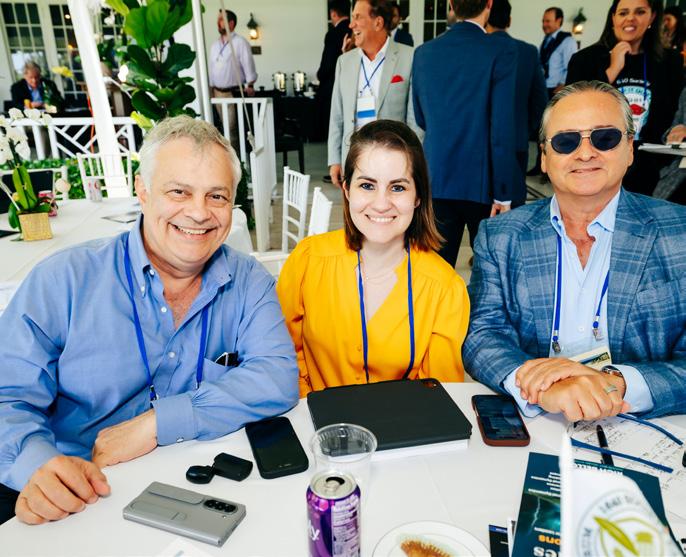




and intriguing ranged from families who owned sports teams comparing notes to families discussing buying islands, farms to one of the billionaires from Ukraine discussing with several US based politically connected Governors how to solve the war with Russia. The day ended with guests mingled over cocktails.
With many of the most influential families in Palm Beach in attendance, admission to the 1640 Society Family Office Forum remains highly selective. Structured more like a private investment club than a typical conference, the Society implements a rigorous vetting process, approving only a few hundred families each year from a large pool of applicants.
Those granted access represent some of the most established names in global wealth and legacy capital, including members of the Pitcairn, Kennedy, Bush, Firestone, Ford, Rockefeller, Bronfman, Kettering, Getty, Kluge, Pritzker, Johnson, Heinz, Hunt, and Musk families. The guest list also featured international business dynasties such as India’s Mittal family and Europe’s Pears family, underscoring the global scale and stature of the network.
